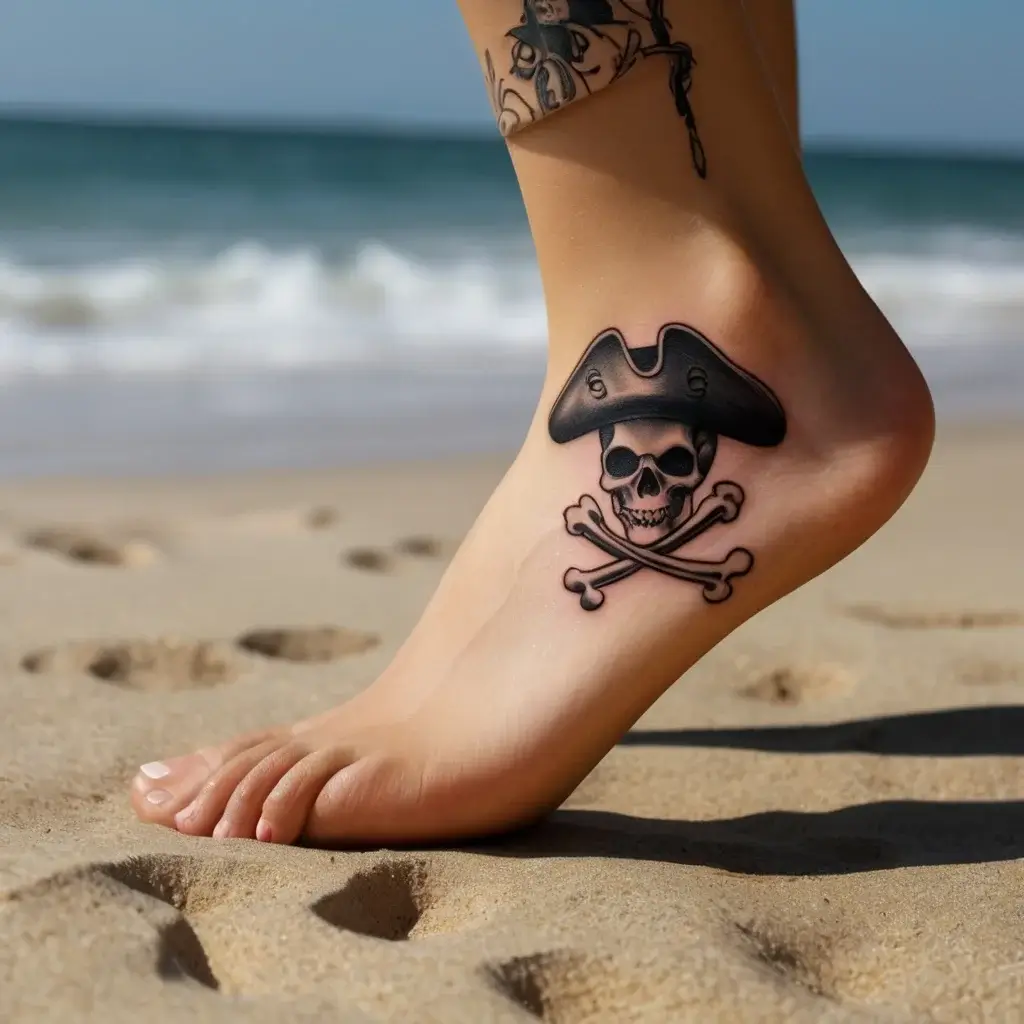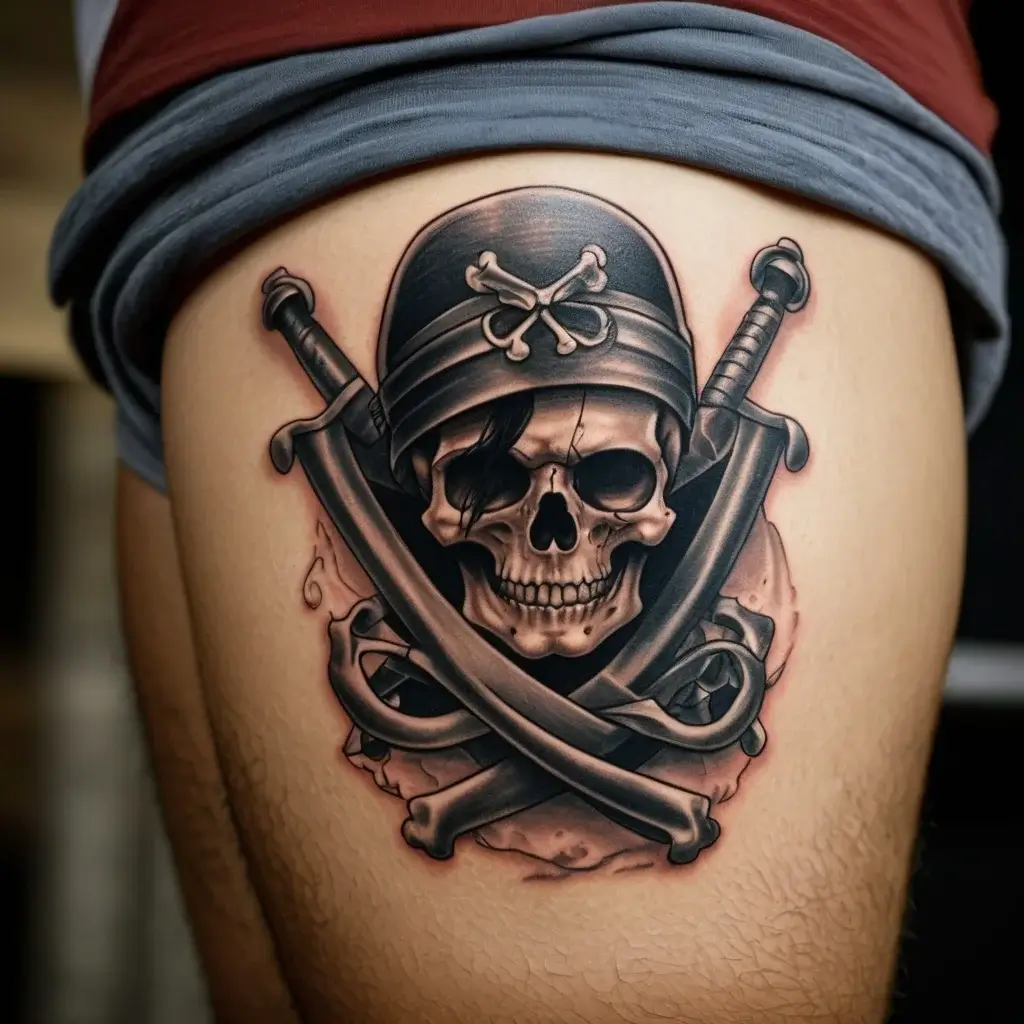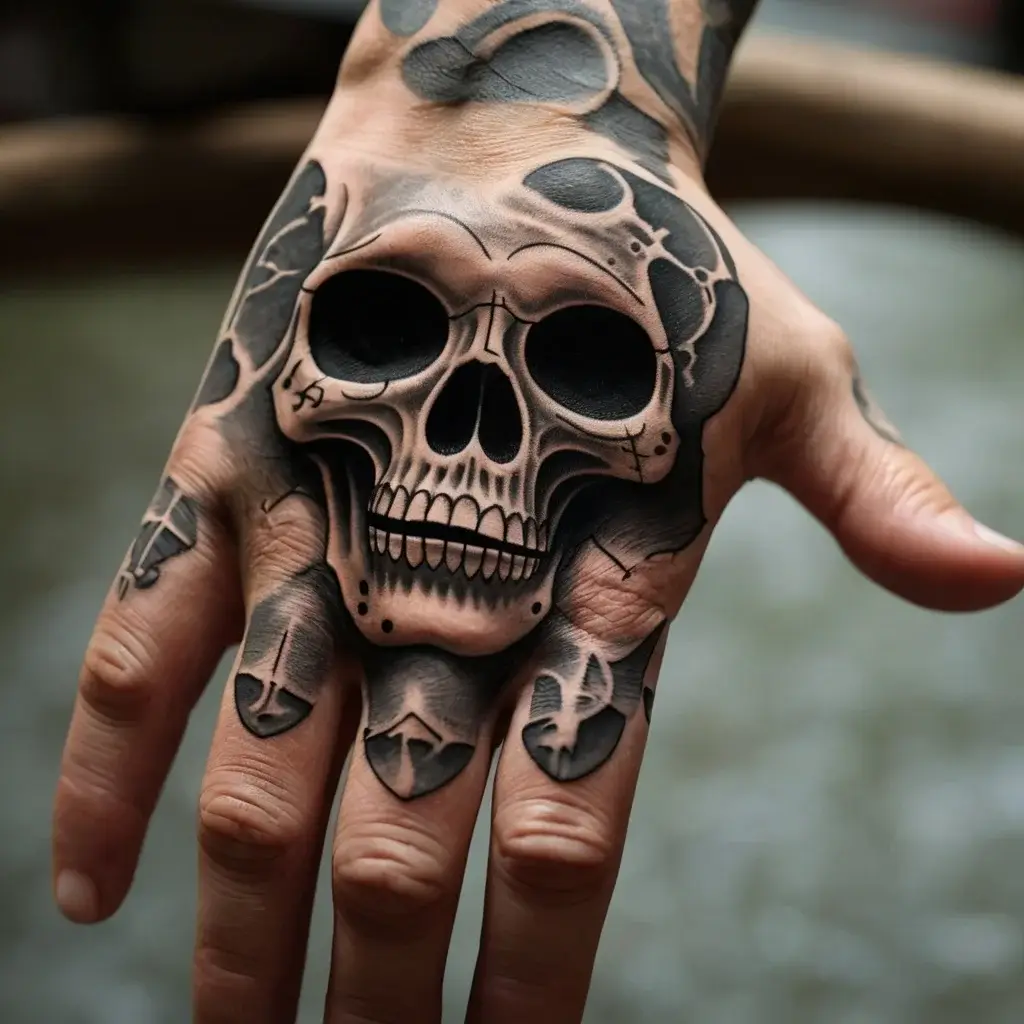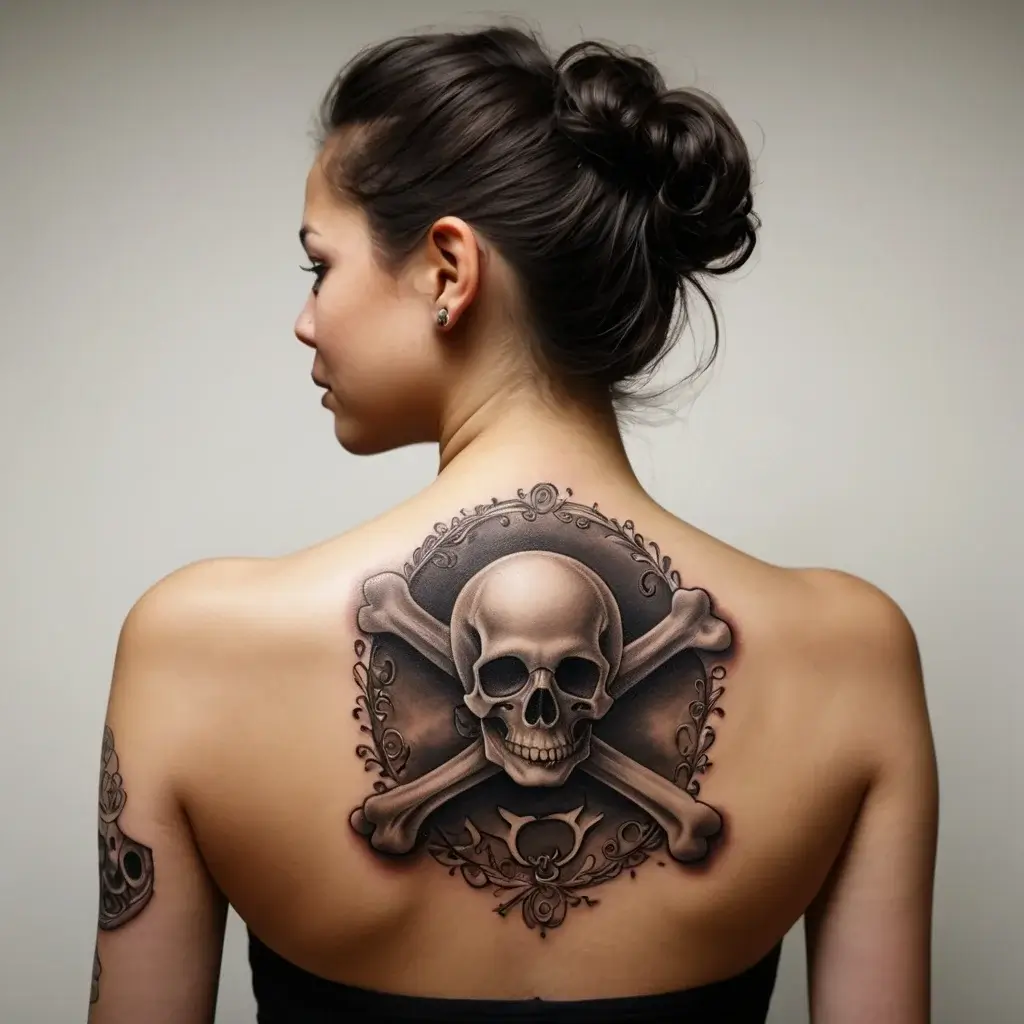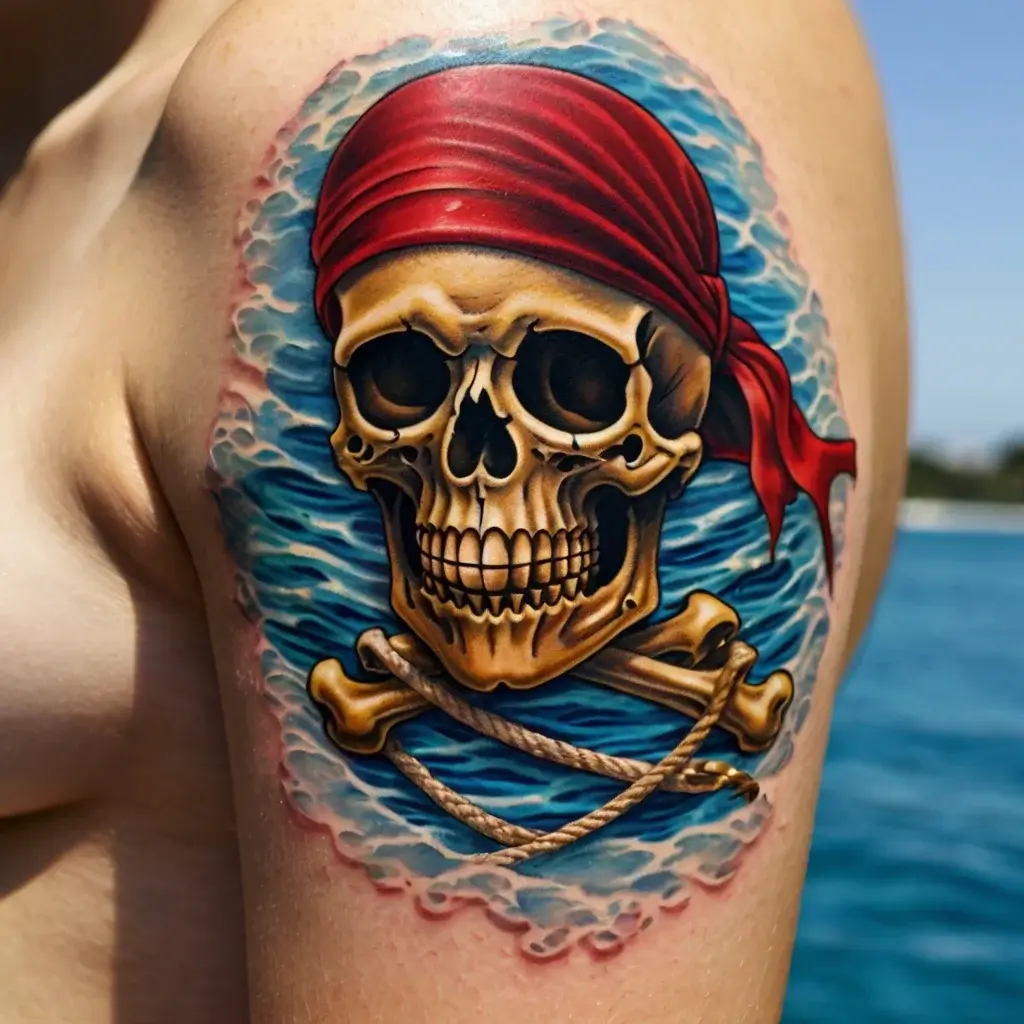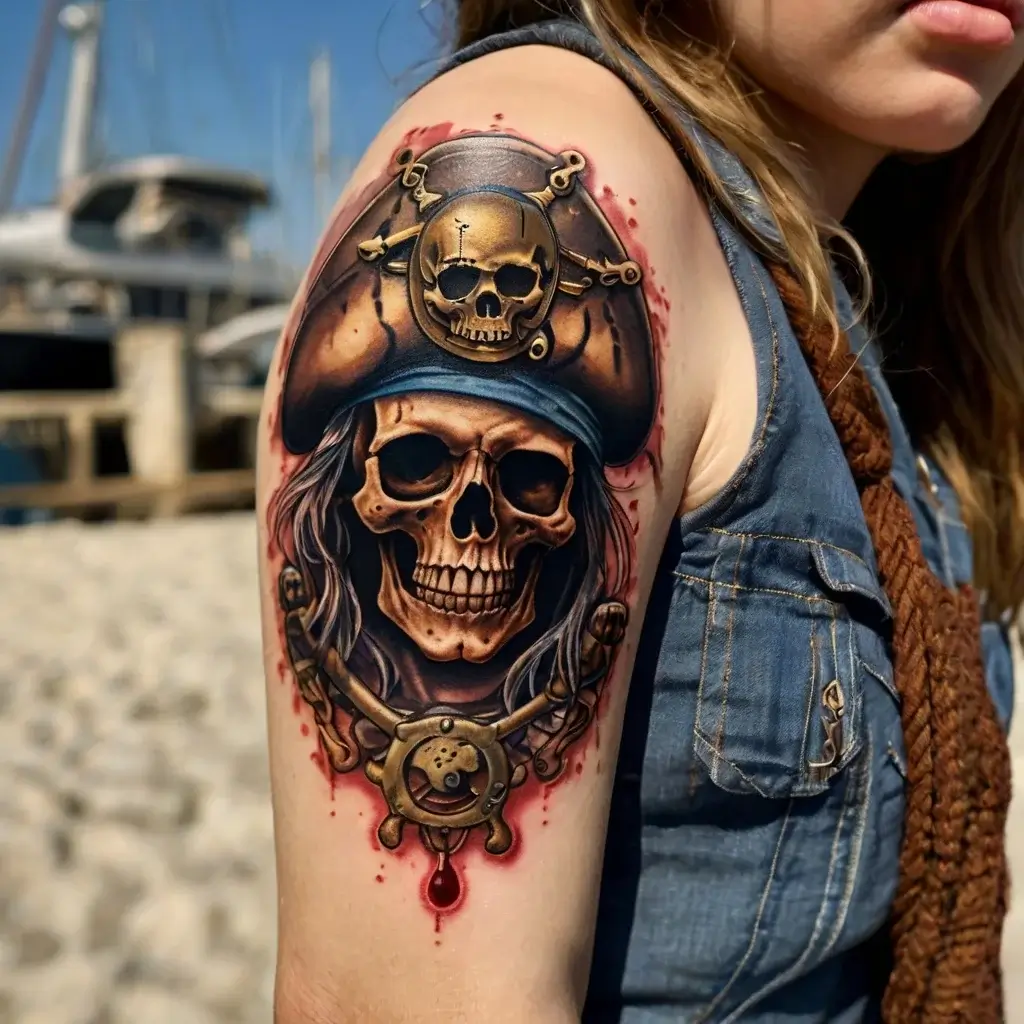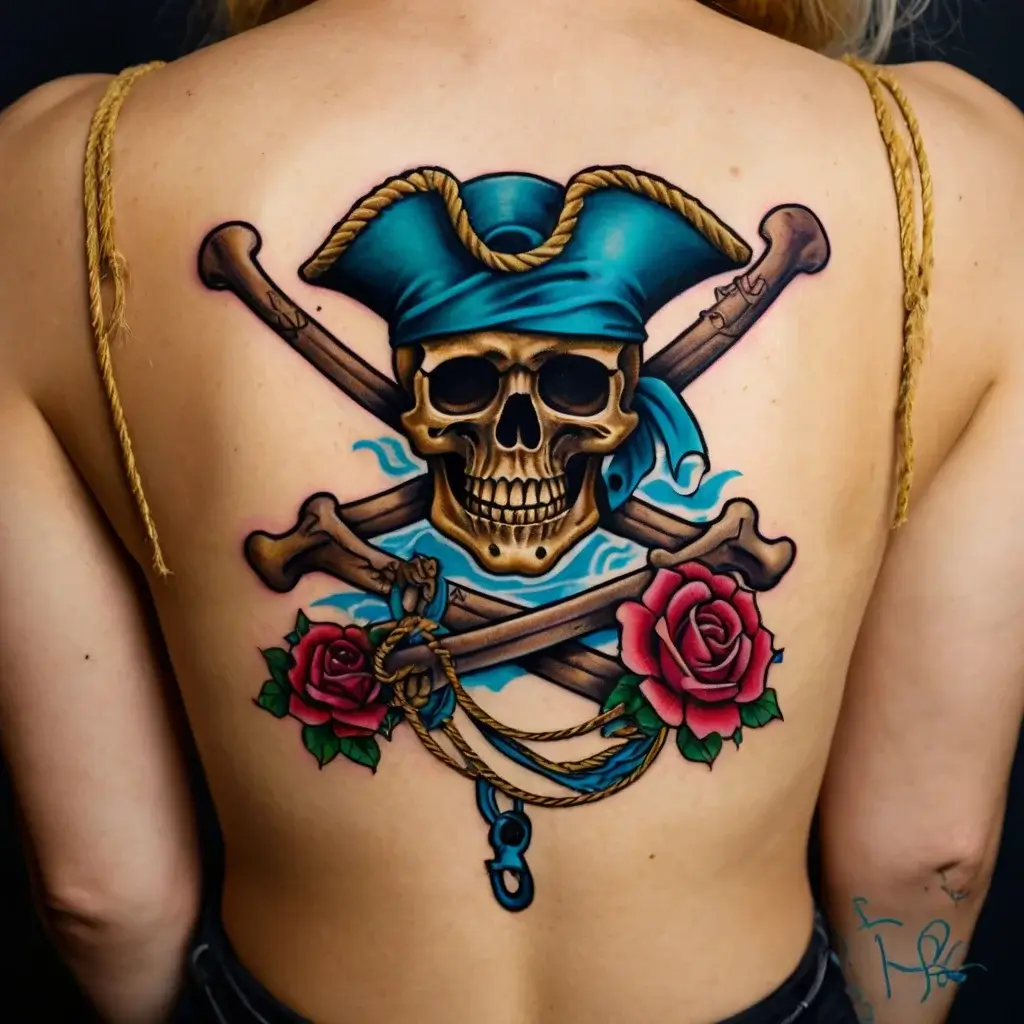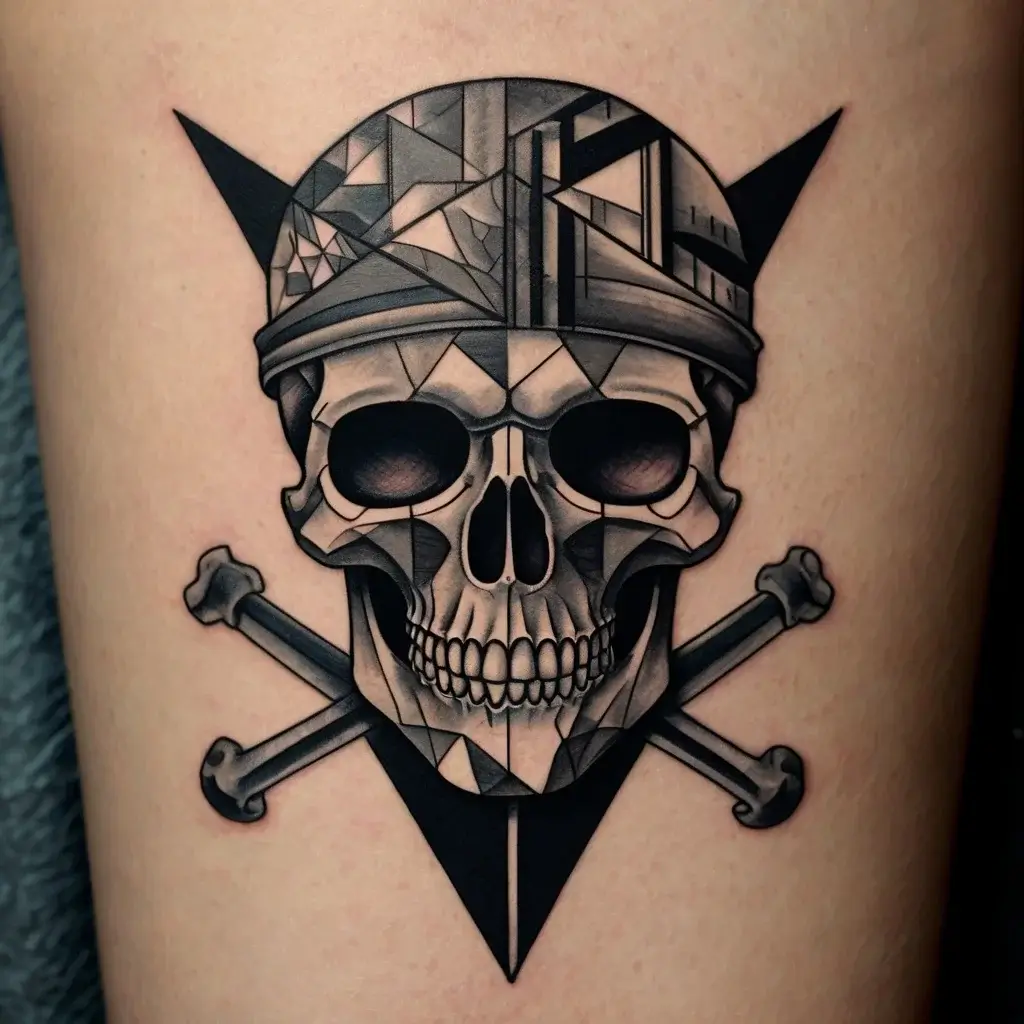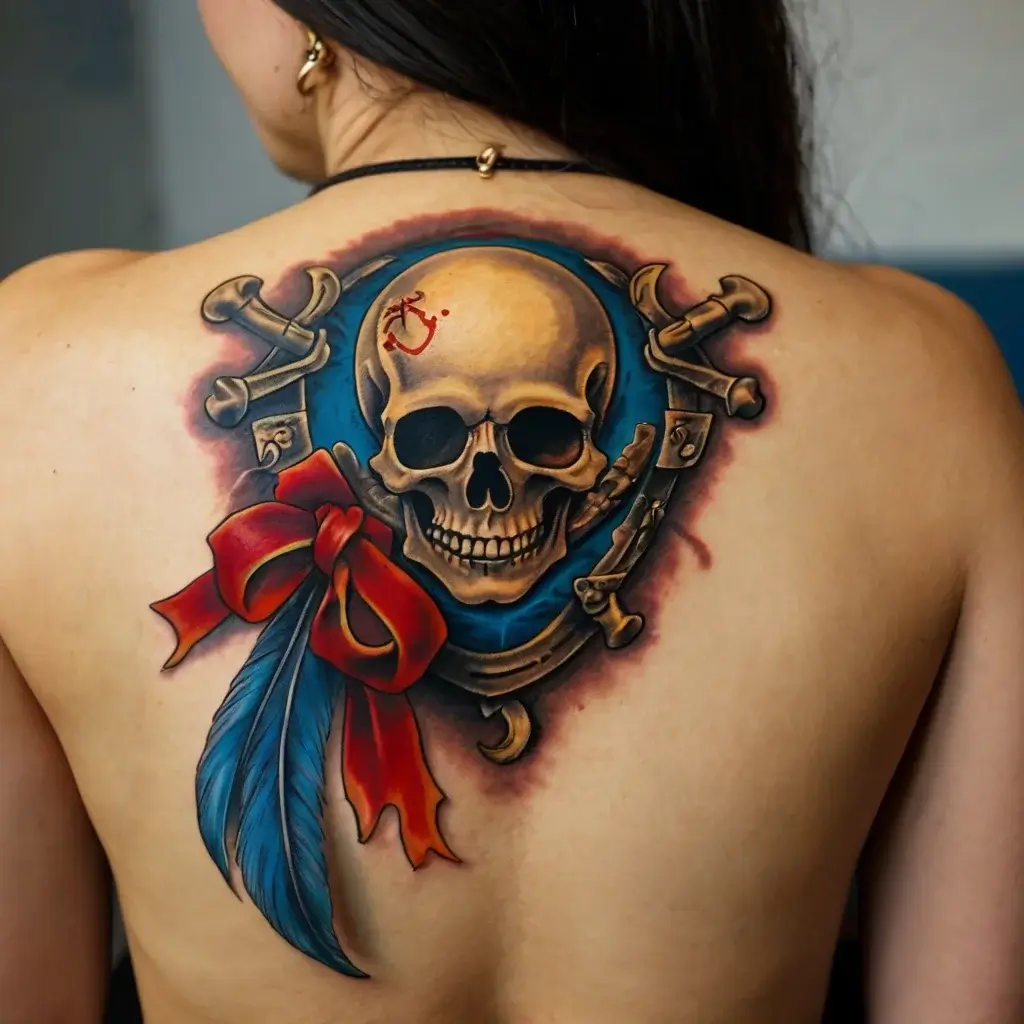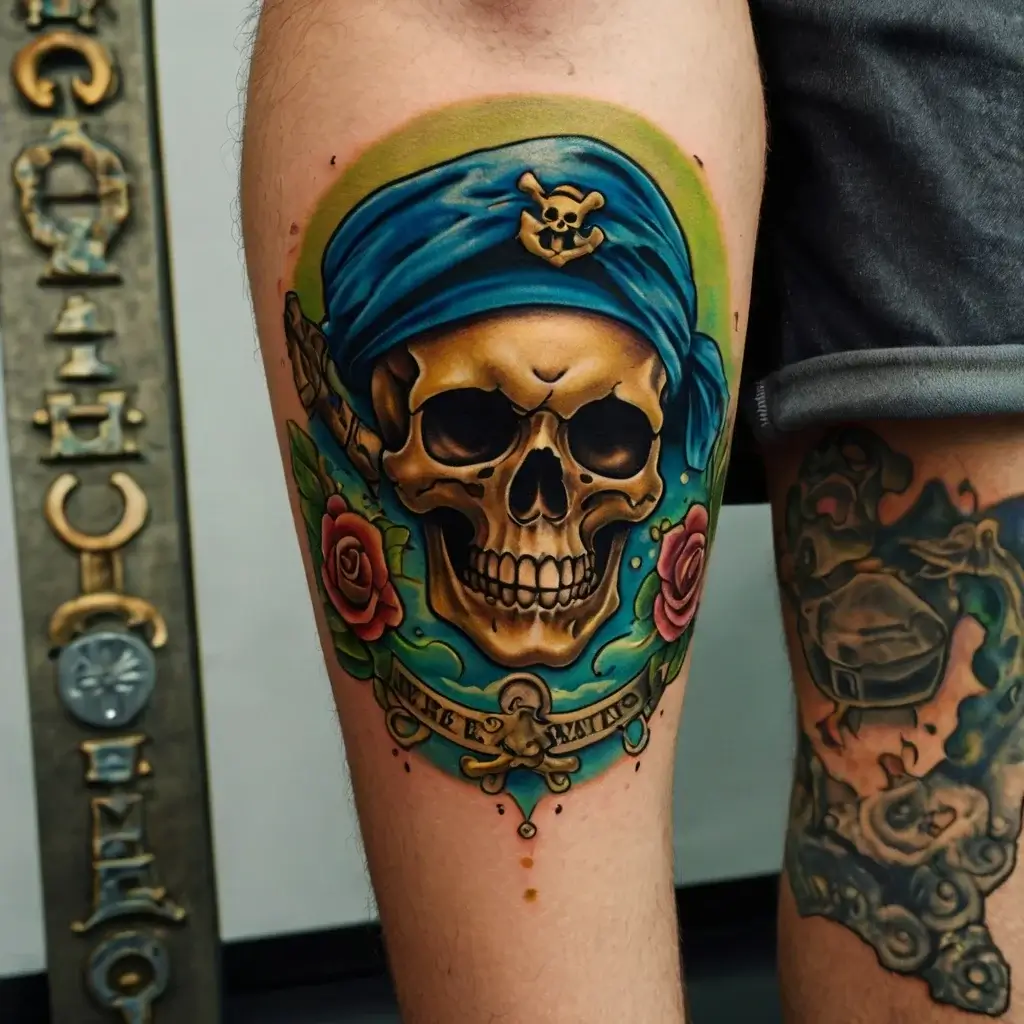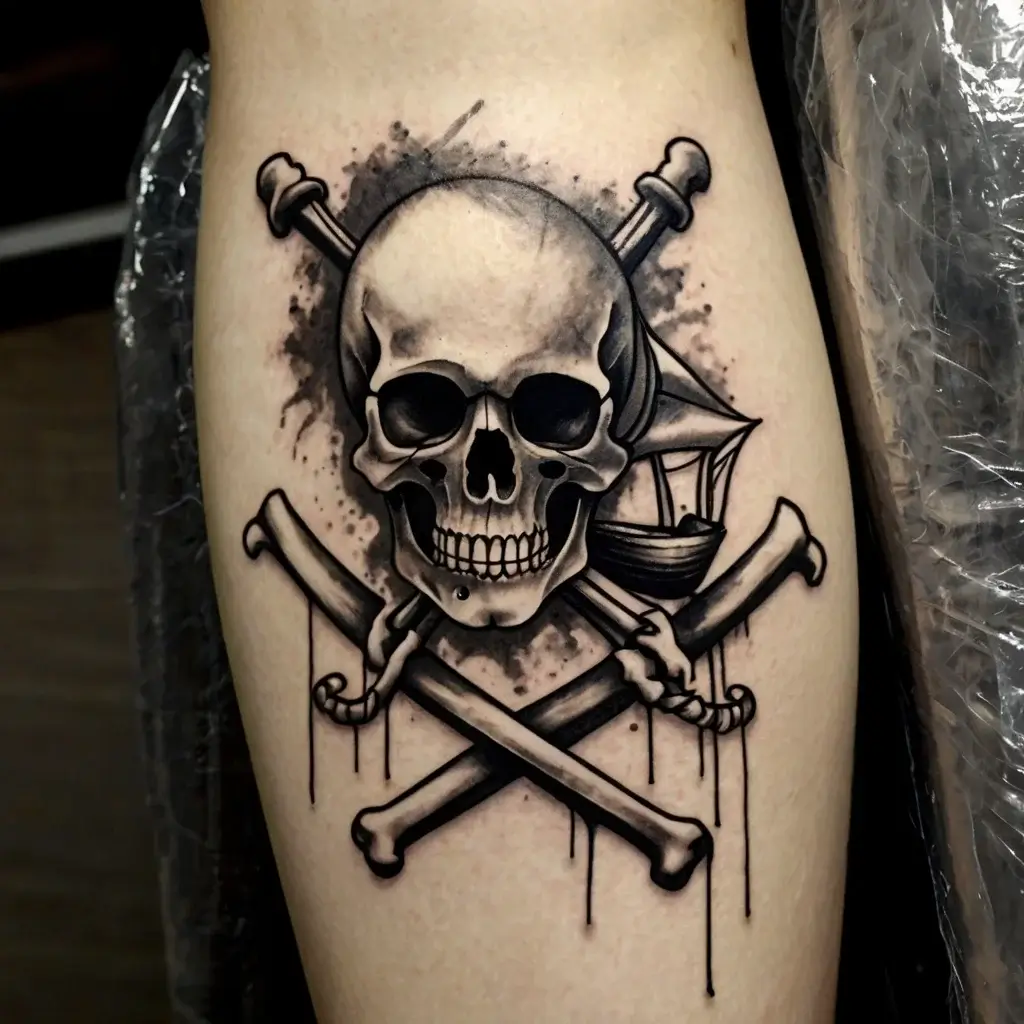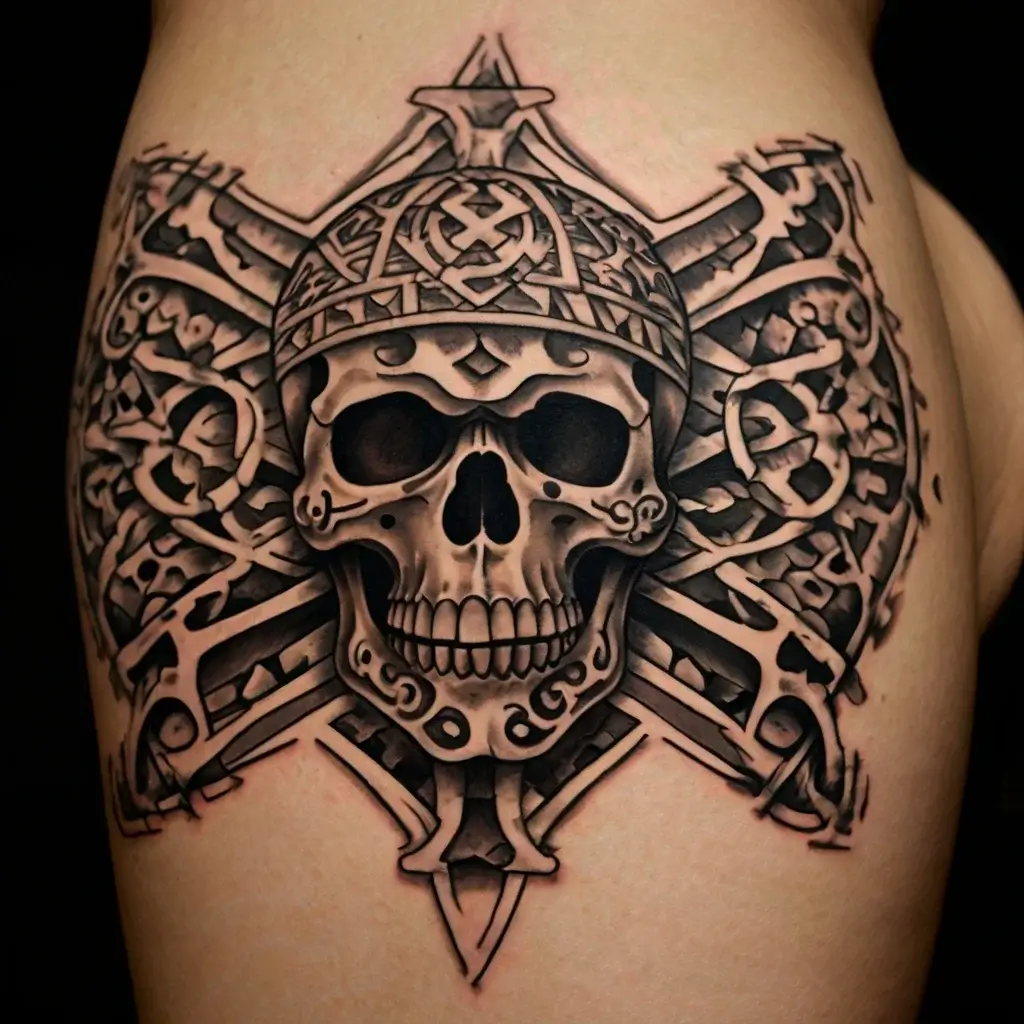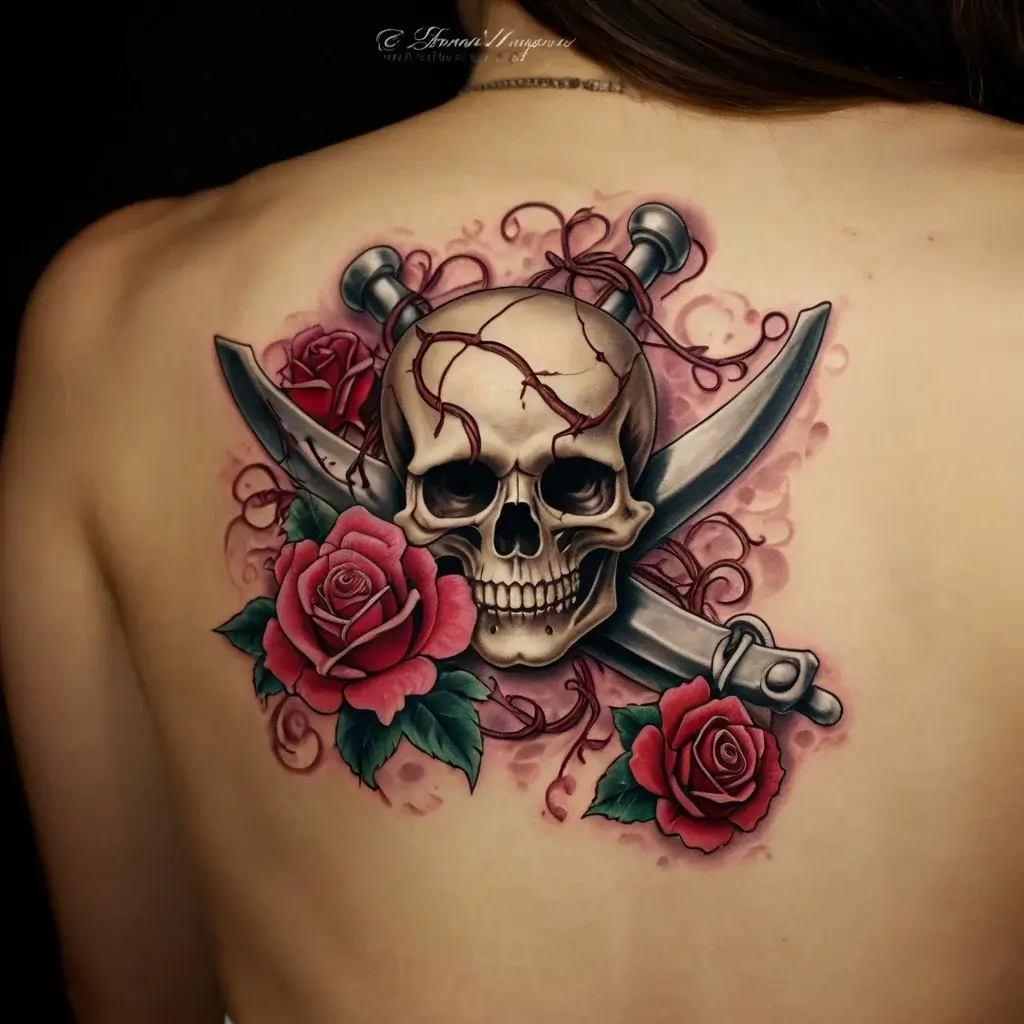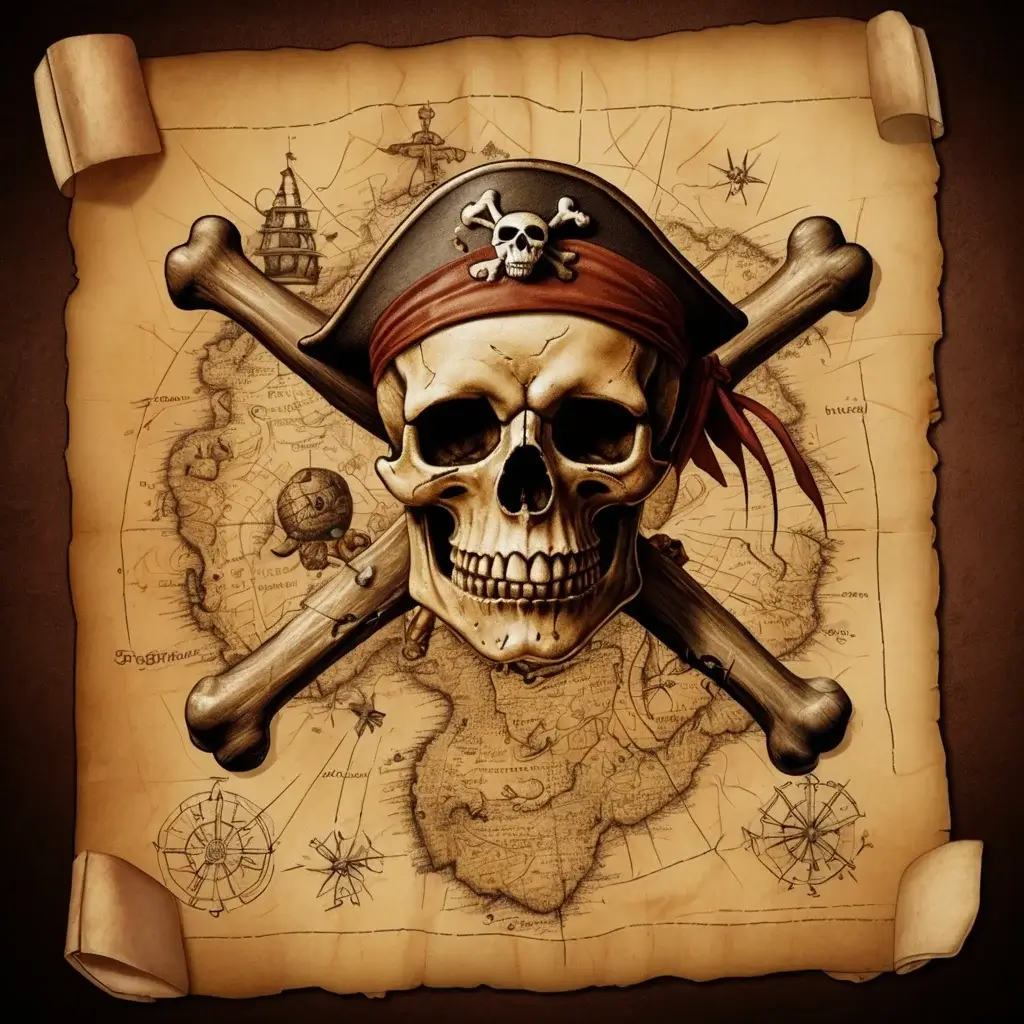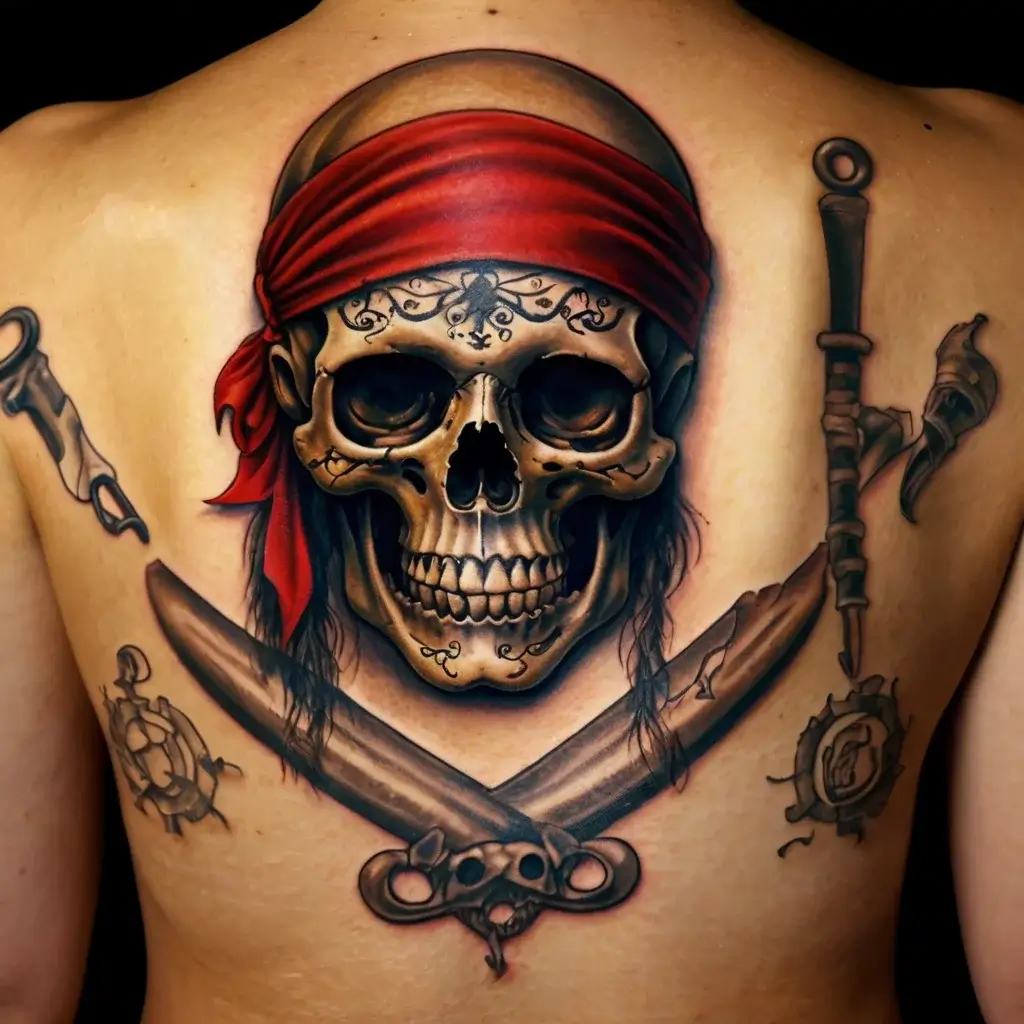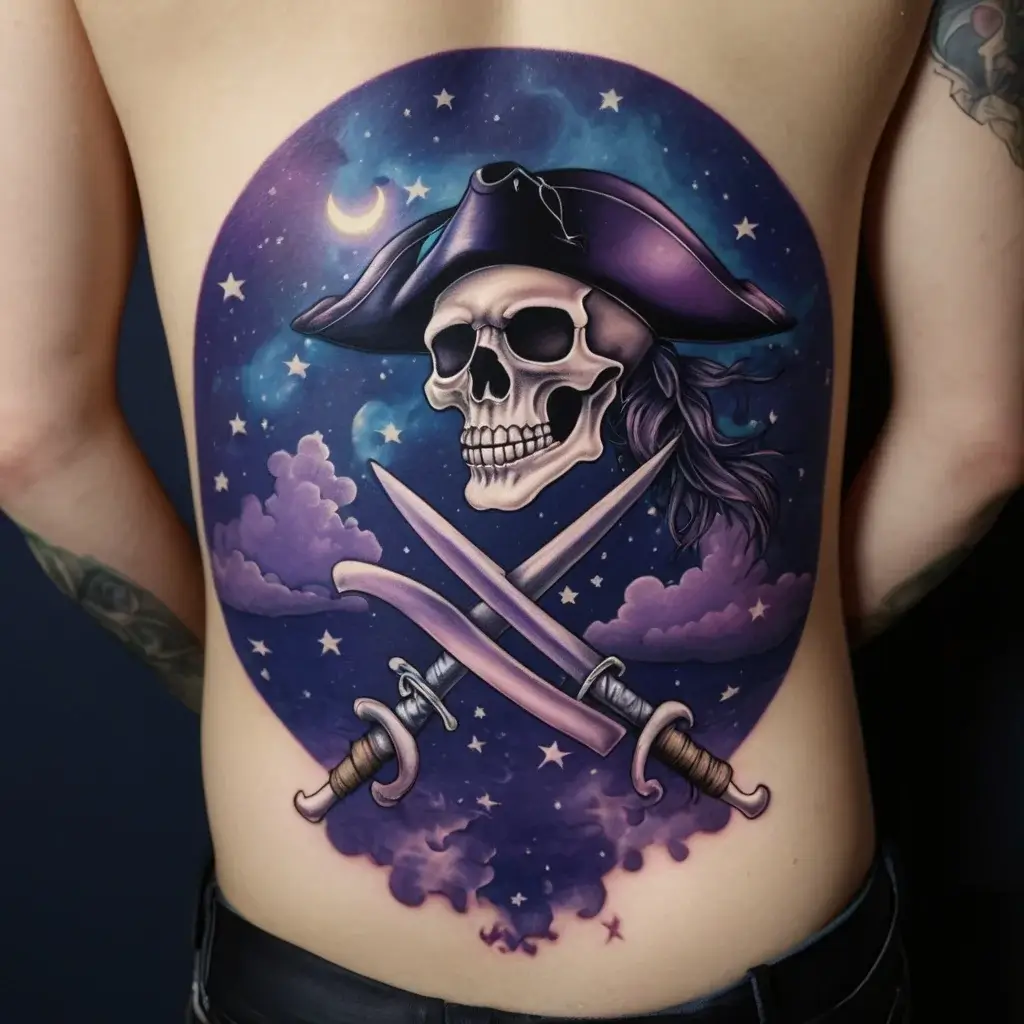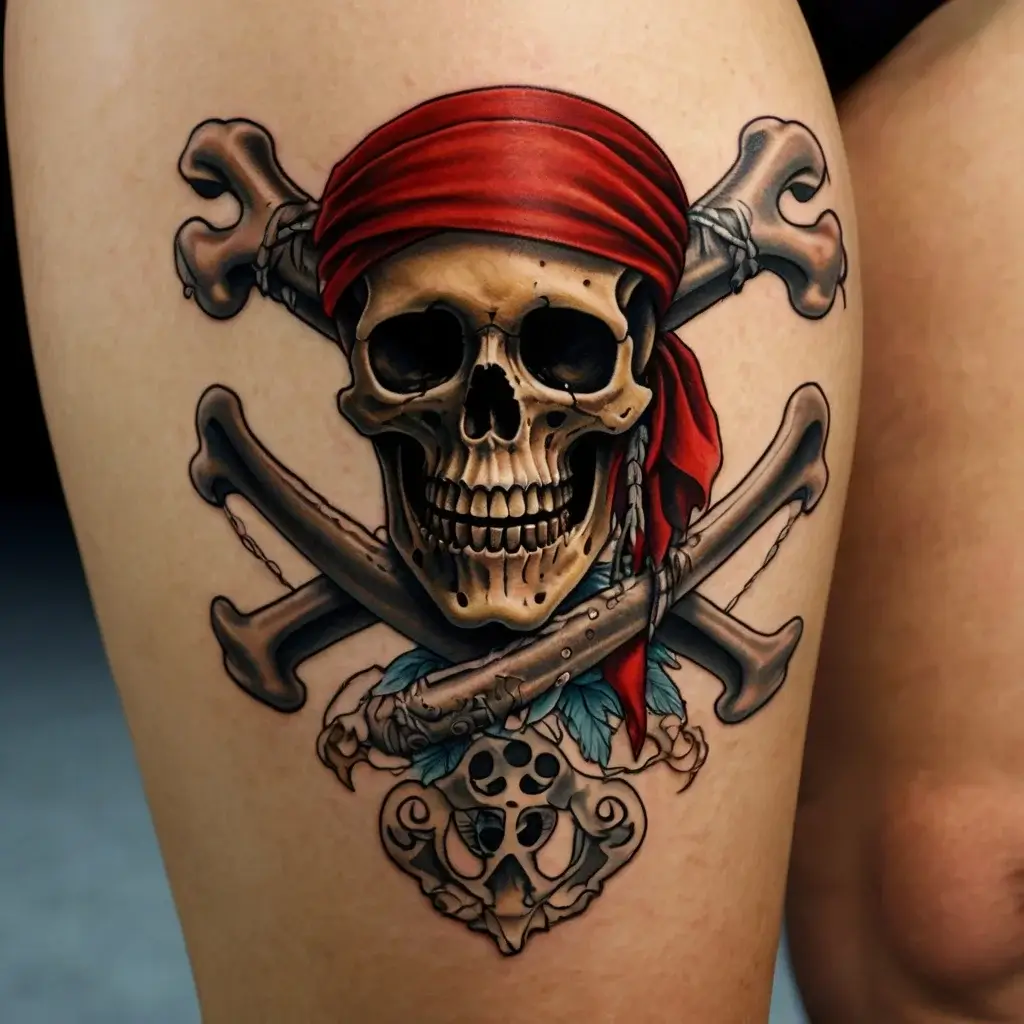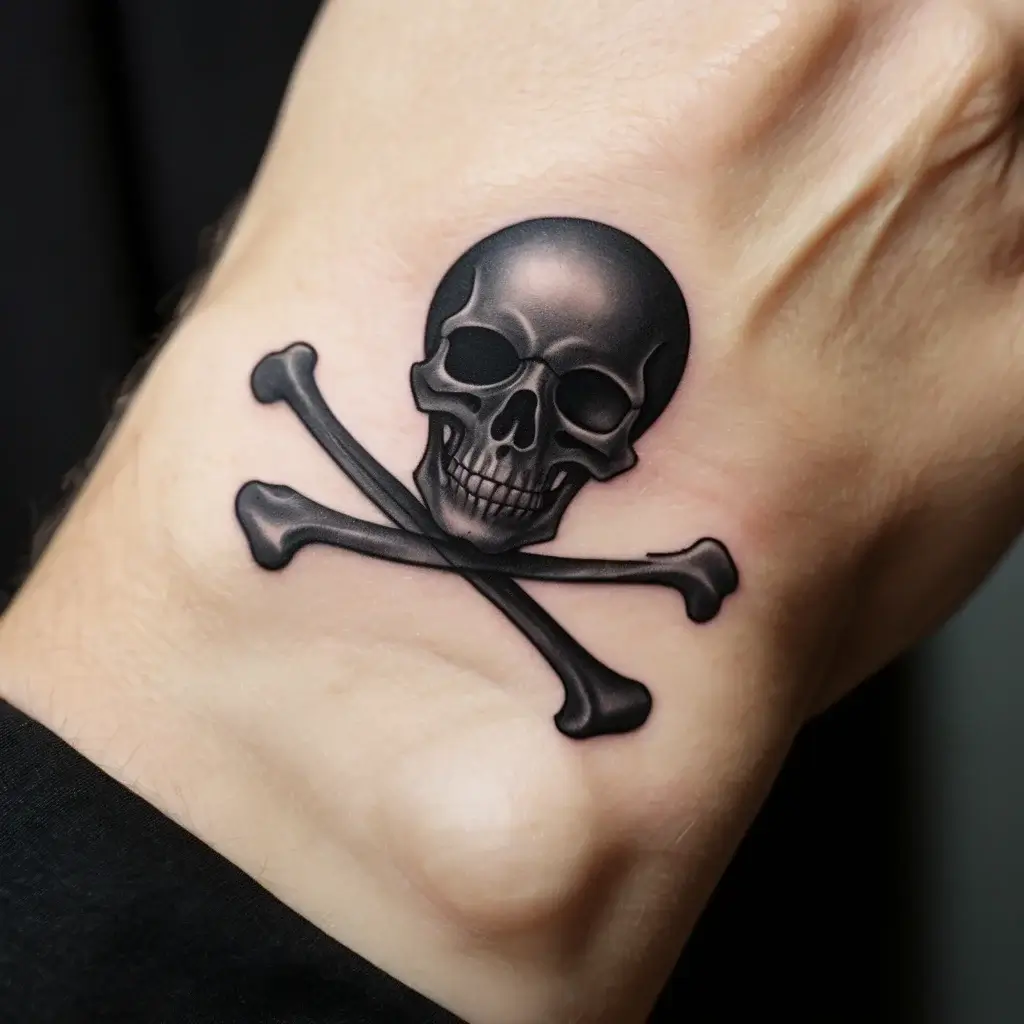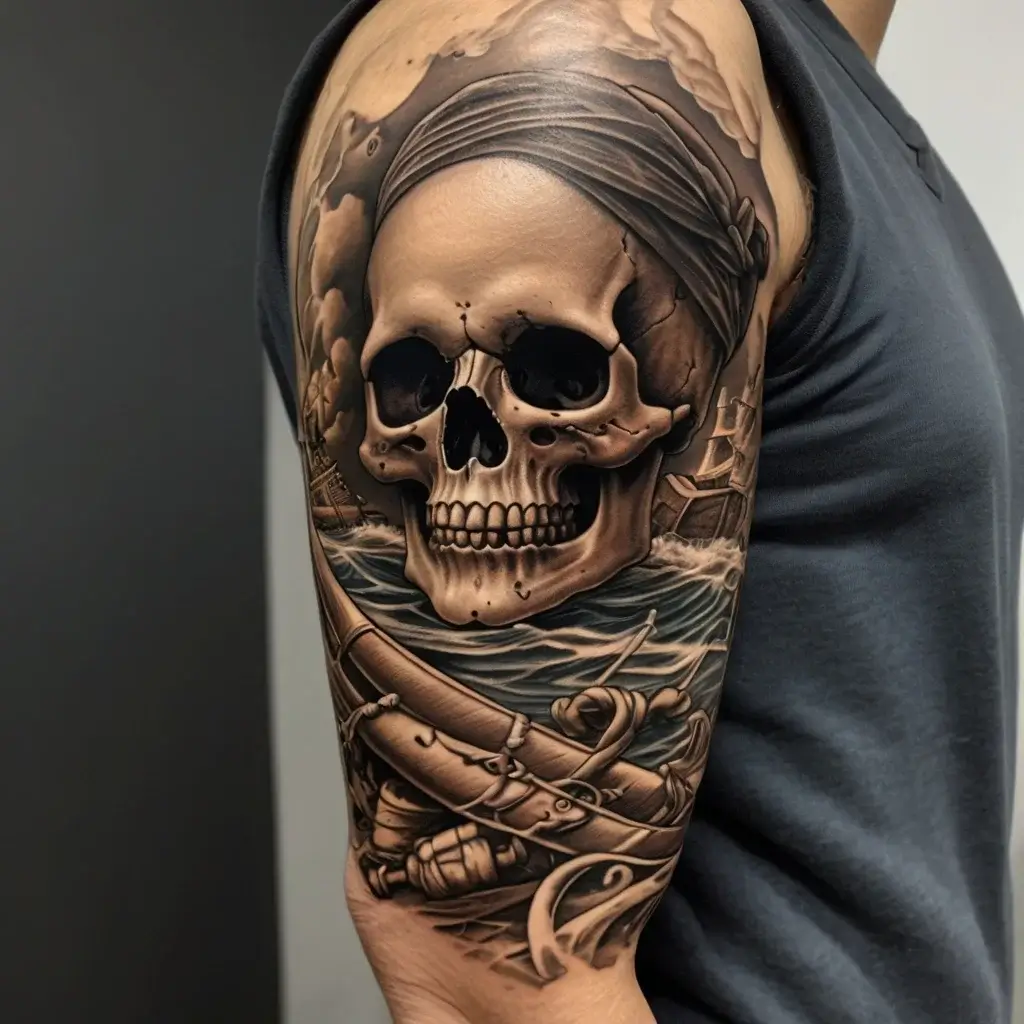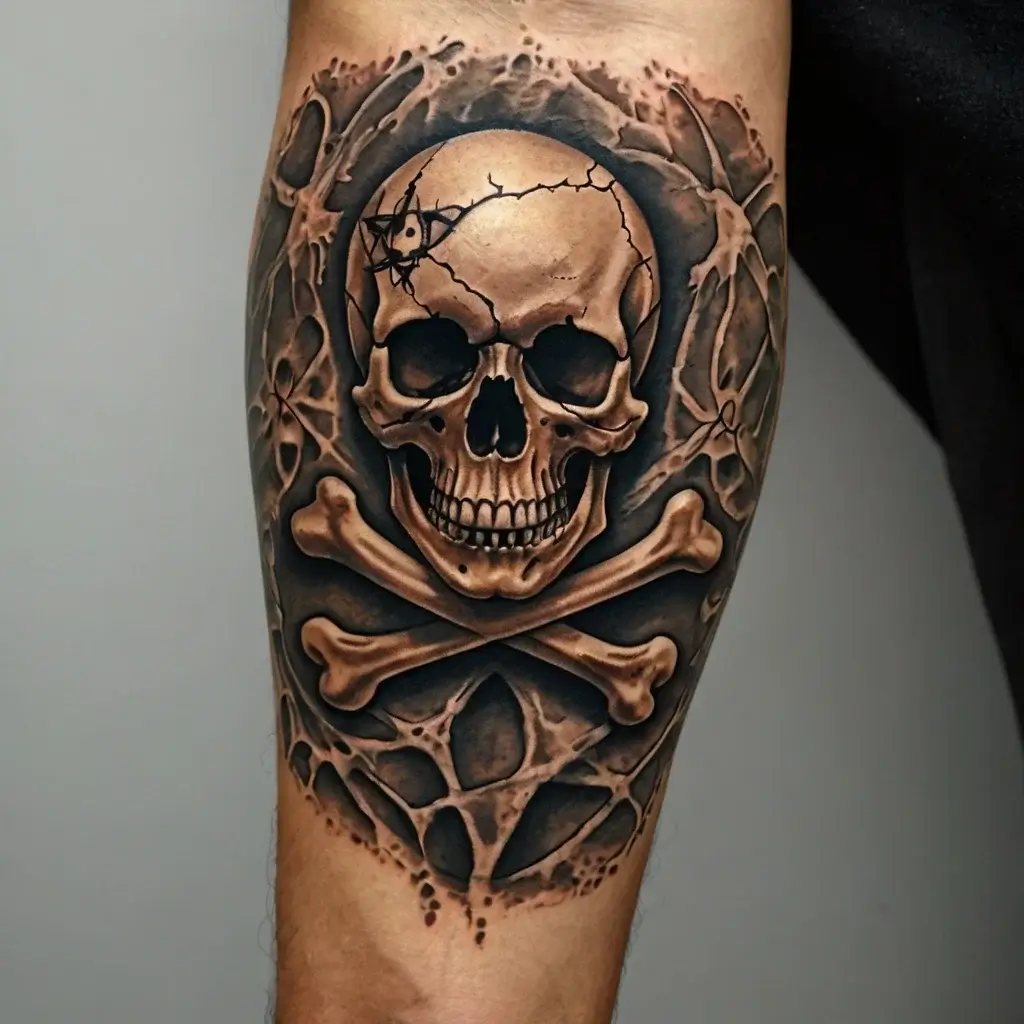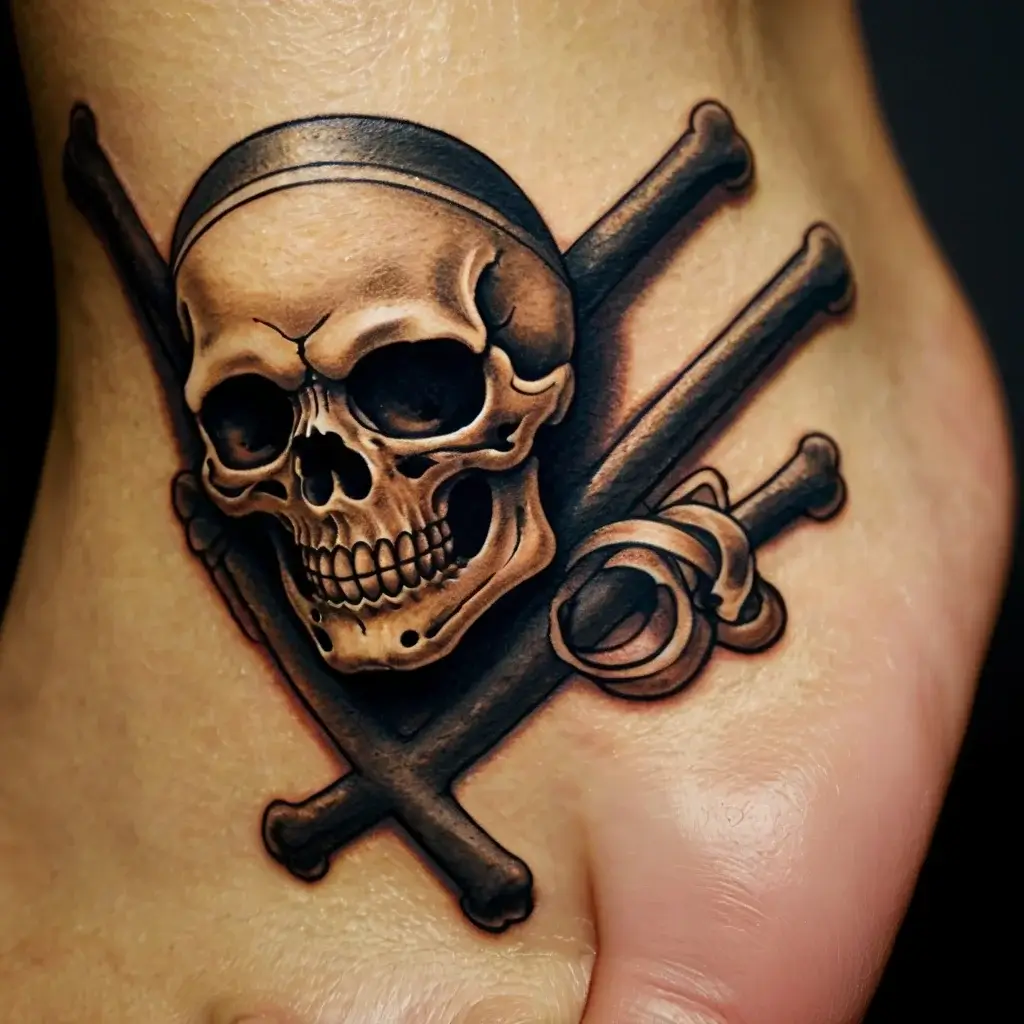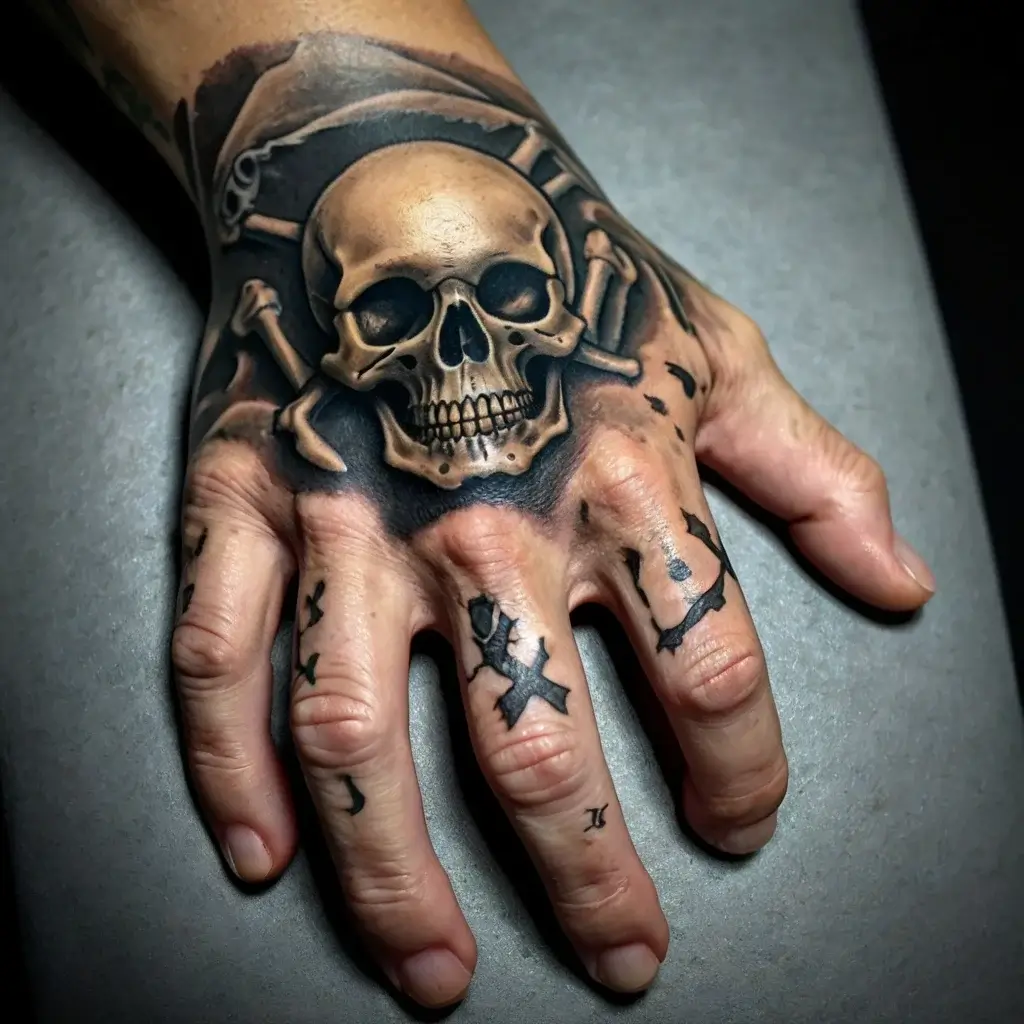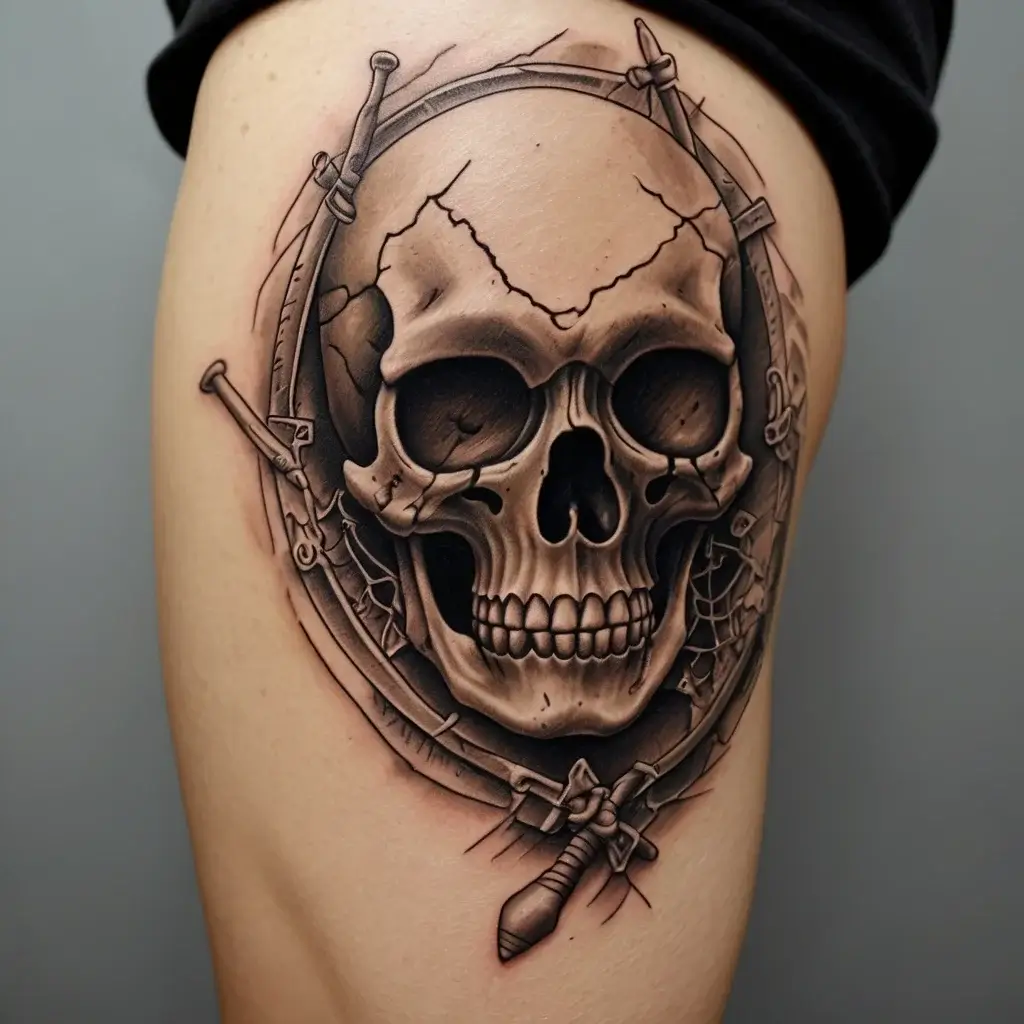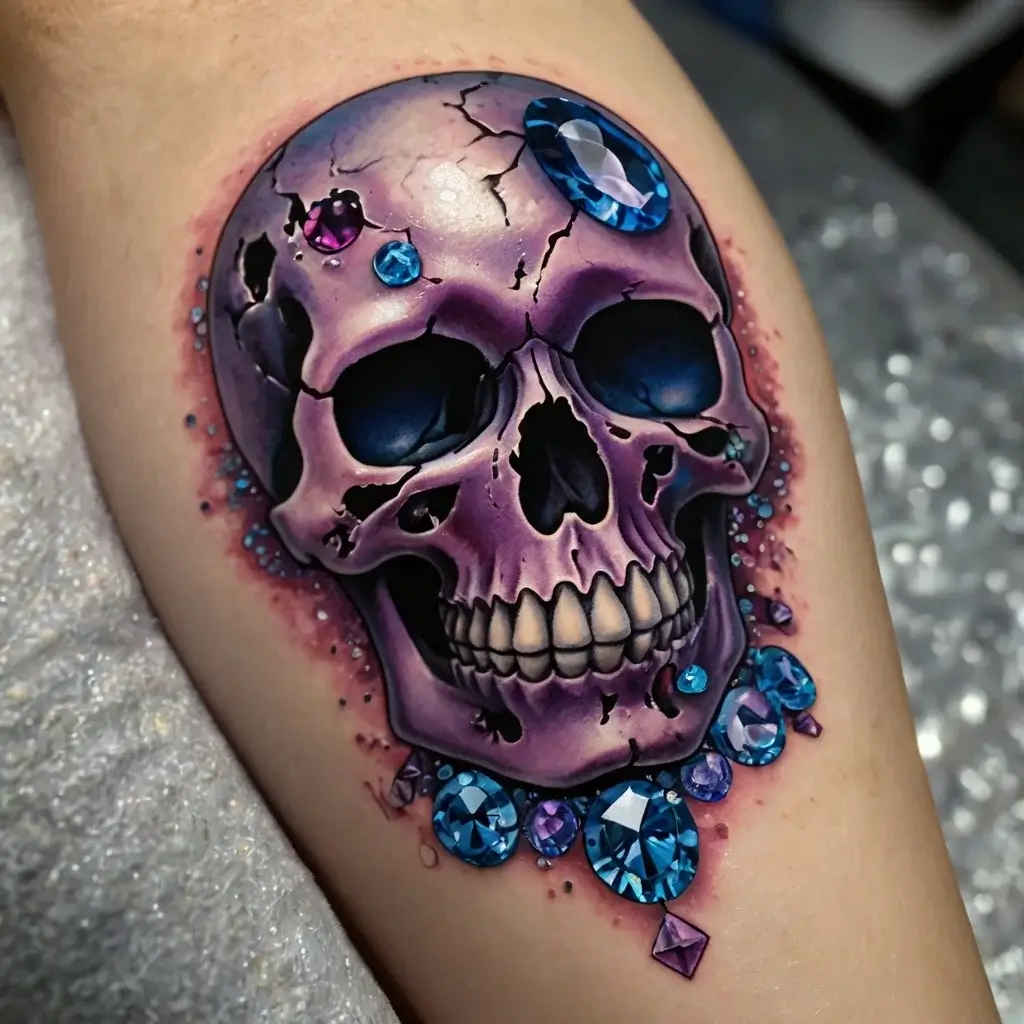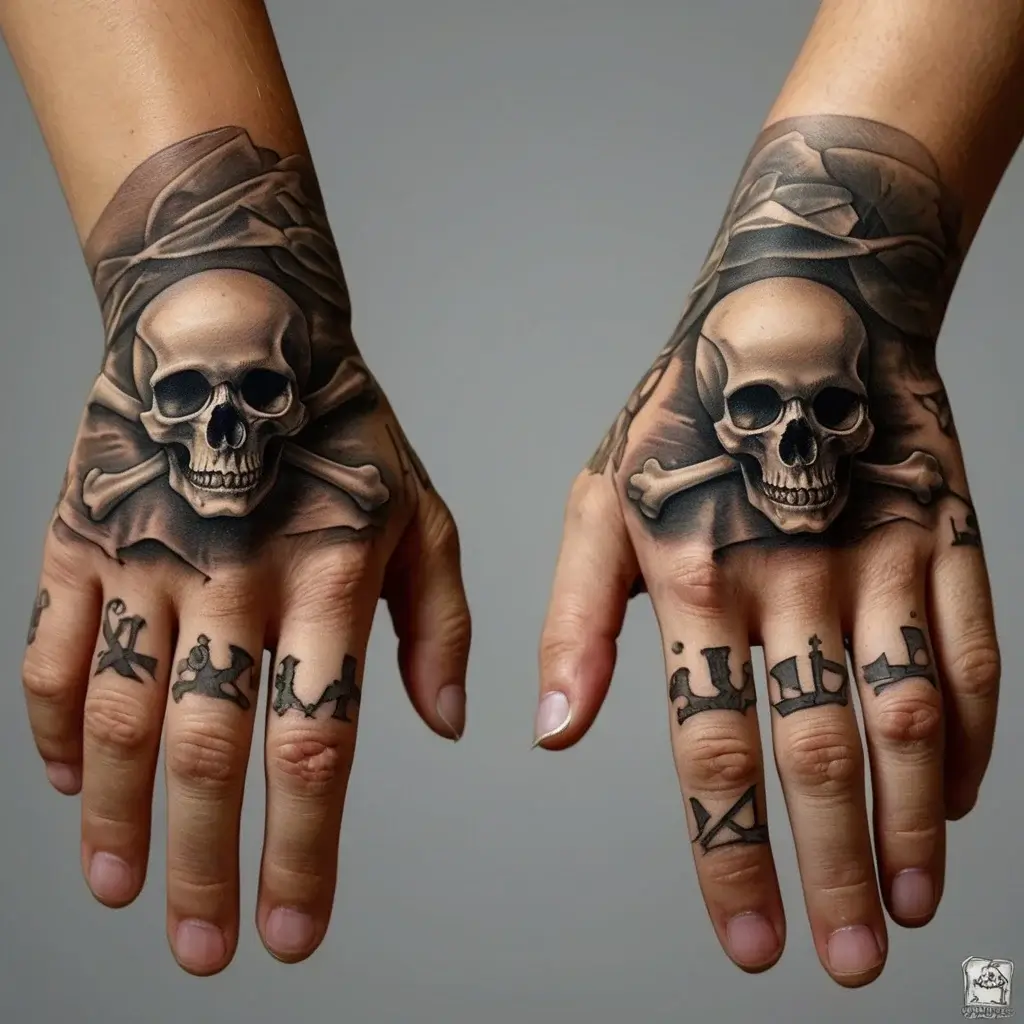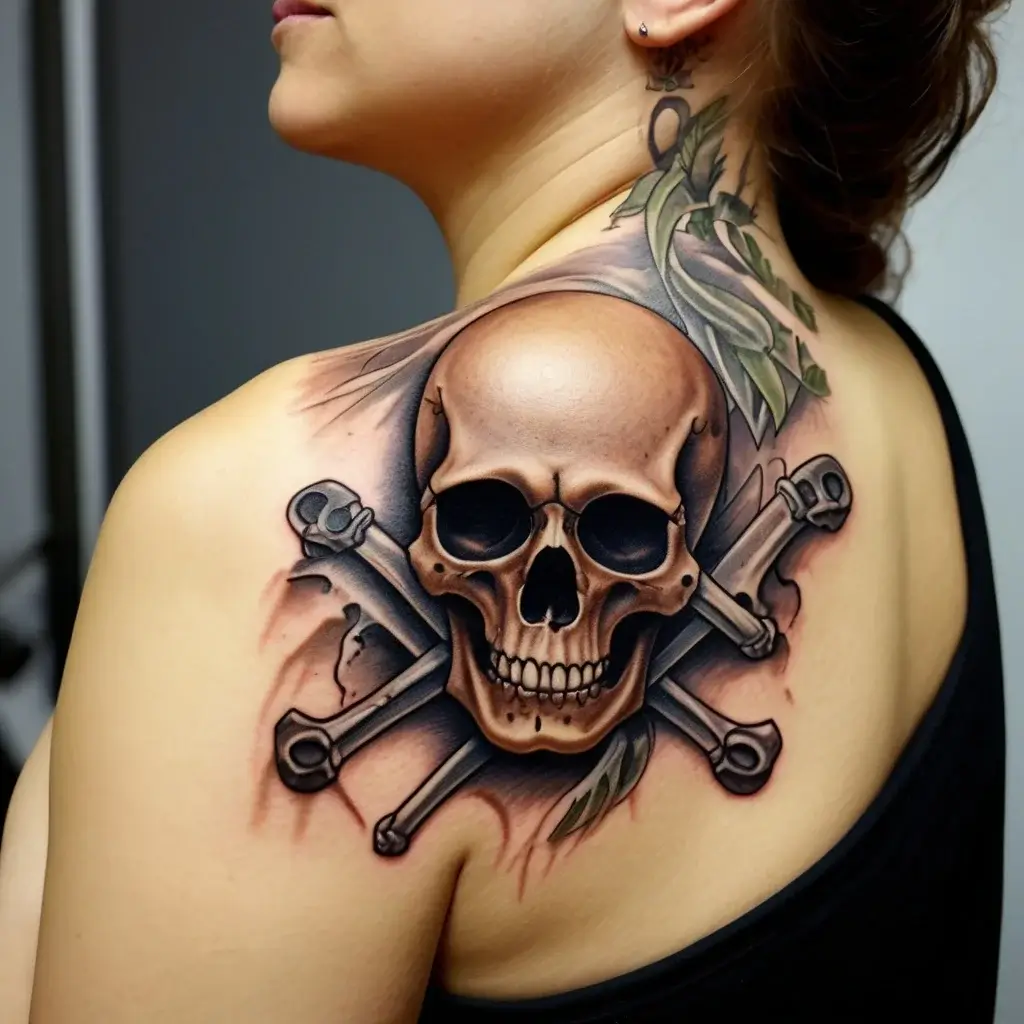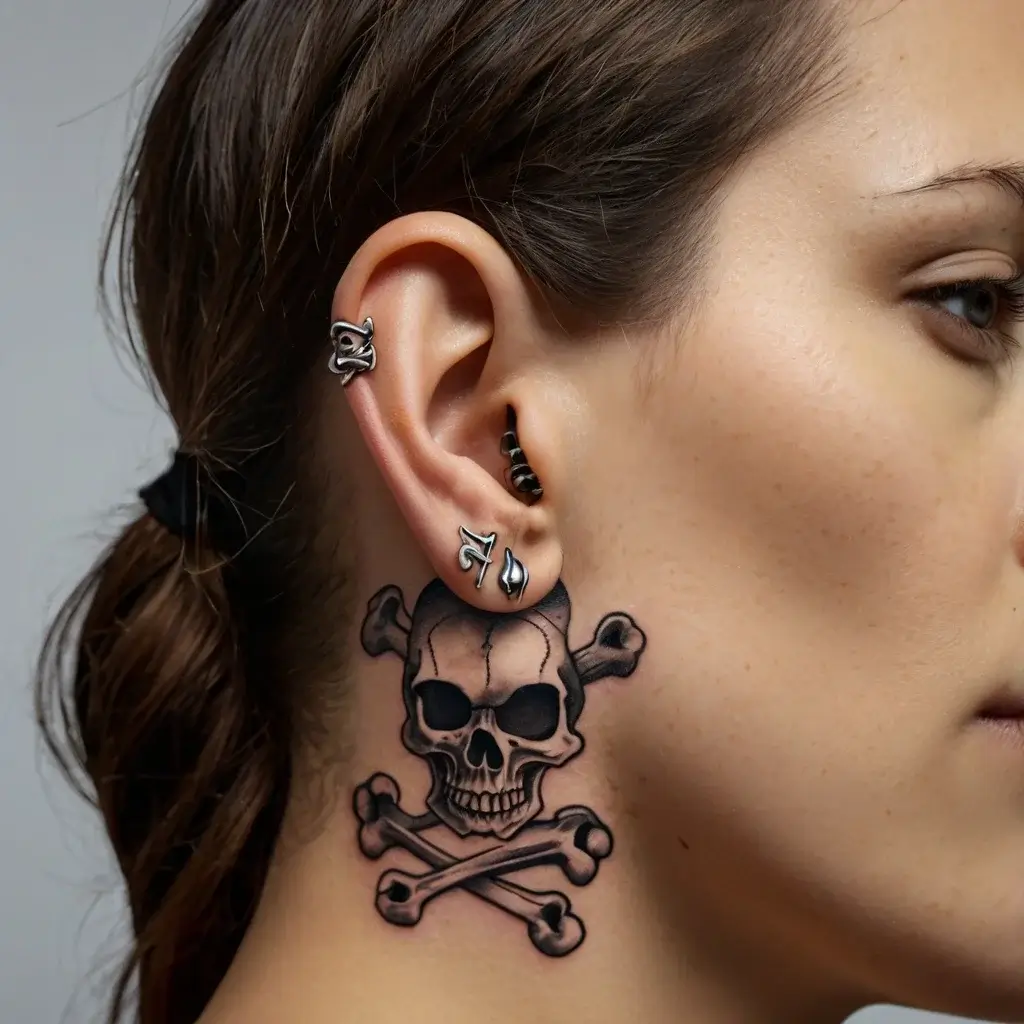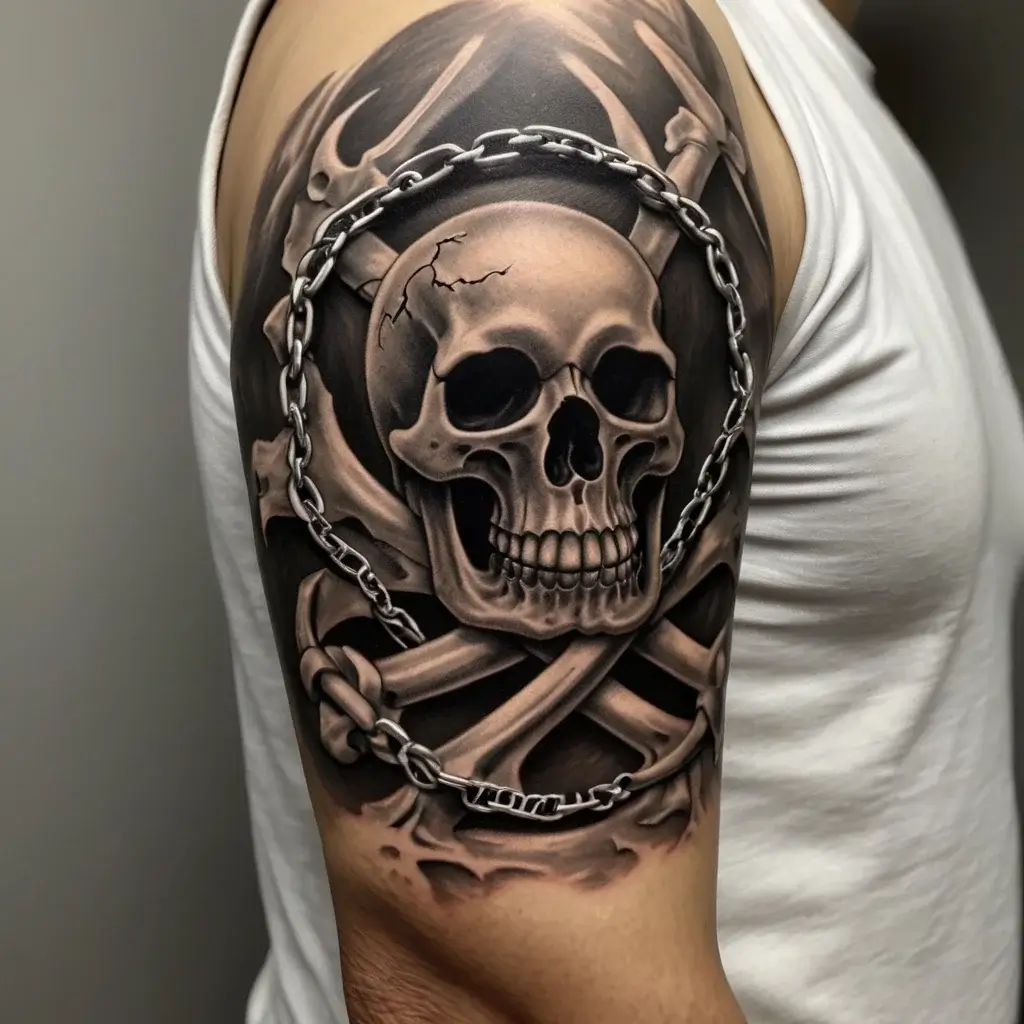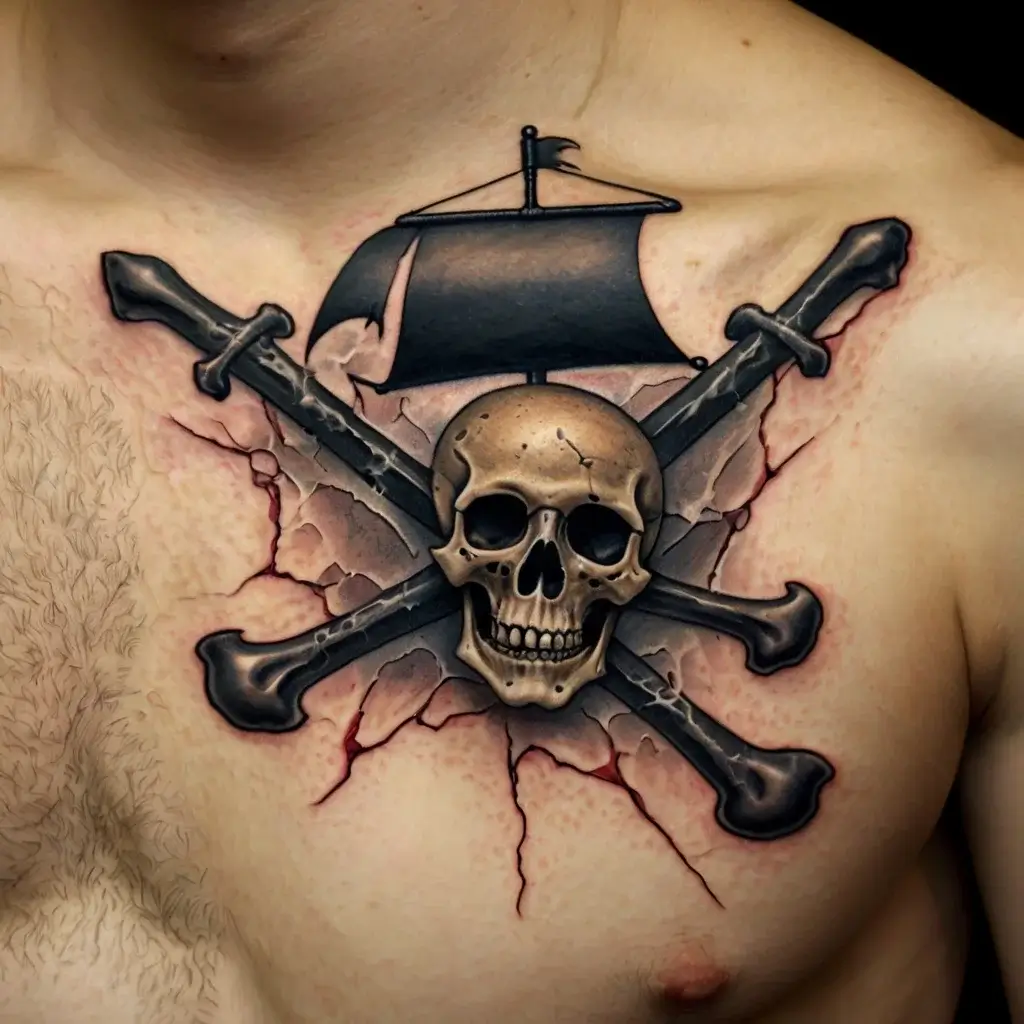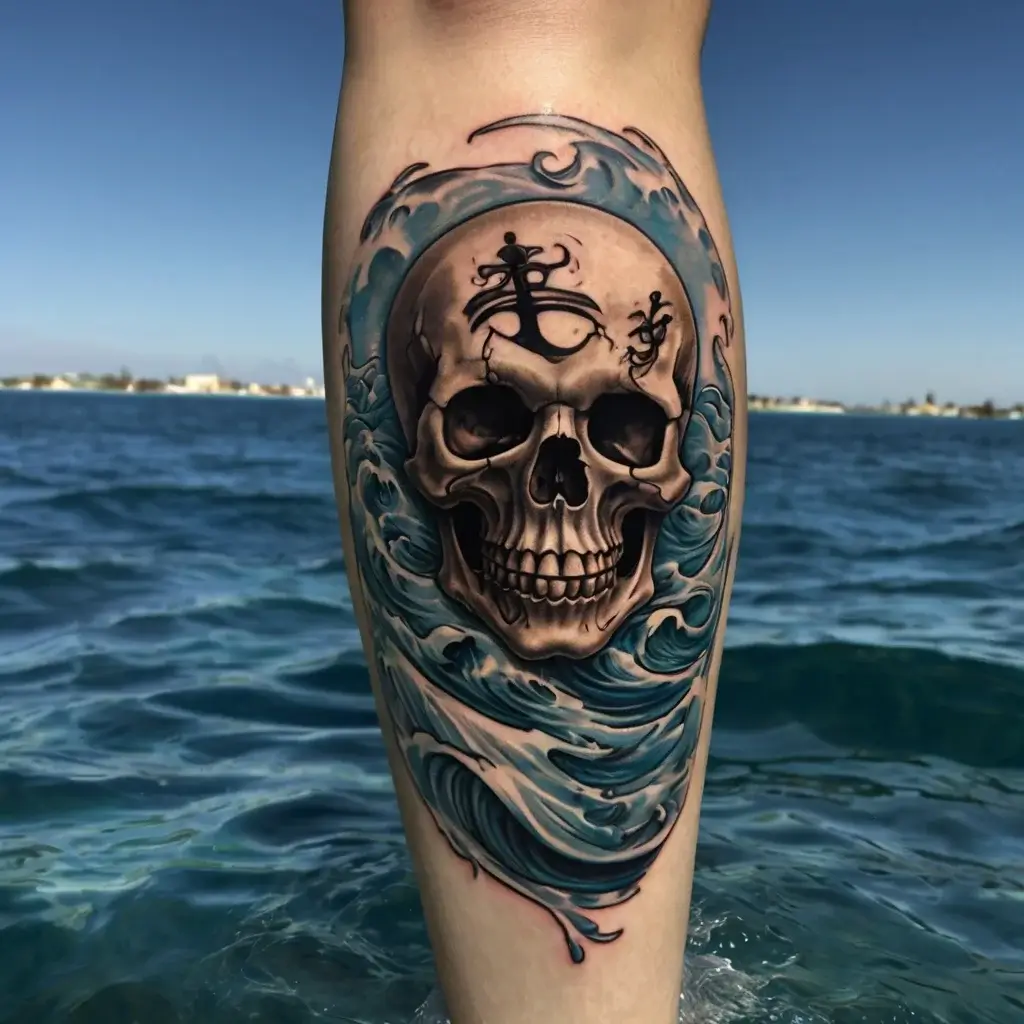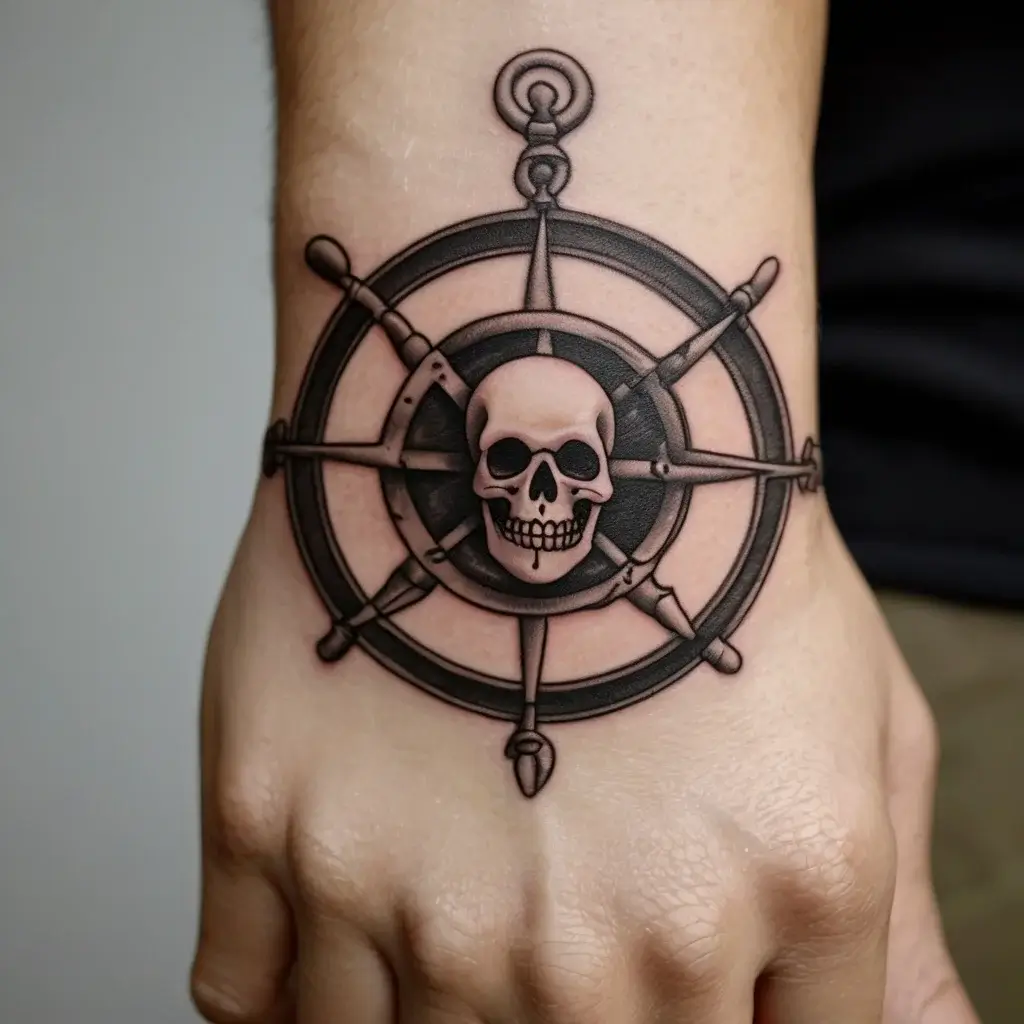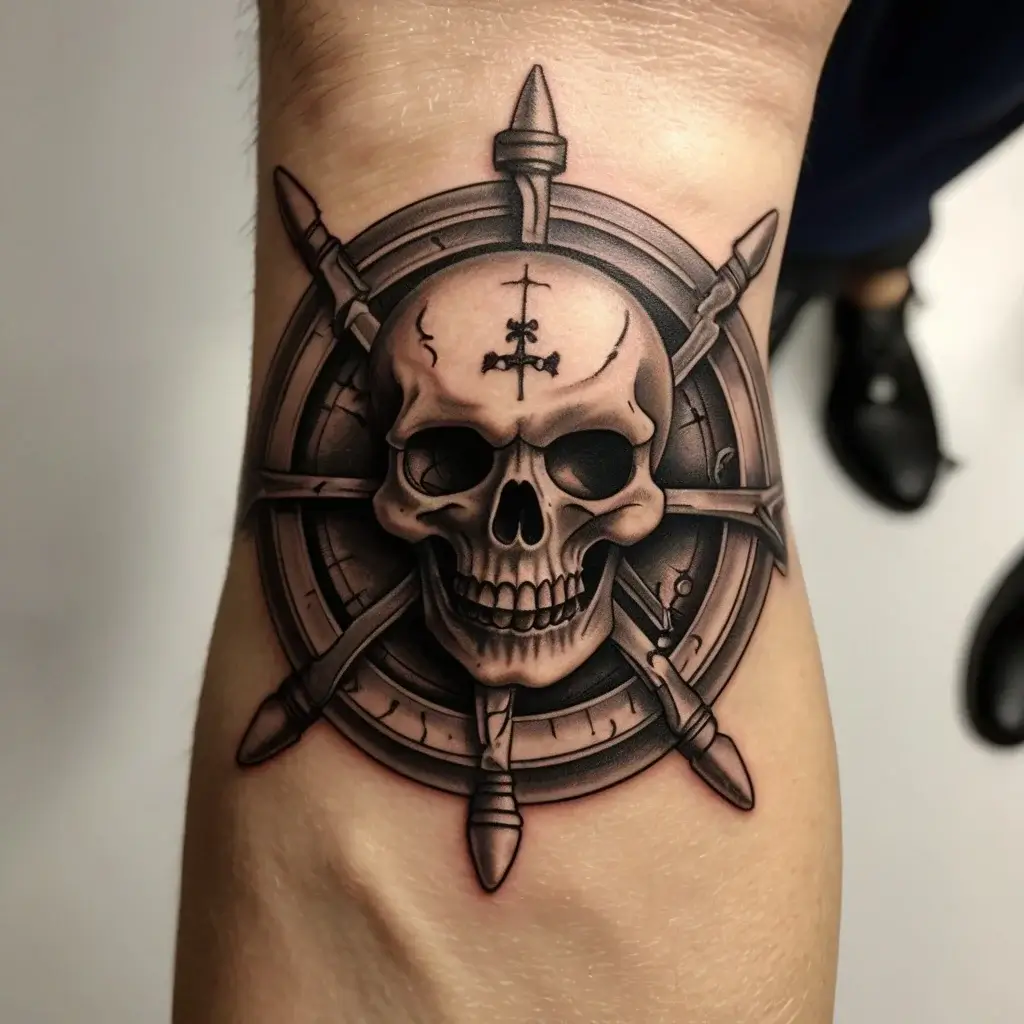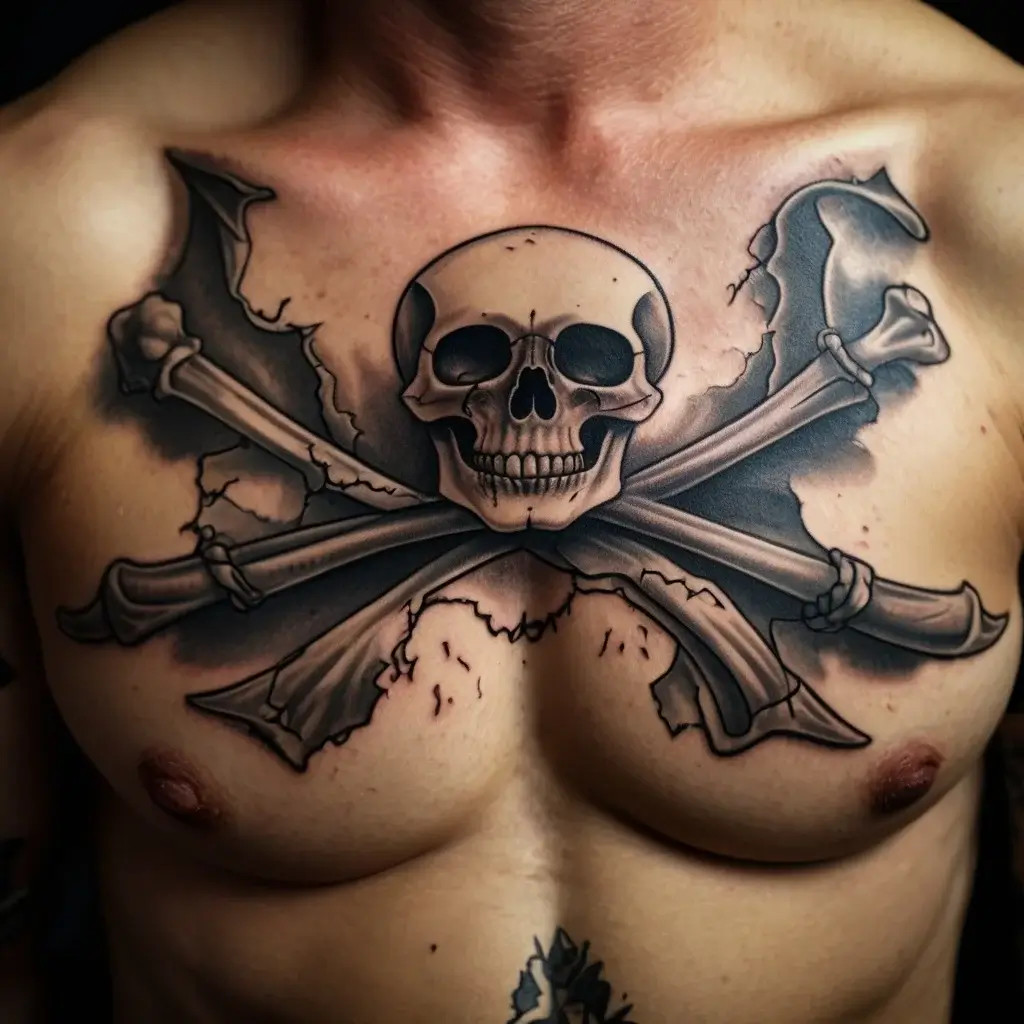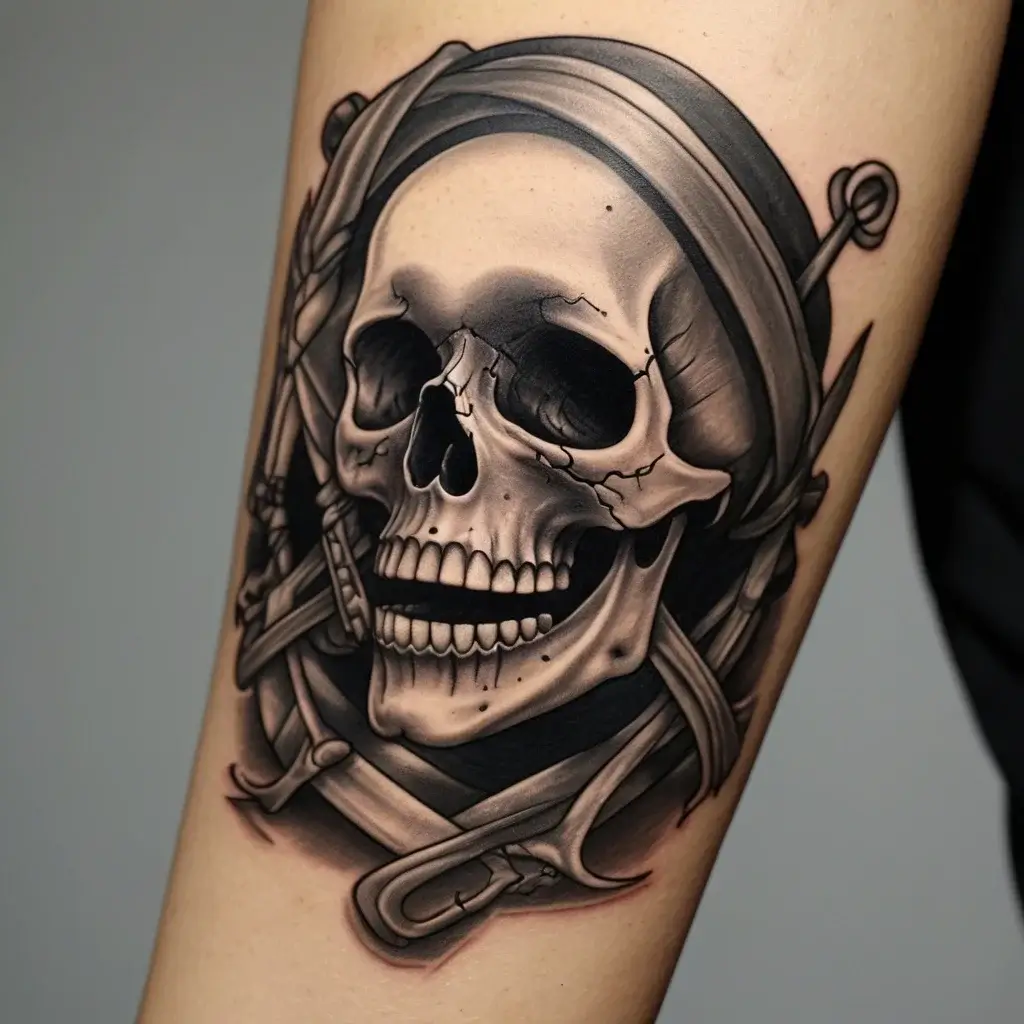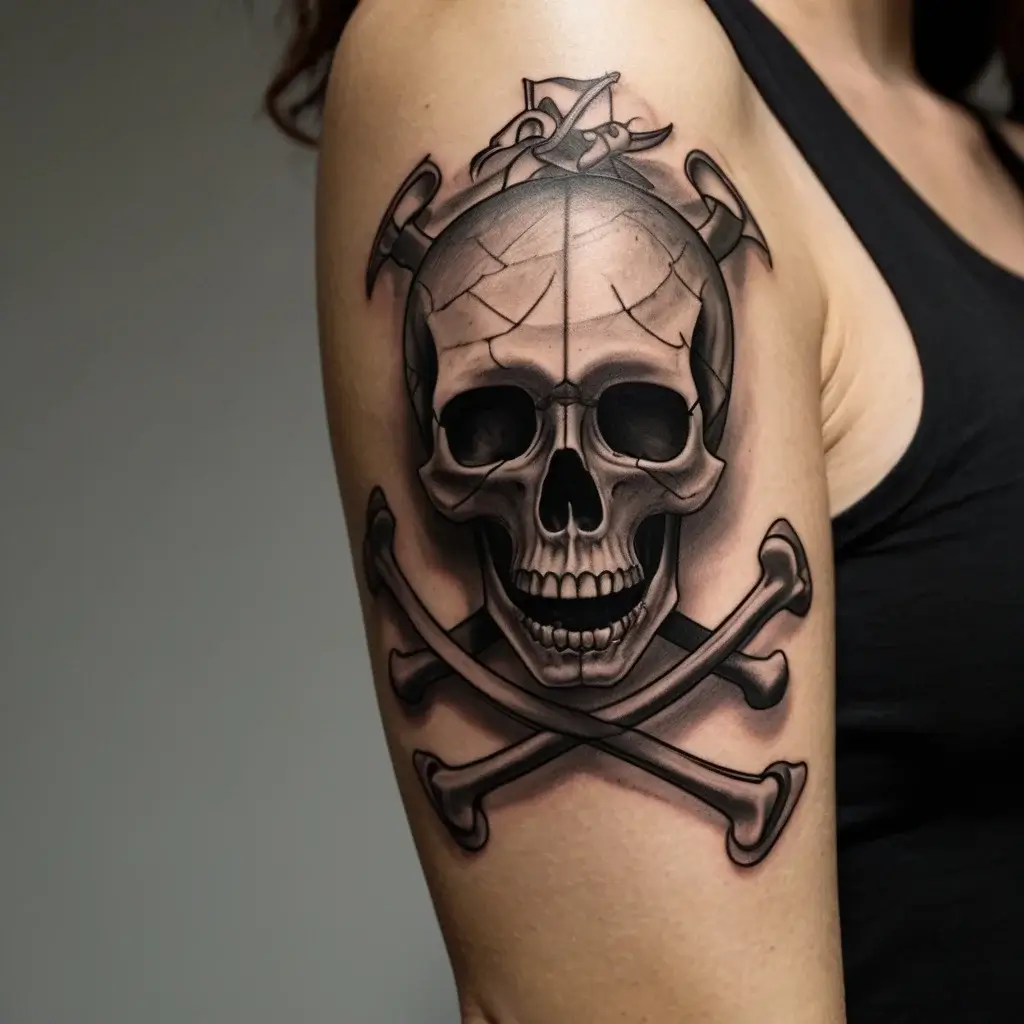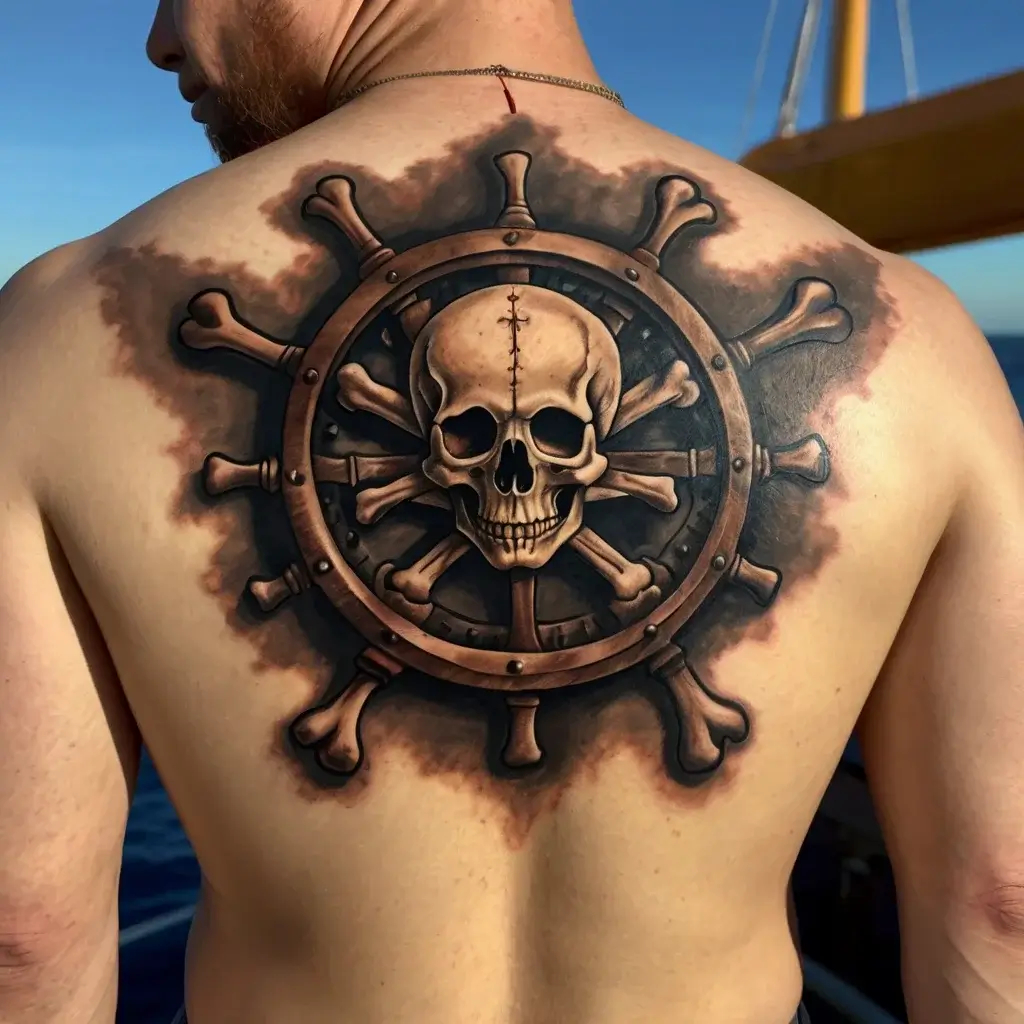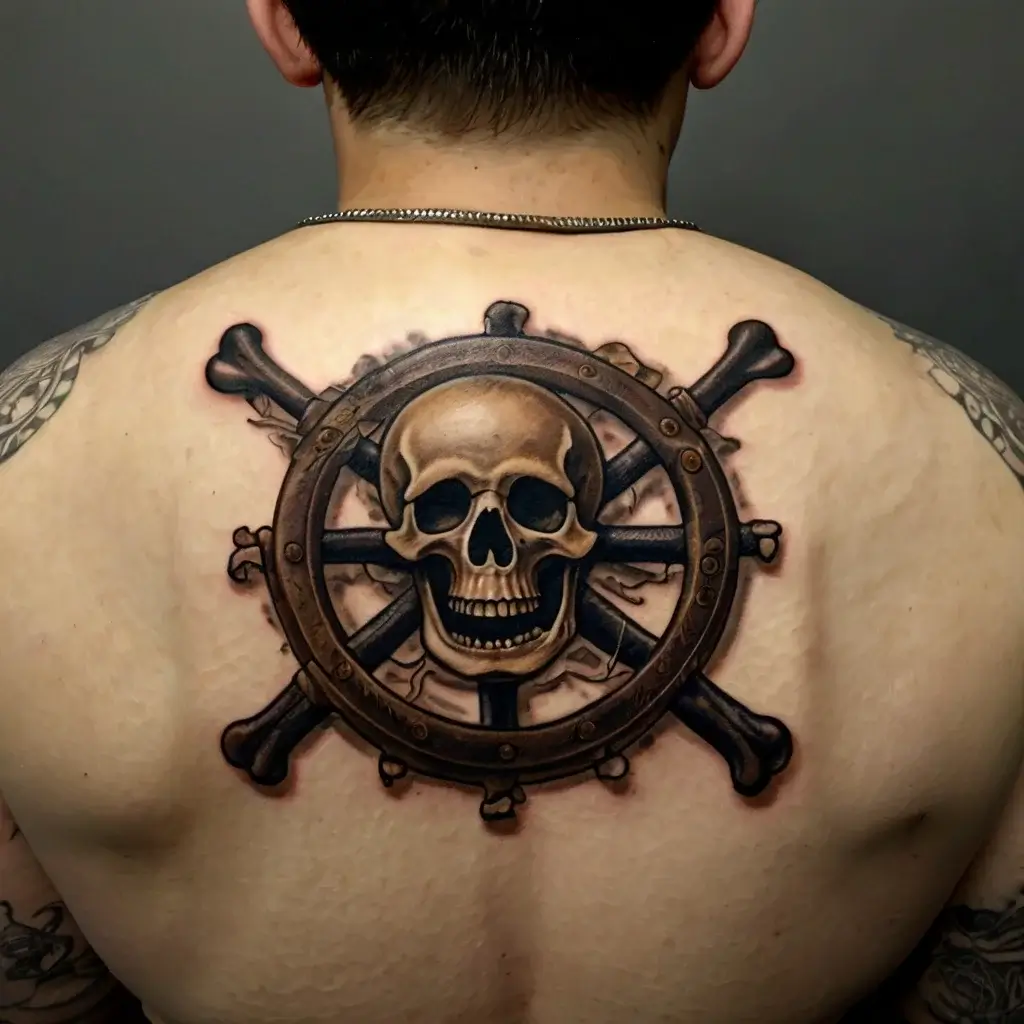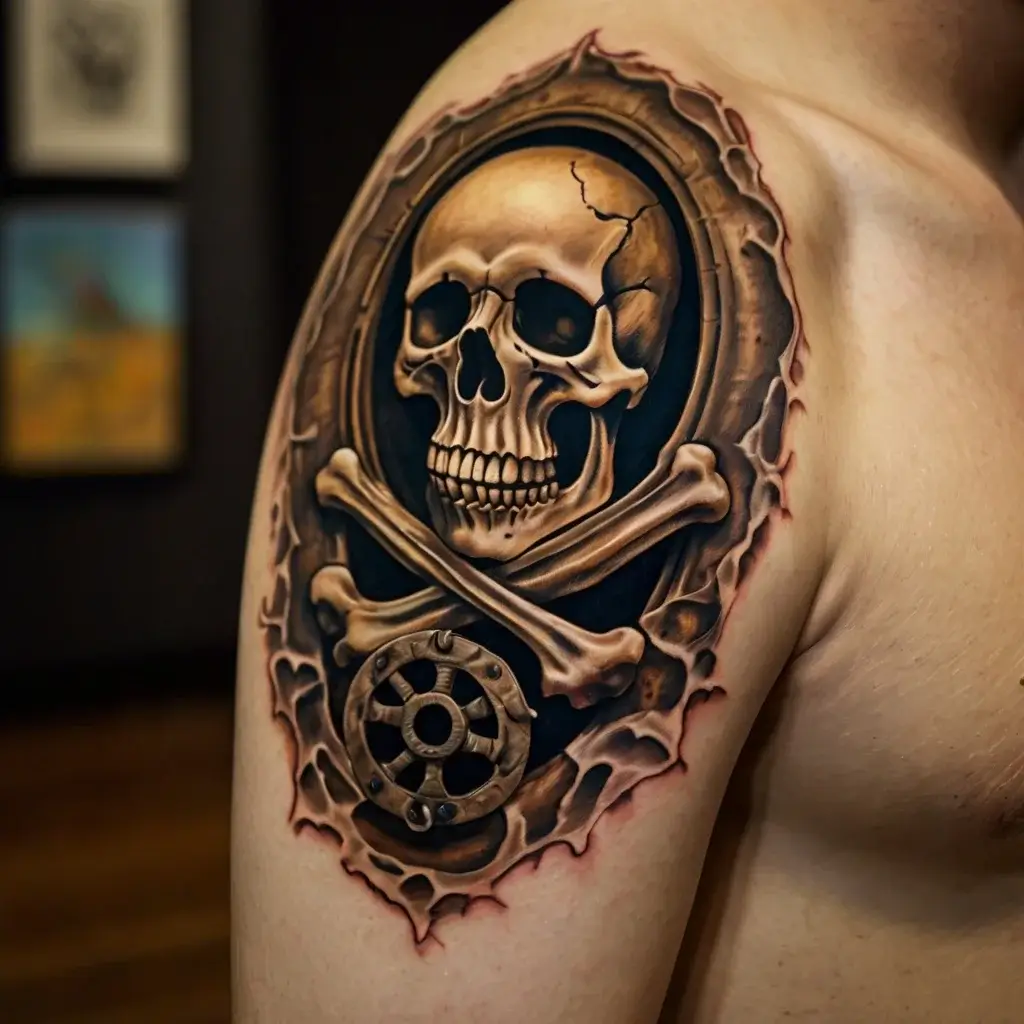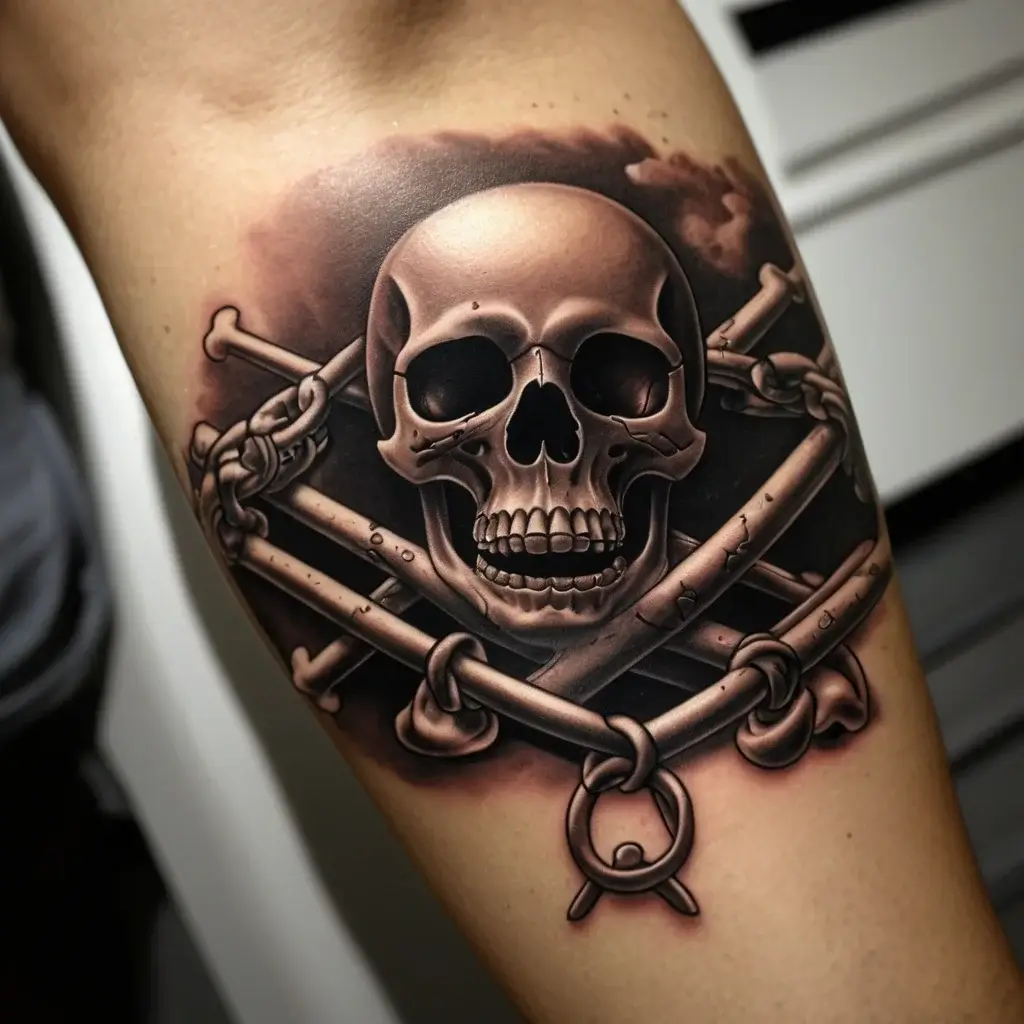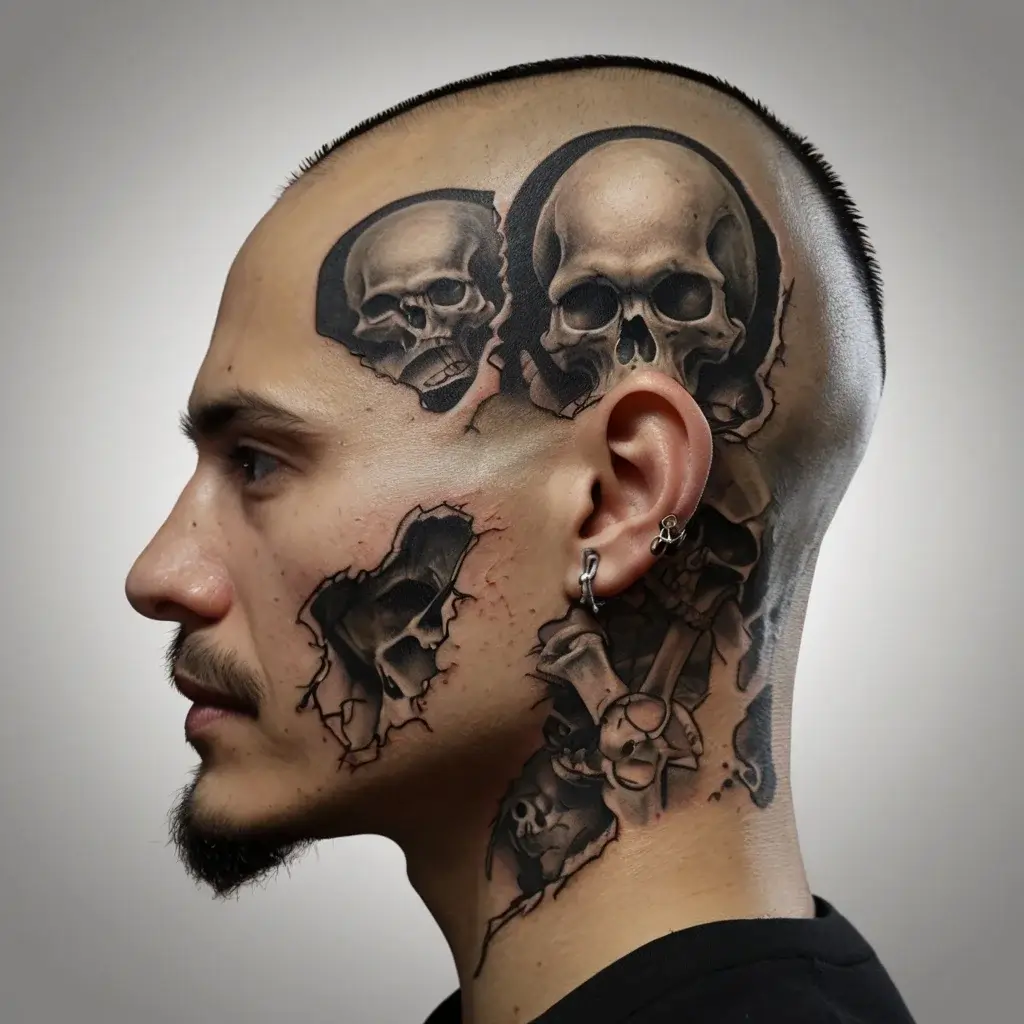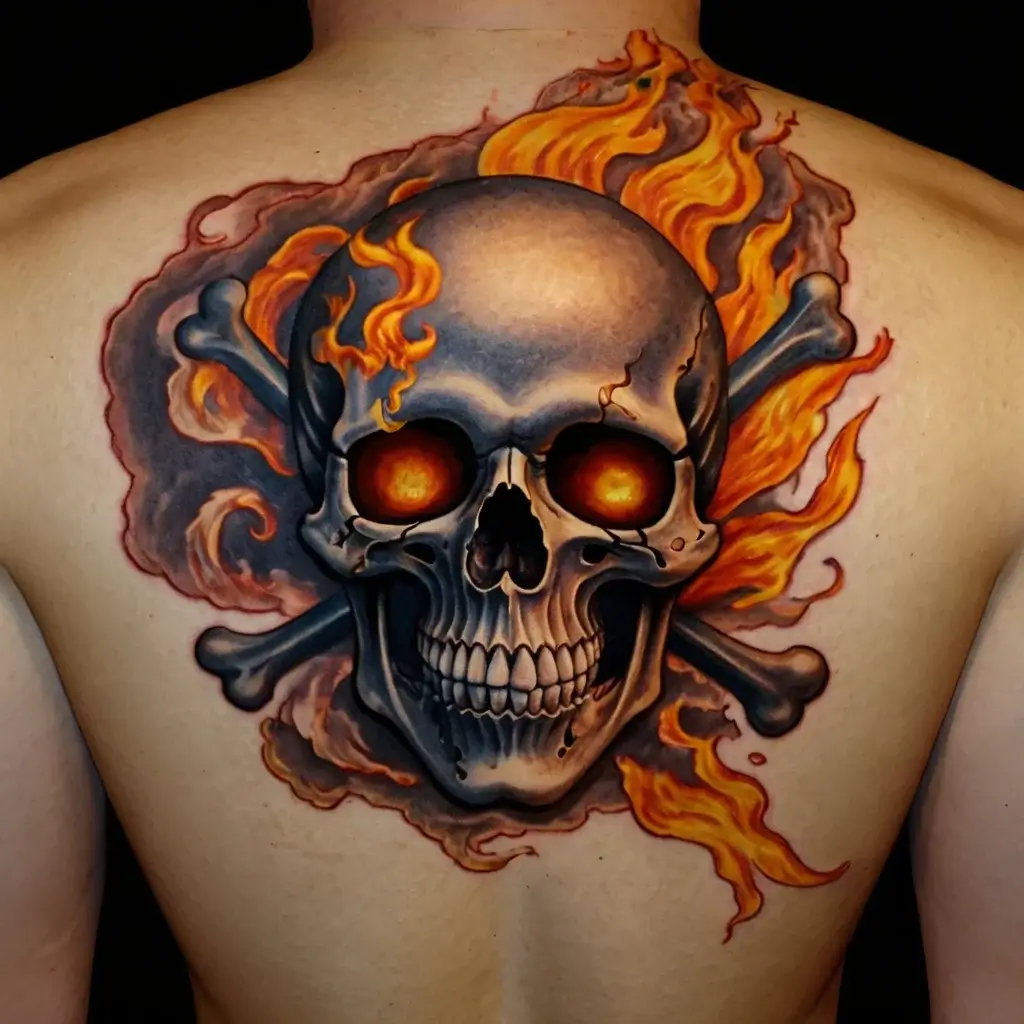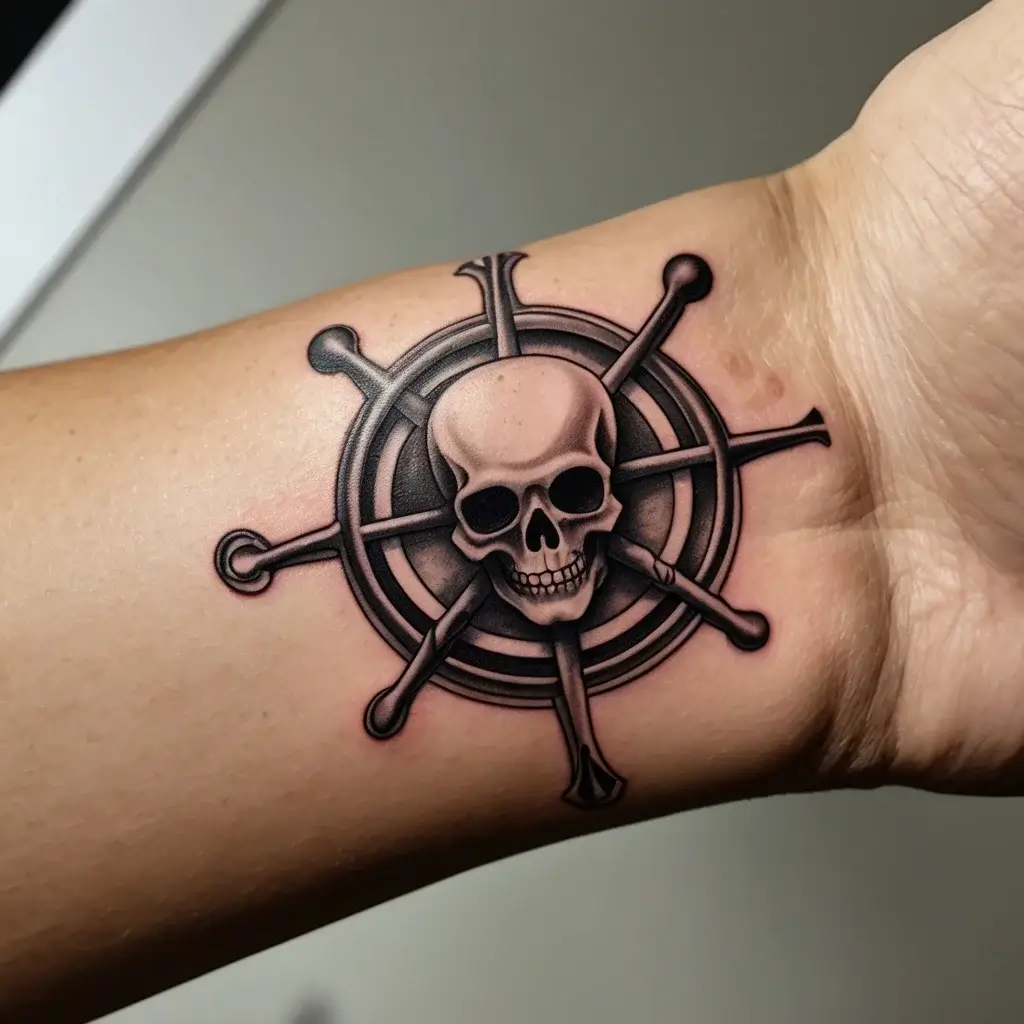The Jolly Roger tattoo is more than just a pirate’s flag. While most people think of it as the skull and crossbones from pirate tales, it carries deeper meanings. For some, it’s a symbol of freedom, rebellion, and living life on their own terms. For others, it represents loyalty and the close bonds pirates shared on the high seas.
The history behind the Jolly Roger adds to its appeal. Once a warning to ships of approaching danger, it’s now a popular tattoo choice for those who see themselves as independent and unafraid of risk. This article will explore the rich history, symbolism, and modern meanings behind the Jolly Roger tattoo. Whether you love the idea of adventure or simply value the idea of living free, the Jolly Roger might be the perfect symbol to wear on your skin.

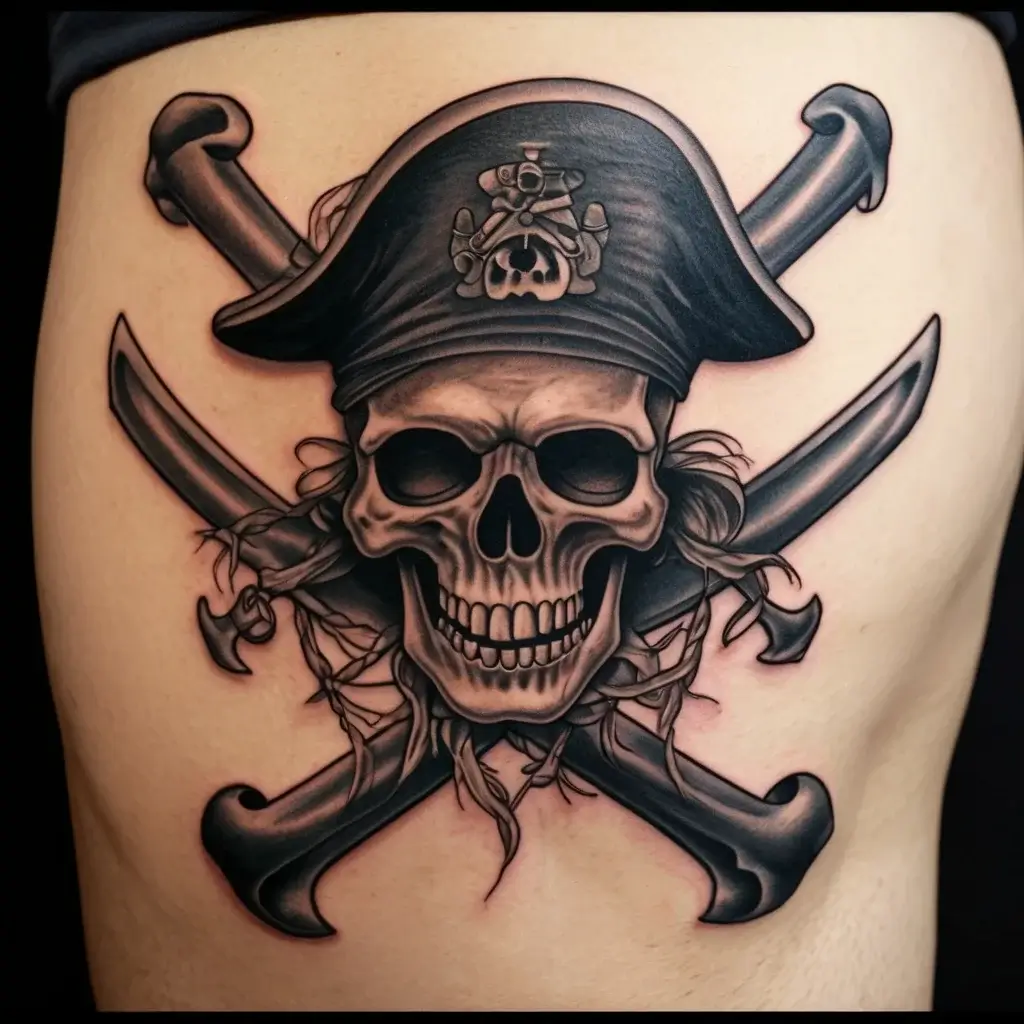
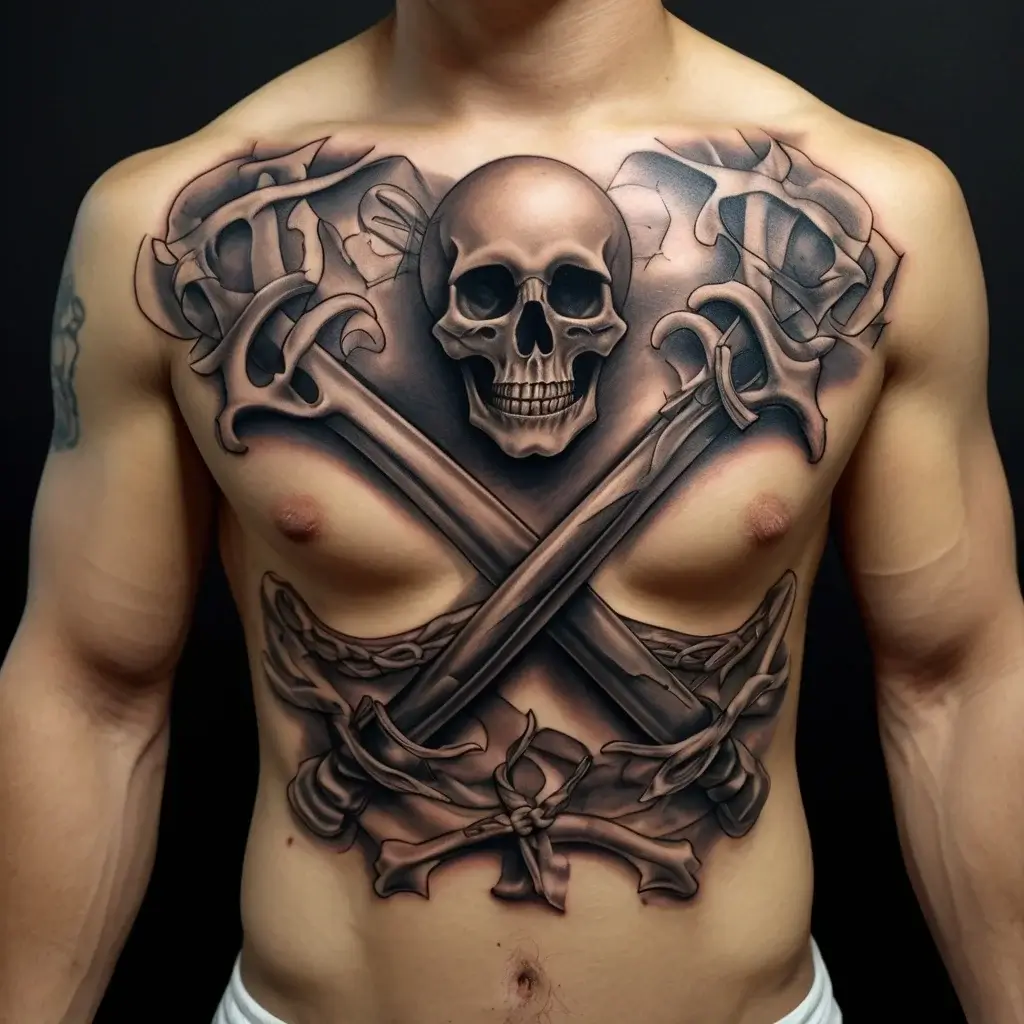
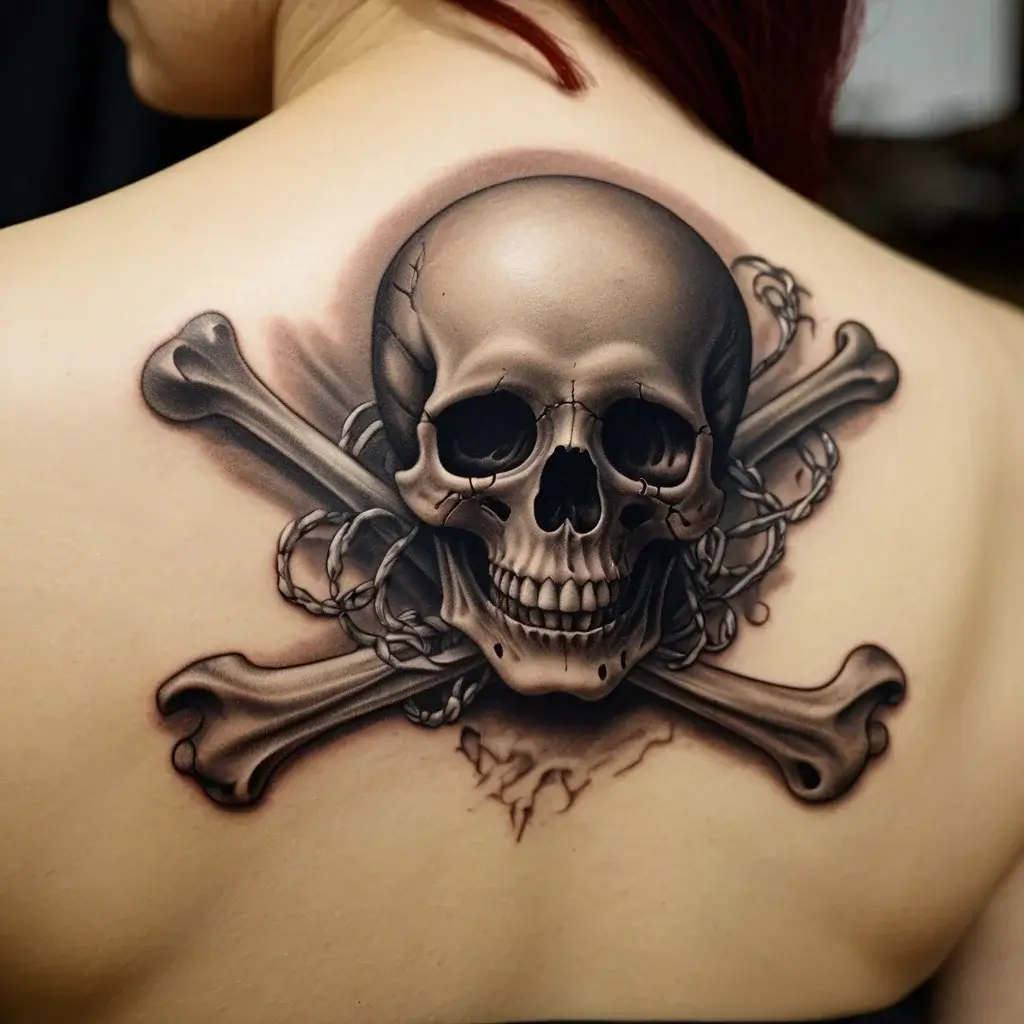
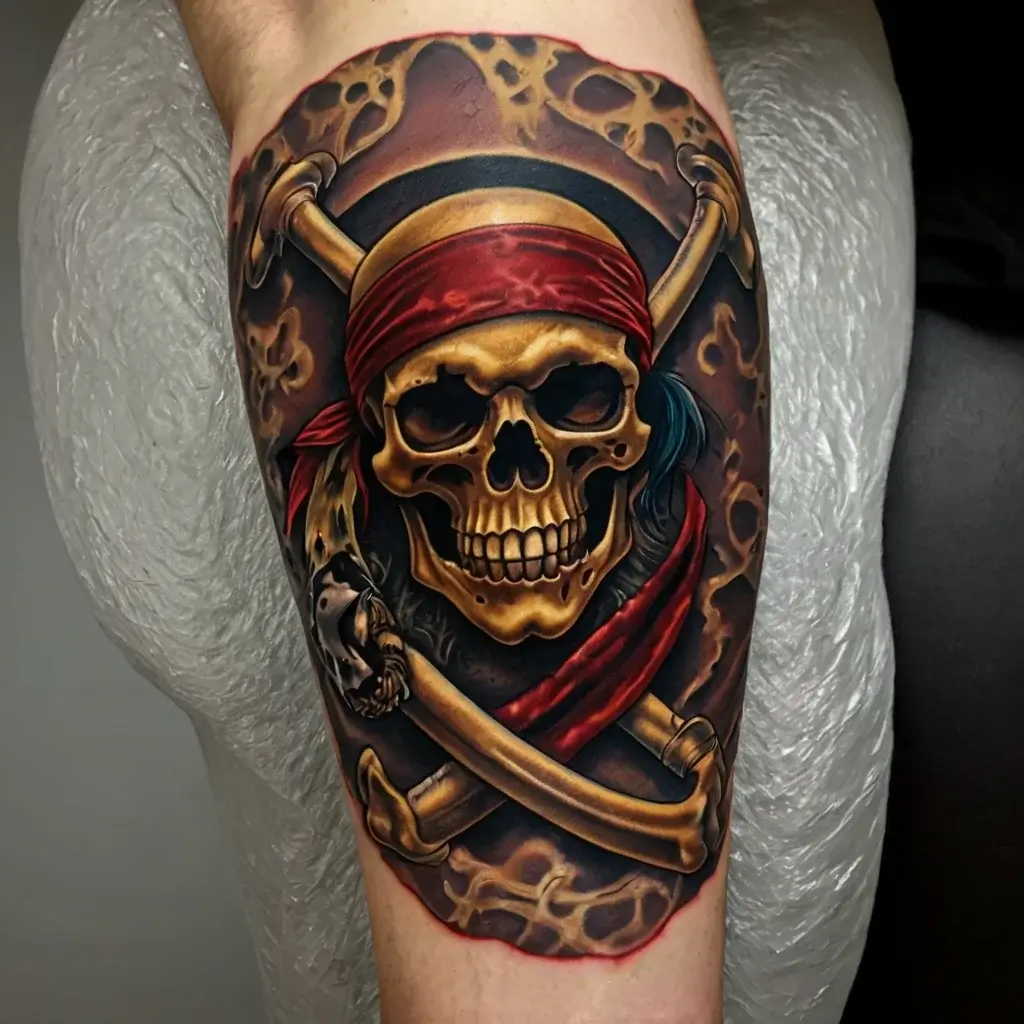
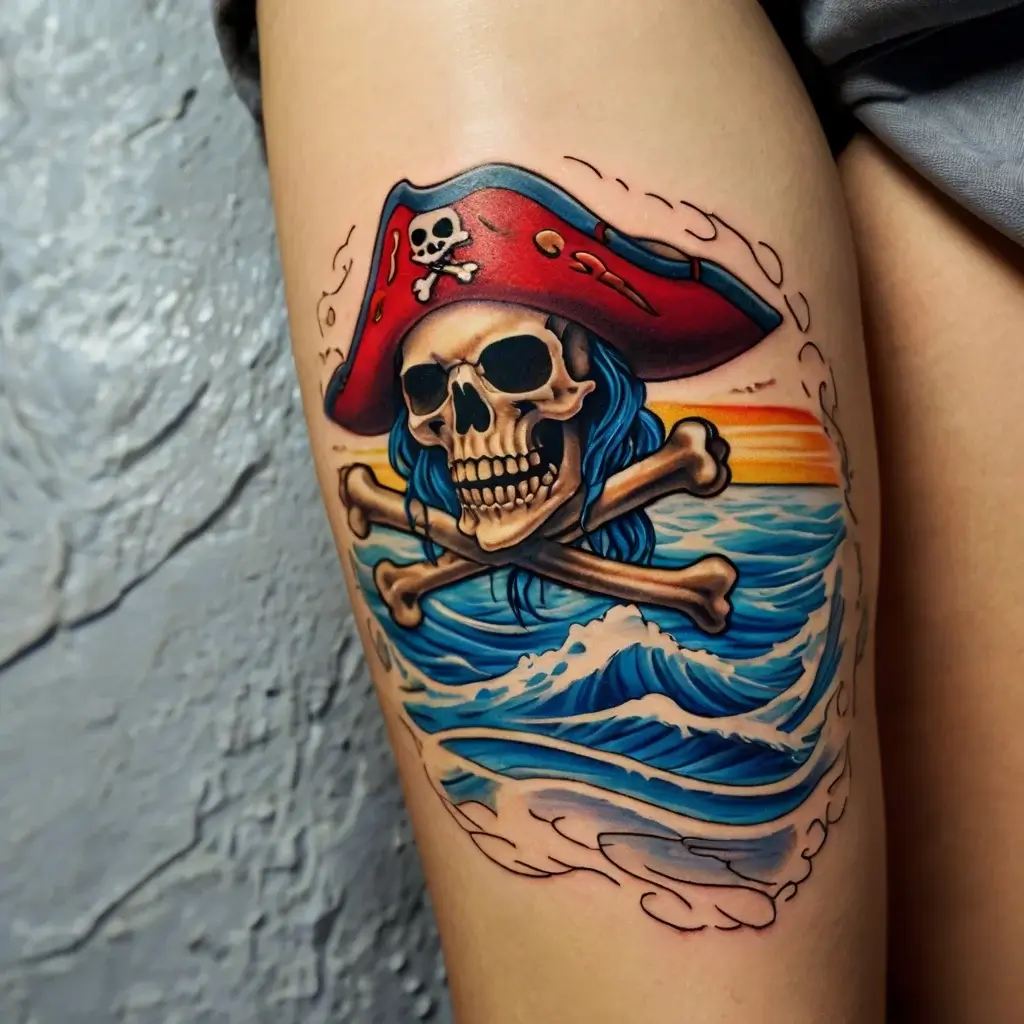
Meaning Behind the Jolly Roger Tattoo
The Jolly Roger tattoo stands for more than just a nod to the pirate life. It’s steeped in a rich history of breaking rules and challenging authority. When pirates raised the Jolly Roger flag, they weren’t just announcing their arrival—they were declaring a life free from society’s chains.
Rebellion and Defiance
Think of the Jolly Roger tattoo as a bold statement against following the crowd. It’s popular among those who feel boxed in by society’s rules and want to carve out their own path. This tattoo says, “I play by my own rules.”
Freedom and Independence
Pirates sailed the seas with no one to answer to but themselves. A Jolly Roger tattoo captures that spirit of doing your own thing, on your own terms. It’s for those who value their freedom and live life on their terms, far from what’s expected.
Embracing Danger and Risk
Wearing a Jolly Roger tattoo is also a sign that you’re not afraid of a little risk. Pirates lived on the edge, and this tattoo is a nod to that risky, adventurous lifestyle. It’s perfect for anyone who sees life as a big adventure, full of challenges to tackle head-on.
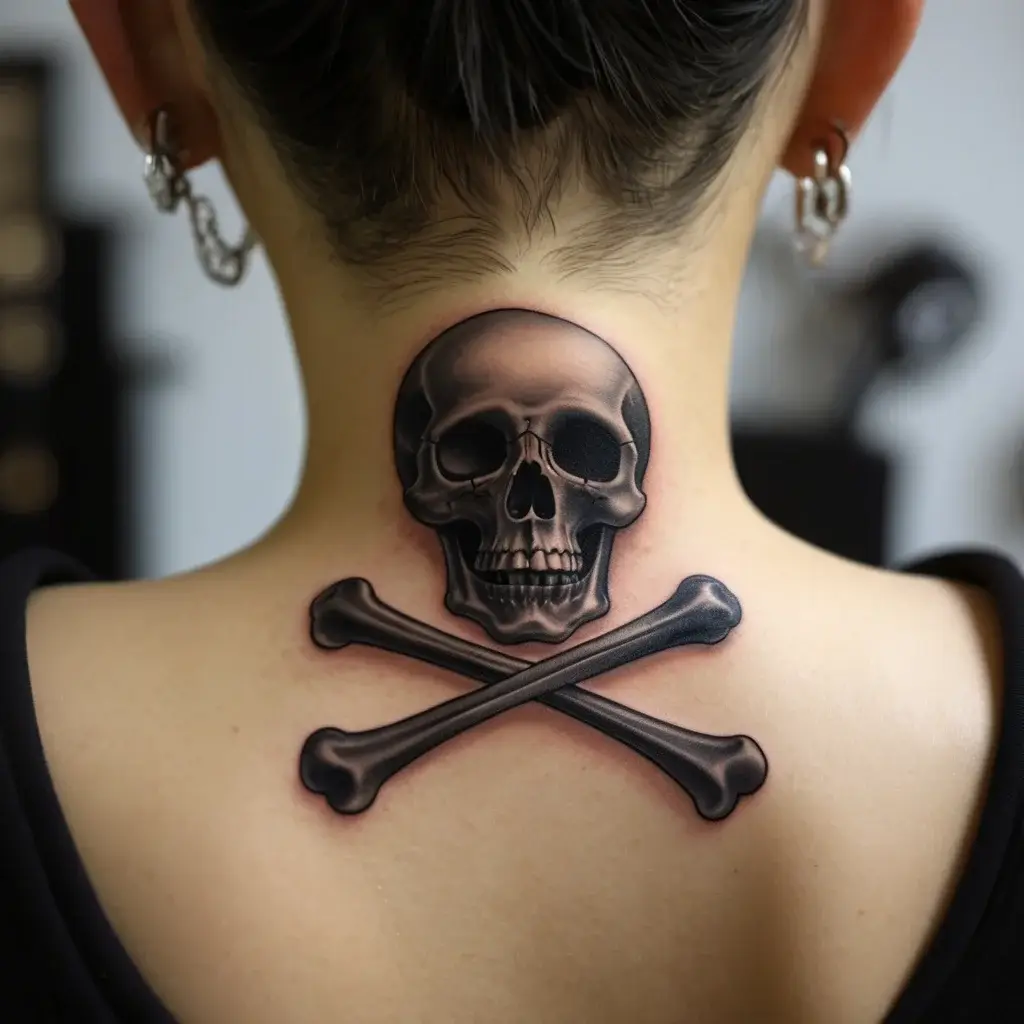
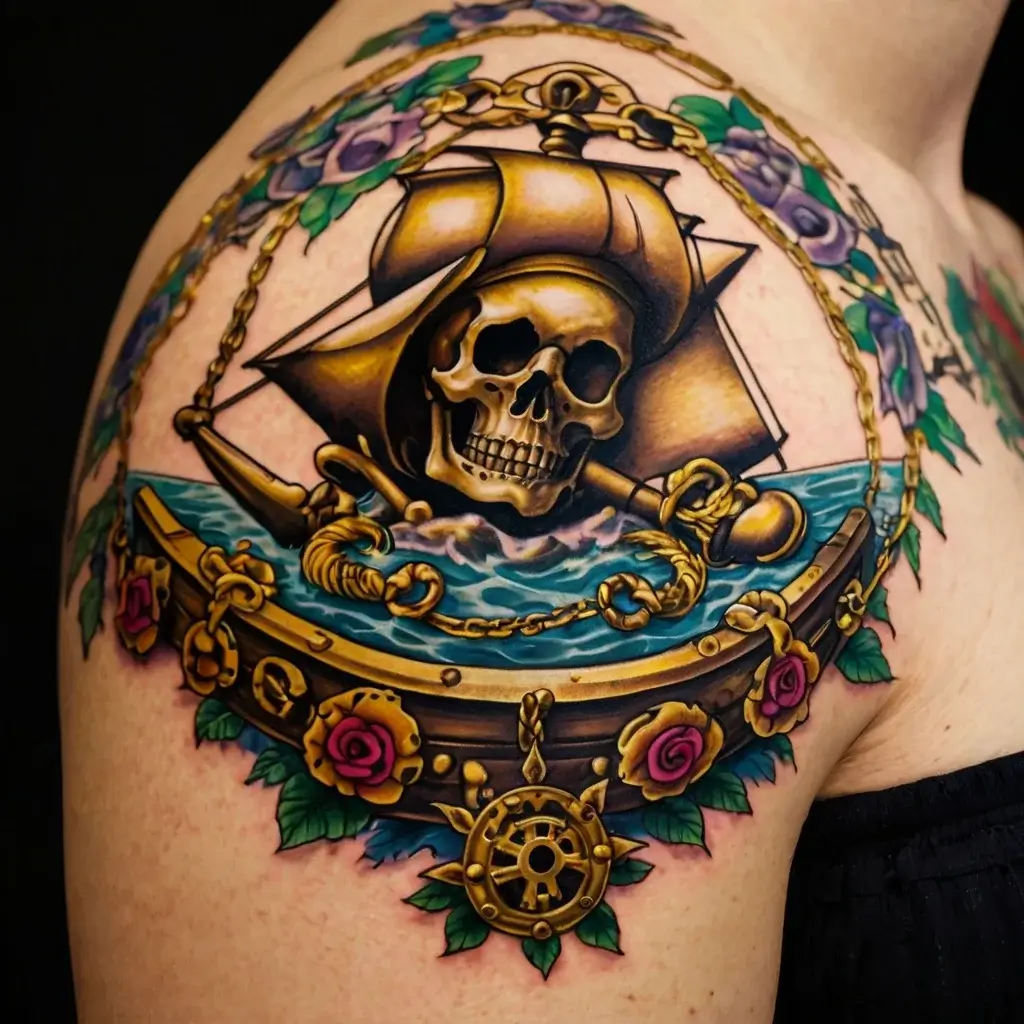

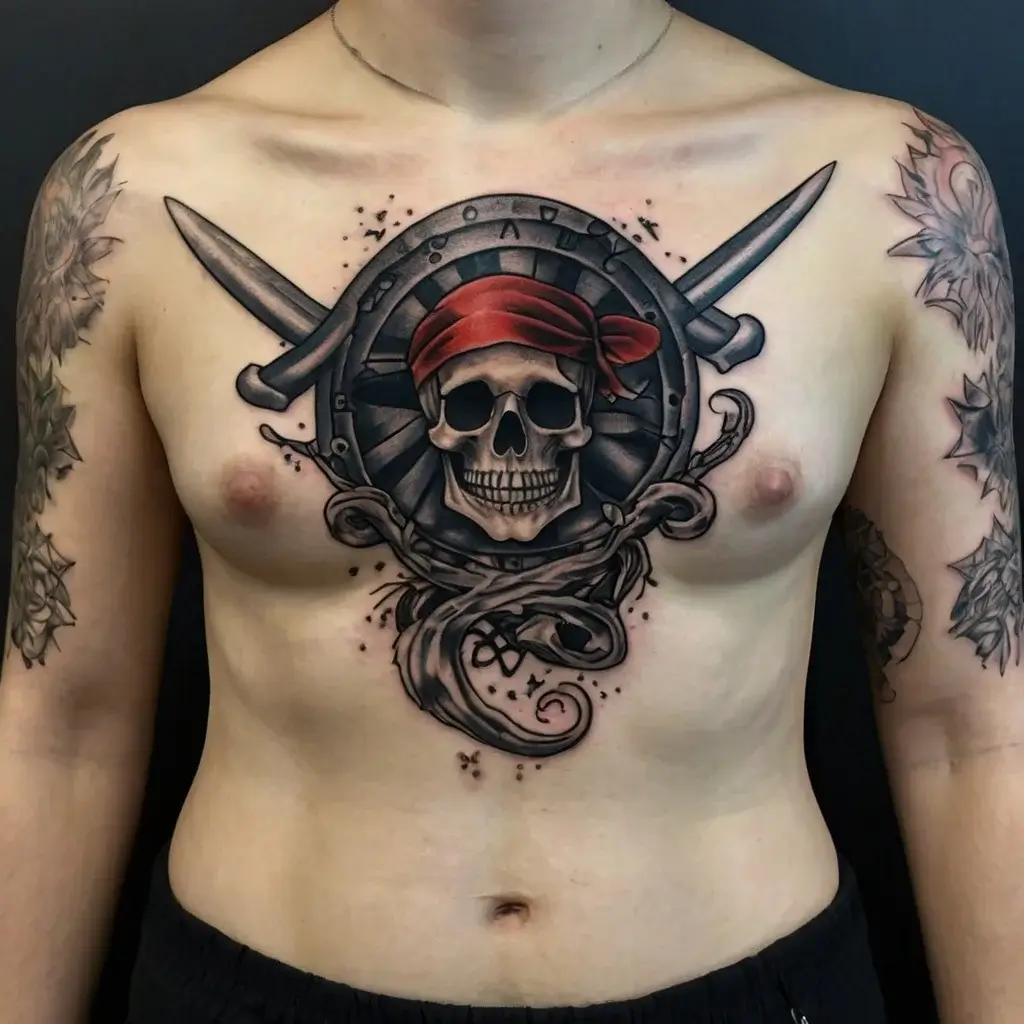

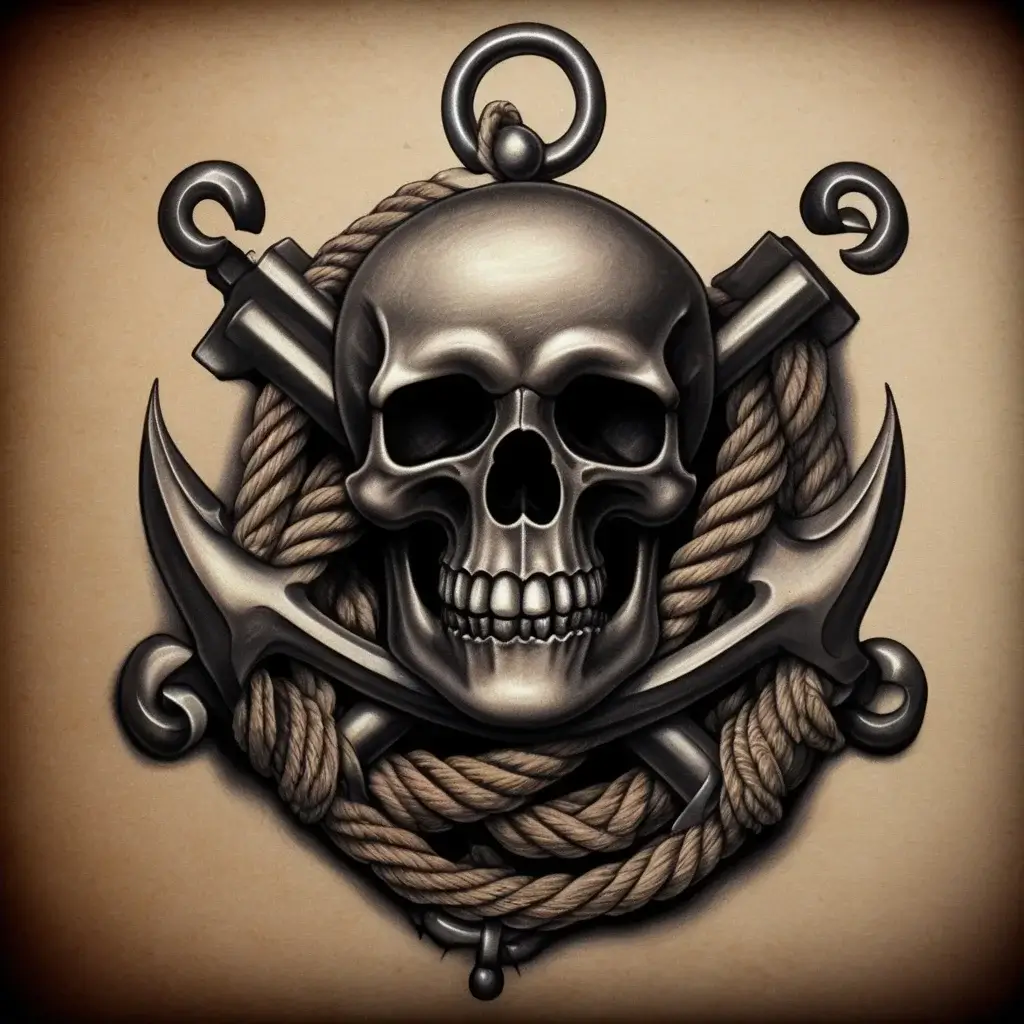
The History of the Jolly Roger
Ever wondered where that skull and crossbones on pirate flags came from? Let’s dig into the history of the Jolly Roger, a symbol that’s as fascinating as the pirates who flew it. From its early days to its modern mark on tattoo culture, the Jolly Roger has a tale worth telling.
Origin of the Jolly Roger Flag
The name “Jolly Roger” might come from “joli rouge,” which is French for “pretty red.” It’s a bit funny because the flag was never red—it was always the stark black and white we know today. Pirates used this flag to scare off anyone who saw it, telling them trouble was coming and it was time to give up or get ready to fight.
Historical Context: Pirates and the Jolly Roger
Back when pirates roamed the seas, flying the Jolly Roger was their way of saying they were in charge. The skull and crossbones were not just for show—they were a clear sign that danger was near. This flag often made ships surrender without a fight, saving pirates the trouble of battling it out.
Evolution of the Jolly Roger Design
As time went on, pirates began to add their own touch to the Jolly Roger. Some added swords, others an hourglass, and a few even put in bleeding hearts. Each new design was a personal twist, showing off what that pirate or crew was all about. These days, those same designs give people getting tattoos a way to express themselves, mixing a bit of personal story with a symbol of freedom and rebellion.
You may also like Angel Tattoos: Meaning, Significance and Symbolism (100 Designs)

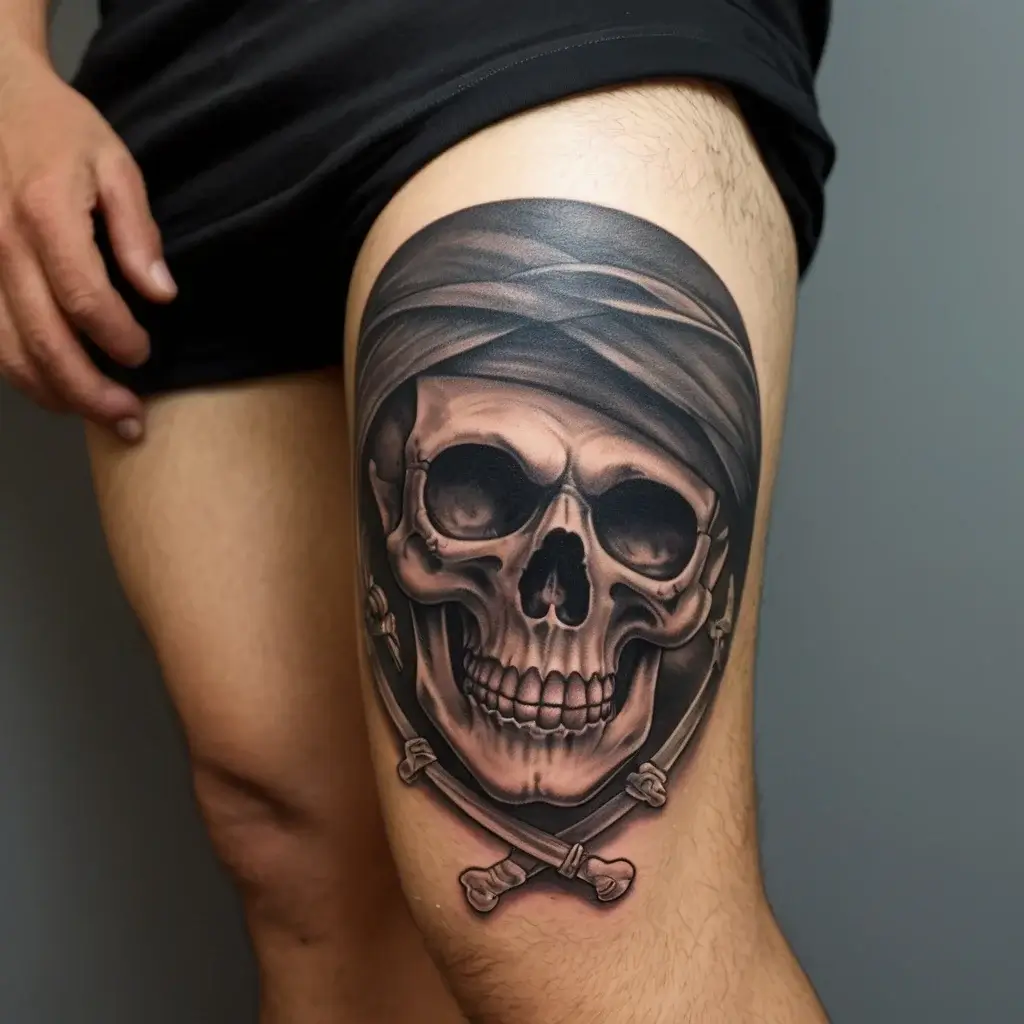
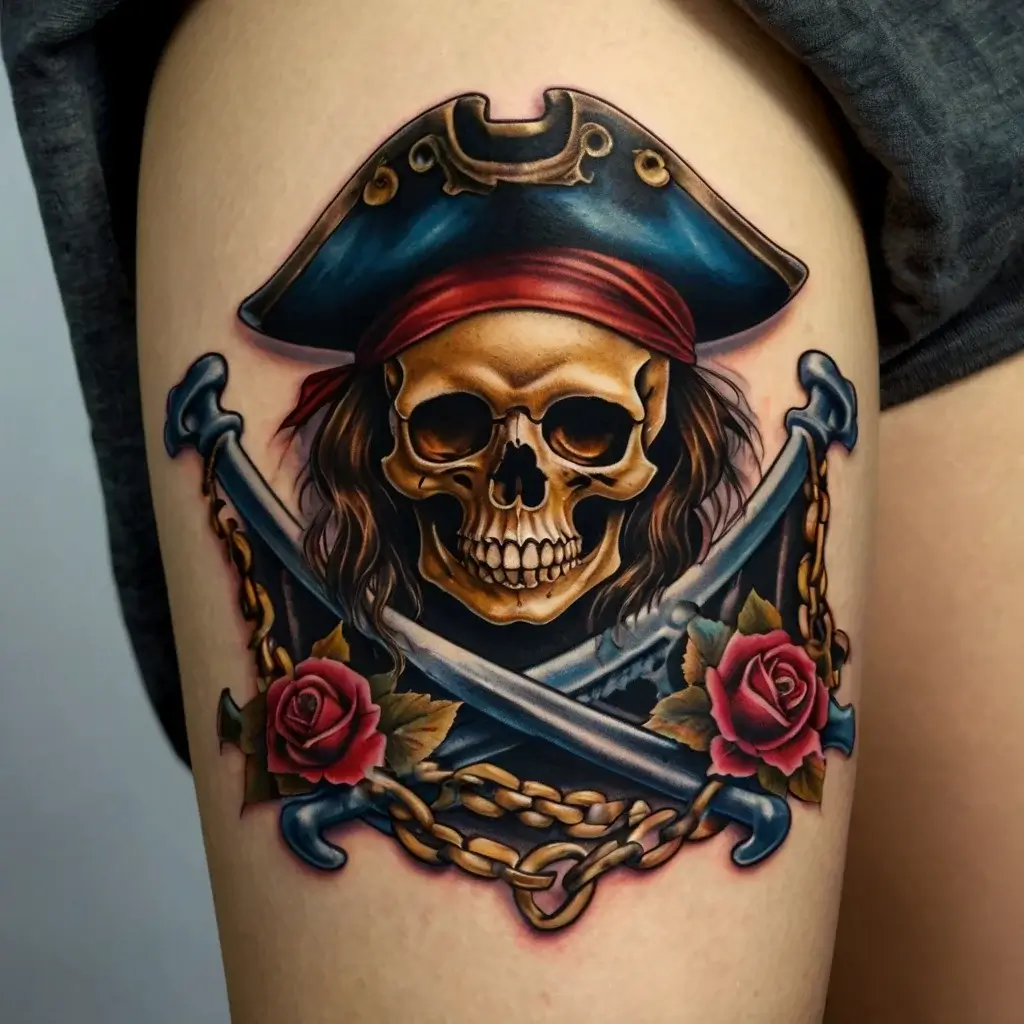

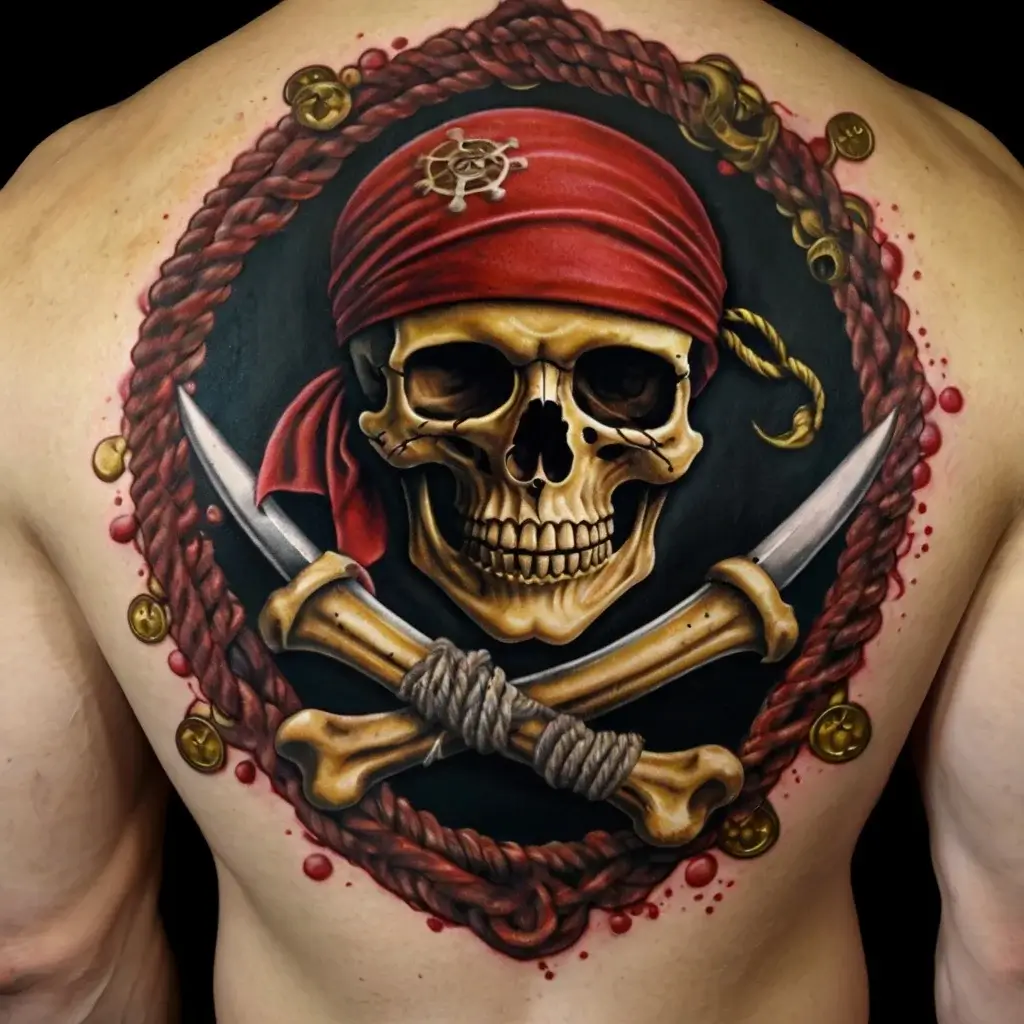
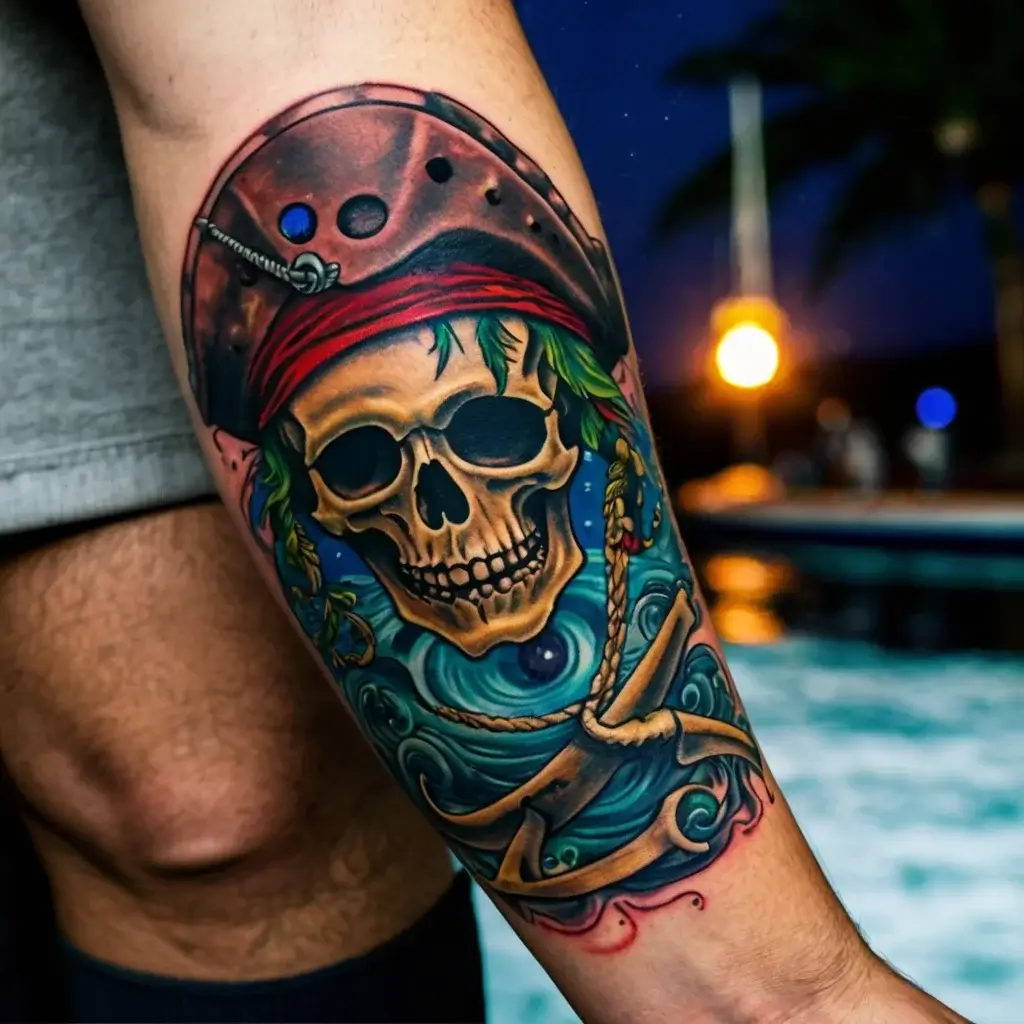
Symbolism in Pirate Culture
Diving into pirate symbols is like opening a treasure chest—there’s more to them than meets the eye. The Jolly Roger, with its classic skull and crossbones, isn’t just for show. It’s a deep dive into the lives of pirates, their strong bonds, and their bold stand against the norms.
Life on the Edge: Pirates as Outlaws
Pirates were the ultimate outlaws, living a life where danger was part of the daily routine. The skull and bones on their flags? A clear sign they played by their own rules, risking it all every single day. If you’re drawn to this tattoo, it might be that you see a bit of the rebel in yourself, living life on the edge, your way.
Brotherhood and Unity Among Pirates
Despite their rough reputation, pirates depended on each other. The Jolly Roger symbolized their tight-knit community, a promise of loyalty in the lawless seas. In tattoo form, it’s a nod to sticking together with those who back you up and valuing deep bonds over everything.
Pirates’ Attitudes Toward Authority and Social Norms
Pirates didn’t just break rules—they flipped them the bird. Flying the Jolly Roger was their way of saying they were free from society’s chains. It’s perfect for anyone who feels the same way today, questioning norms and valuing personal freedom above all.



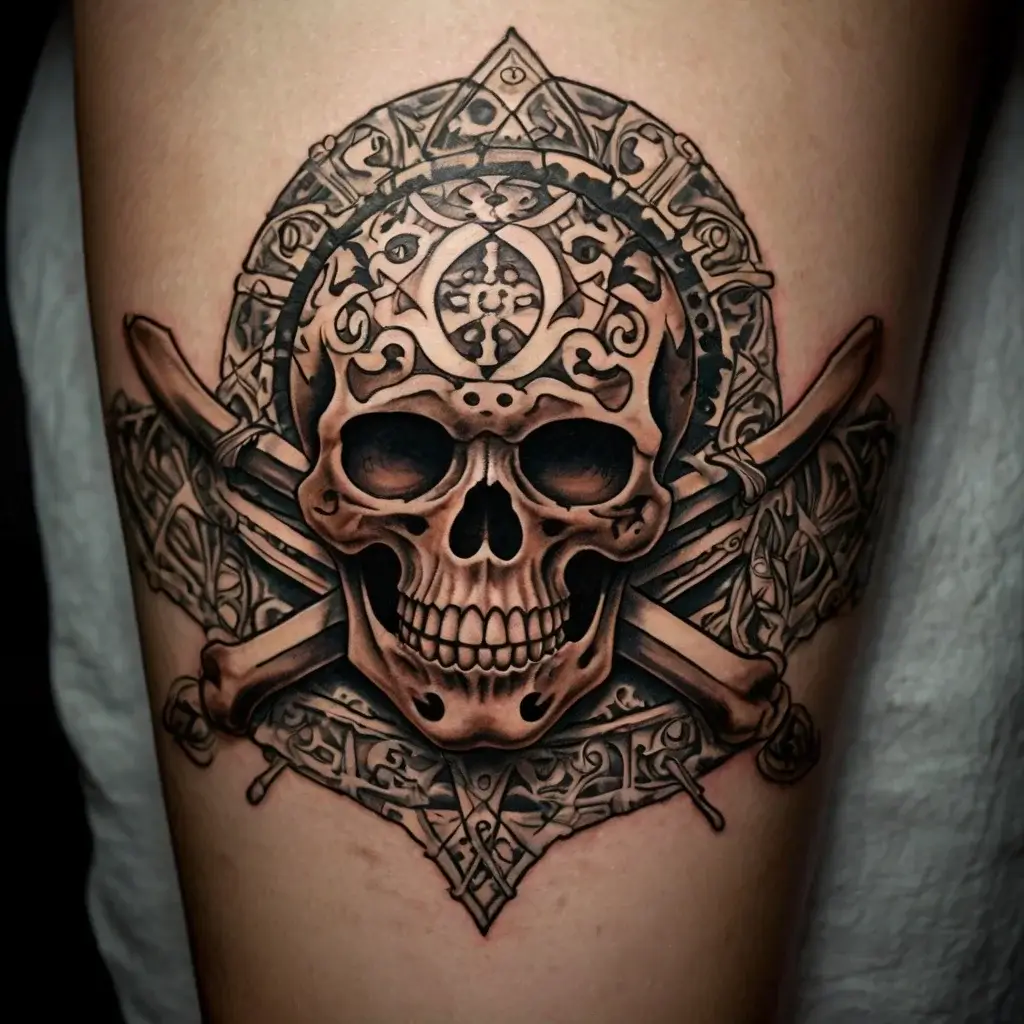

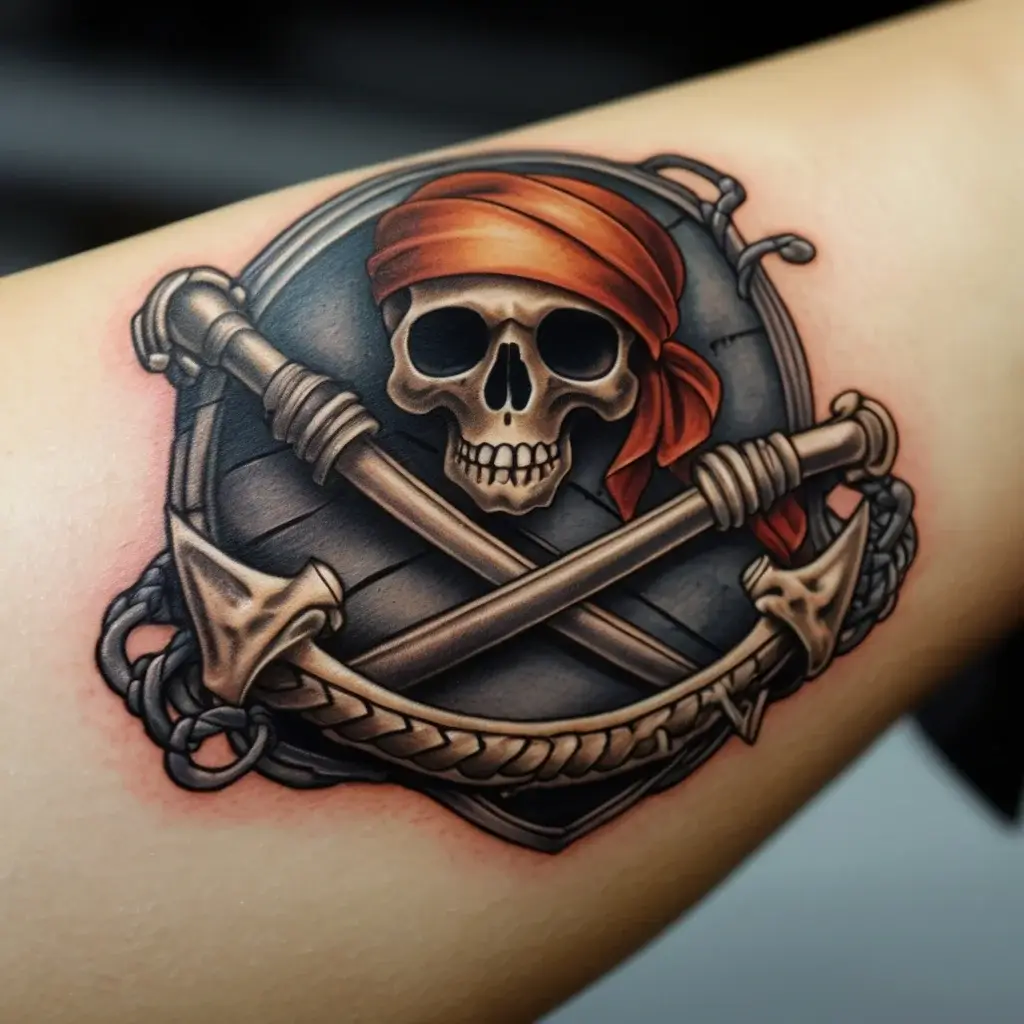
Personal Significance of a Jolly Roger Tattoo
The Jolly Roger tattoo goes beyond its pirate roots to express deeply personal meanings for those who choose to wear it. It’s not just about an affinity for pirate lore; it’s a powerful form of self-expression that speaks to individuality, adventure, and remembrance.
The Tattoo as a Statement of Individuality
Choosing a Jolly Roger tattoo can be a bold statement of individuality. It sets one apart, declaring a unique identity in a world where it’s easy to follow the crowd. This tattoo says loud and clear, “I live by my own rules.” It appeals to those who prize their independence and view themselves as outsiders, not bound by the typical constraints of society.
Adventure and the Spirit of Exploration
The Jolly Roger symbolizes the thrill of adventure and the endless pursuit of discovery—traits that defined the golden age of piracy. For modern adventurers, this tattoo can represent a life driven by the desire to explore, seek out the unknown, and live with a sense of daring. It’s for those who see life as a grand adventure, where the journey itself is the treasure.
A Memorial to Fallen Friends or Loved Ones
For some, the Jolly Roger tattoo holds a poignant significance—it can be a memorial to friends or loved ones who have passed away. Just as pirates used the flag to signal their respect and camaraderie towards their mates, individuals today might choose this tattoo as a tribute to someone who lived bravely, freely, and on their terms. It’s a way to keep the spirit of a departed loved one alive, celebrating their life and the memories shared.
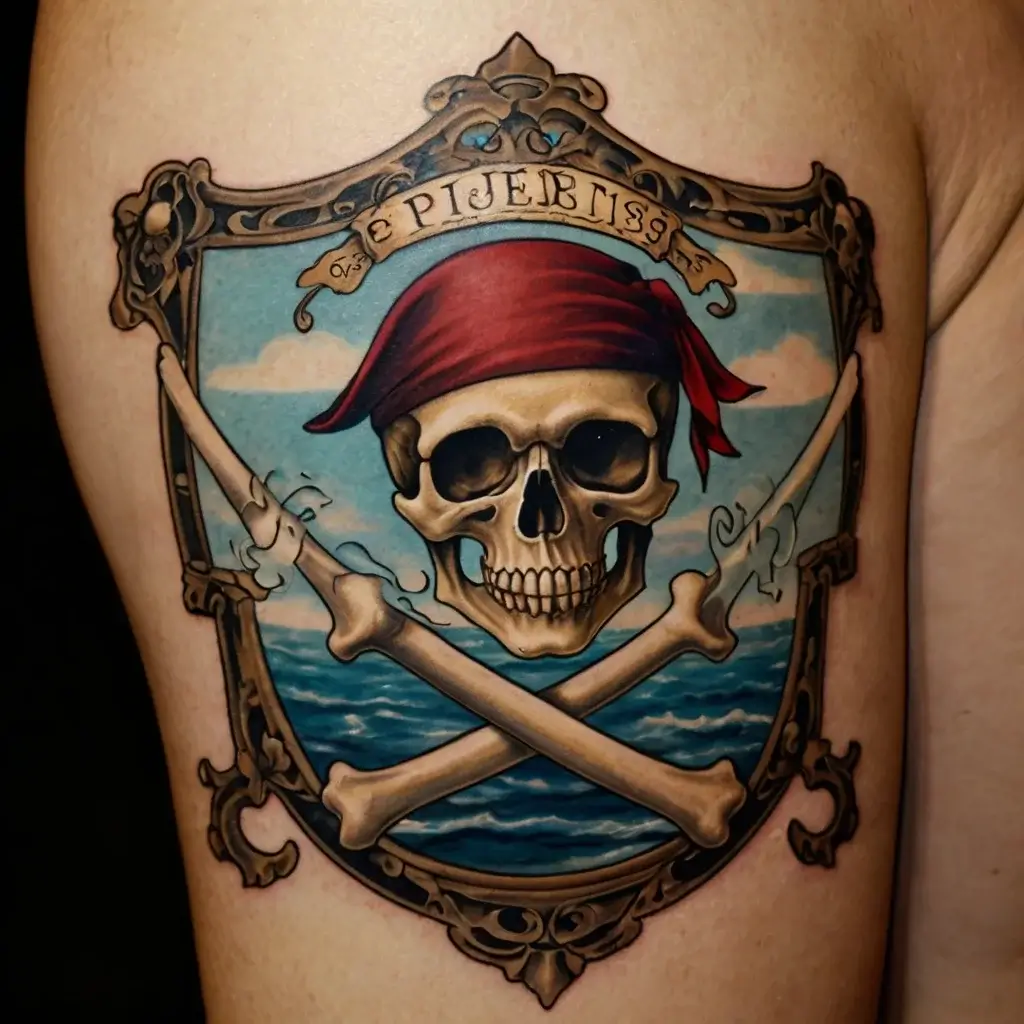
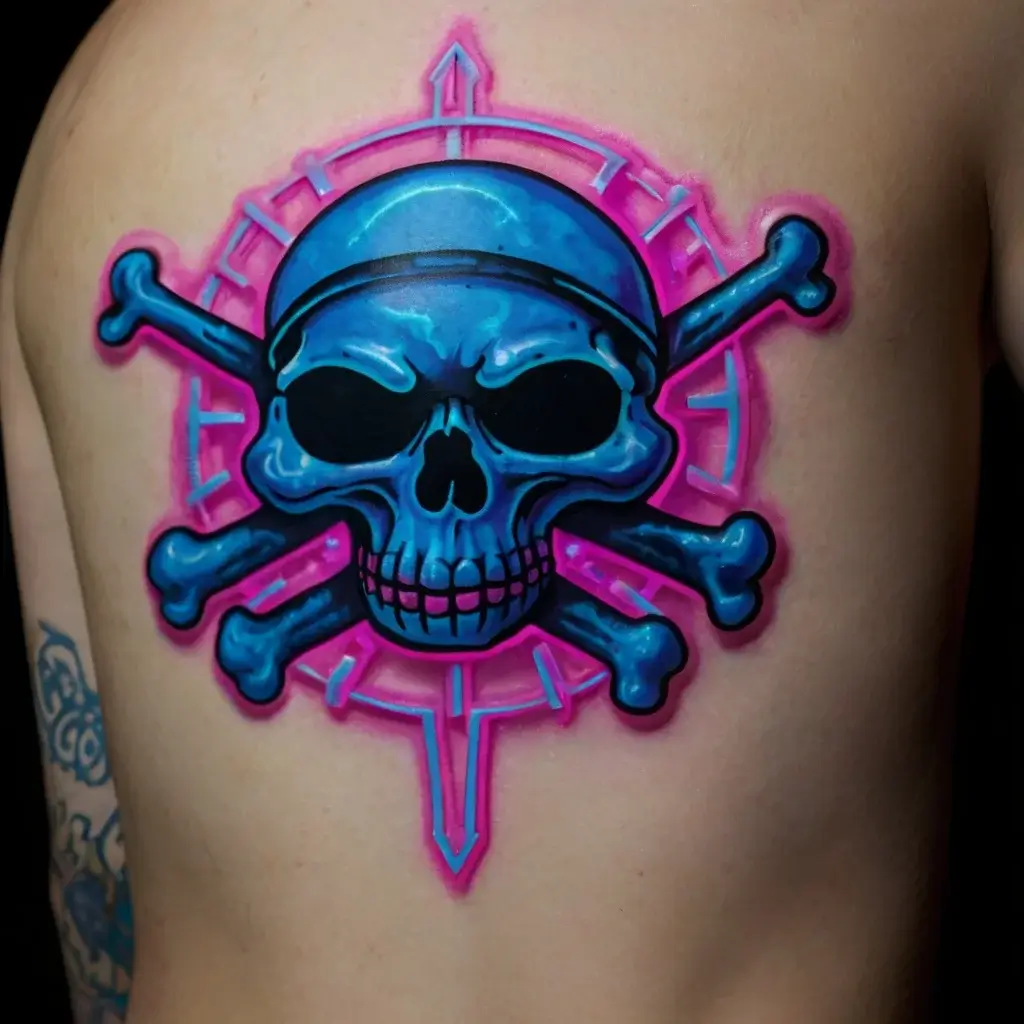
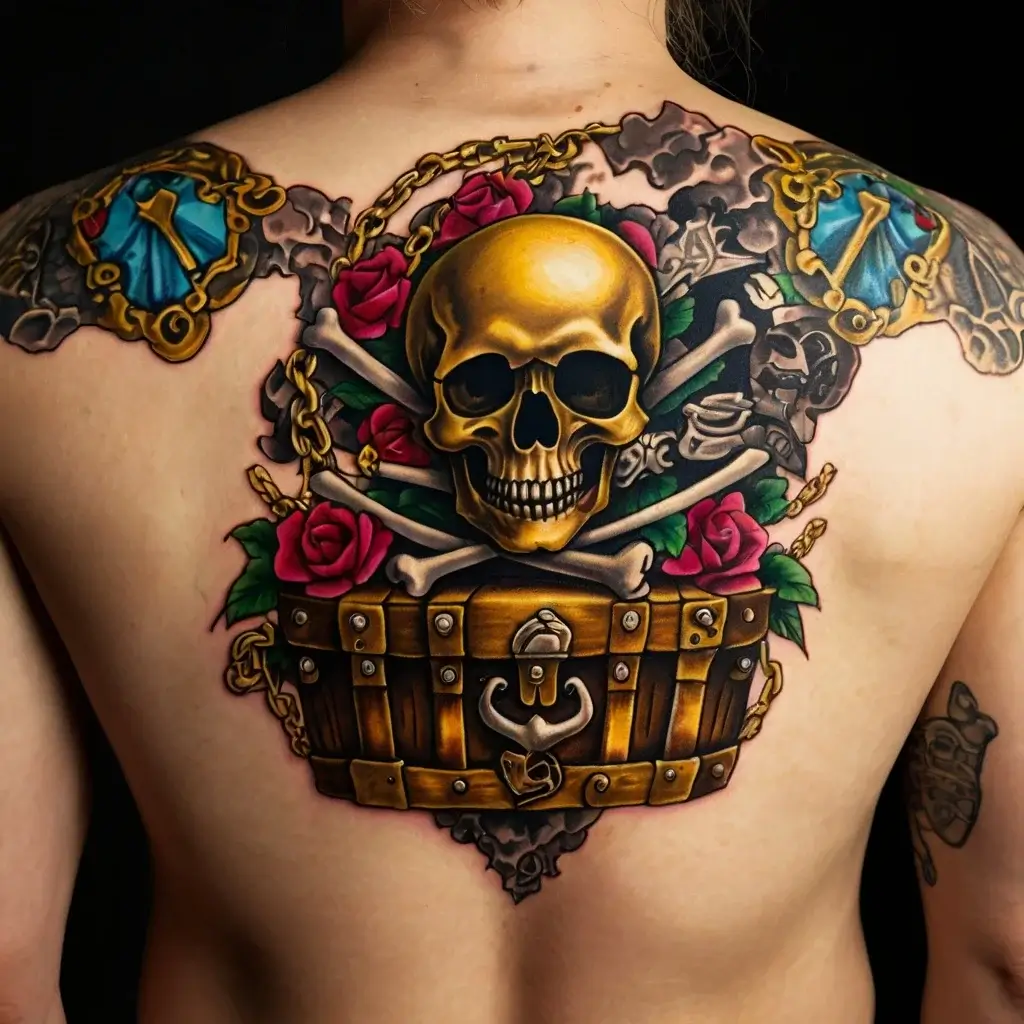
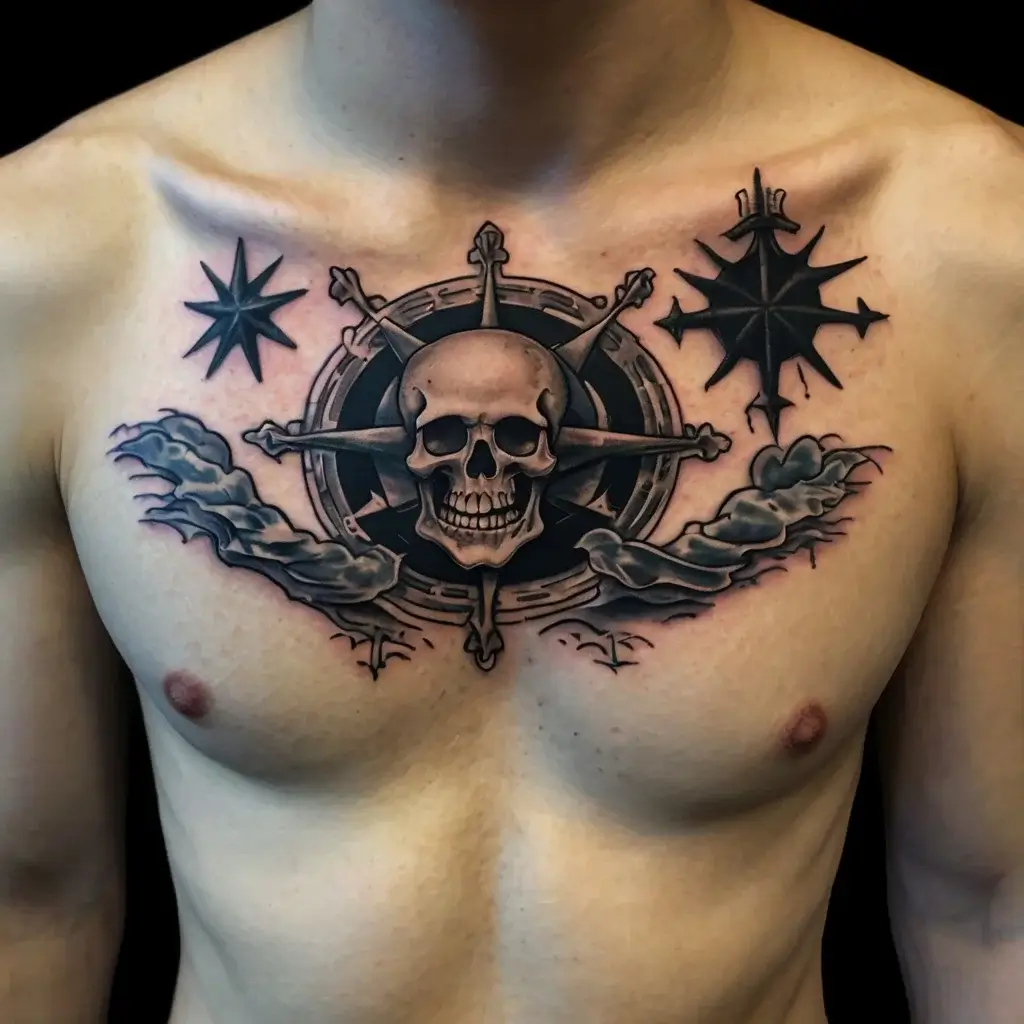
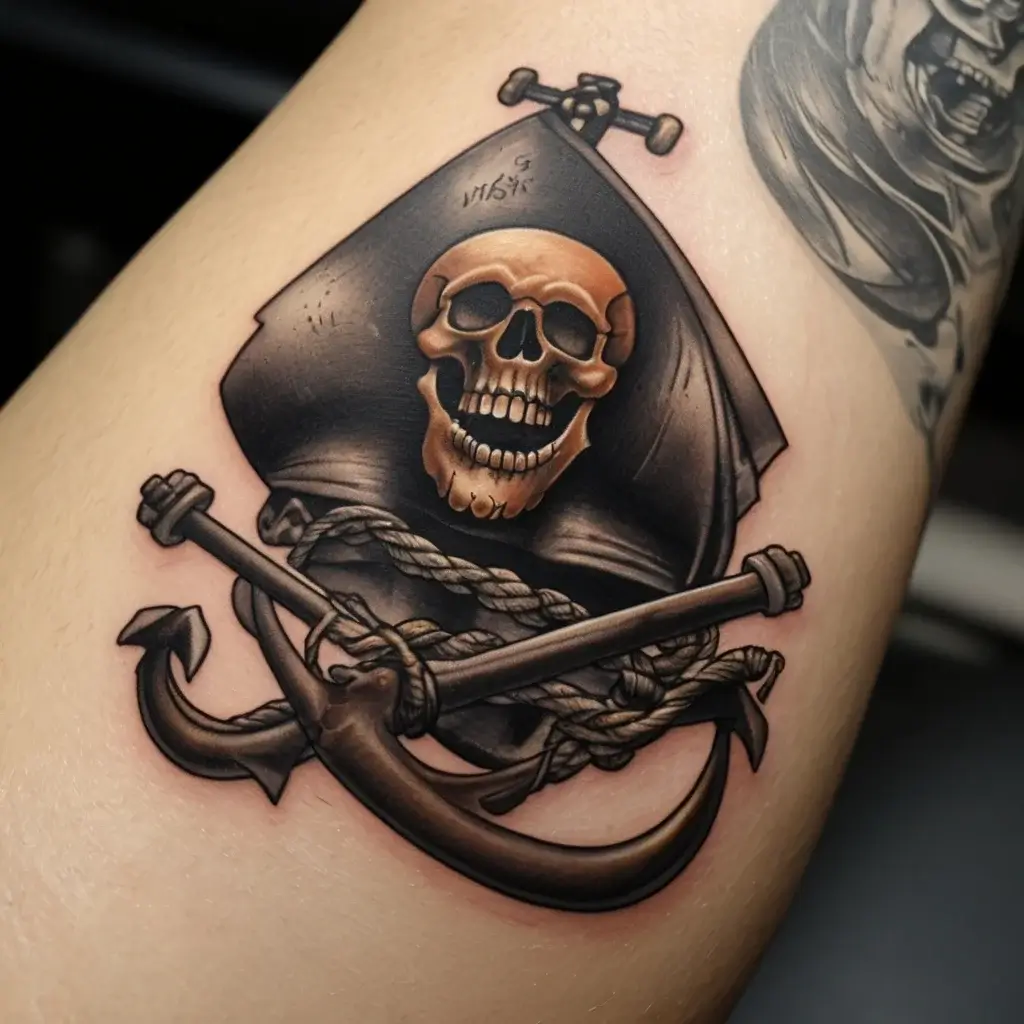
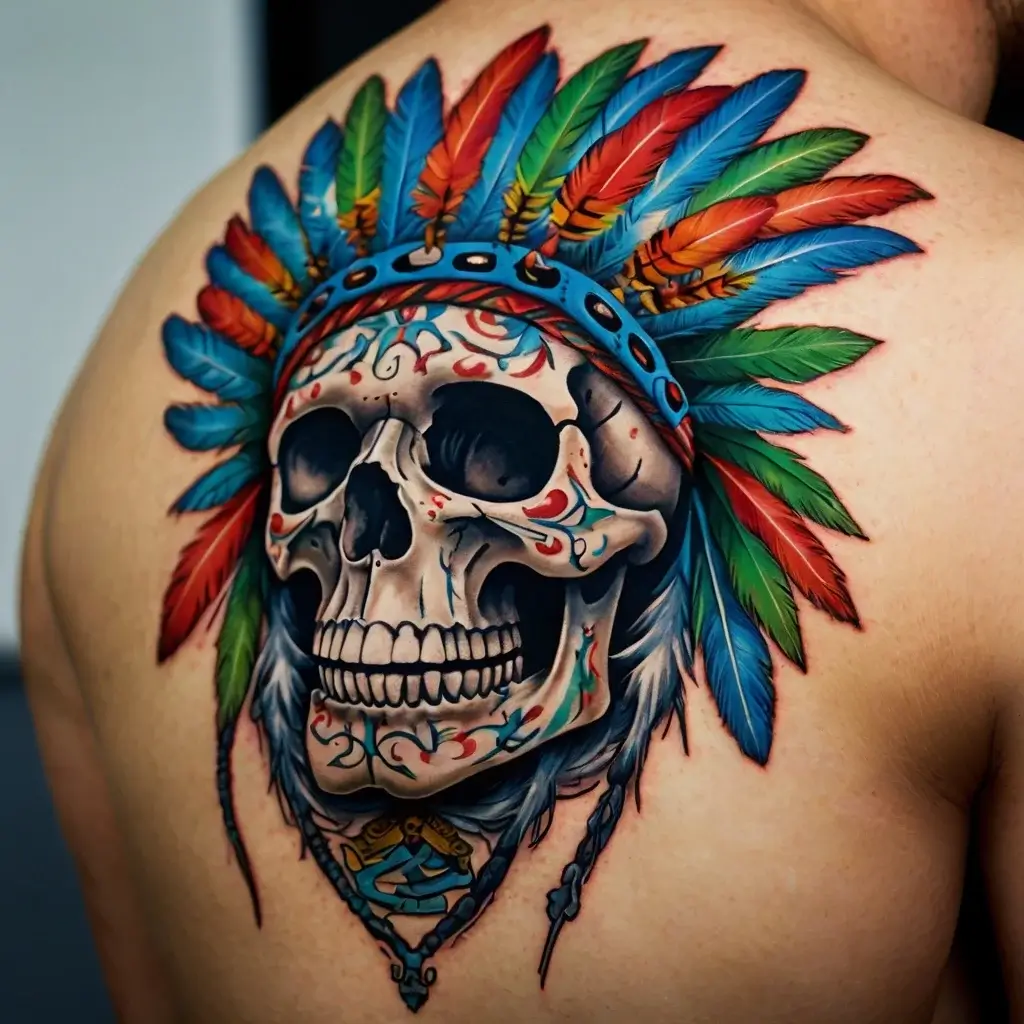
Variations of the Jolly Roger Tattoo Design
The Jolly Roger tattoo isn’t just one-size-fits-all. From the classic look to colourful twists, this pirate symbol has come a long way from its days at sea. Whether you’re all about keeping it traditional or you want to mix in some personal style, there’s a Jolly Roger for every taste. Let’s check out the different styles out there.
Classic Black-and-White Skull and Crossbones
First up, the classic style: black and white, with a skull over crossed bones. It’s straightforward and striking, capturing the raw spirit of pirate life—danger, defiance, and a touch of doom. This design doesn’t mess around; it’s all about making a bold statement.
Colorful and Artistic Interpretations
If plain black and white isn’t your thing, how about adding some colour? Tattoo artists today get creative with the Jolly Roger, splashing it with reds, blues, or any colour that means something to you. A colourful tattoo can turn the old pirate flag into a modern masterpiece on your skin.
Jolly Roger with Additional Elements
Some folks like to throw in extras like ships, anchors, or compasses to tell a bigger story. Each element adds a layer—maybe it’s about life’s journey (ships), staying solid in tough times (anchors), or finding your way (compasses). It’s about making the tattoo truly yours, with symbols that speak to your experiences or dreams.

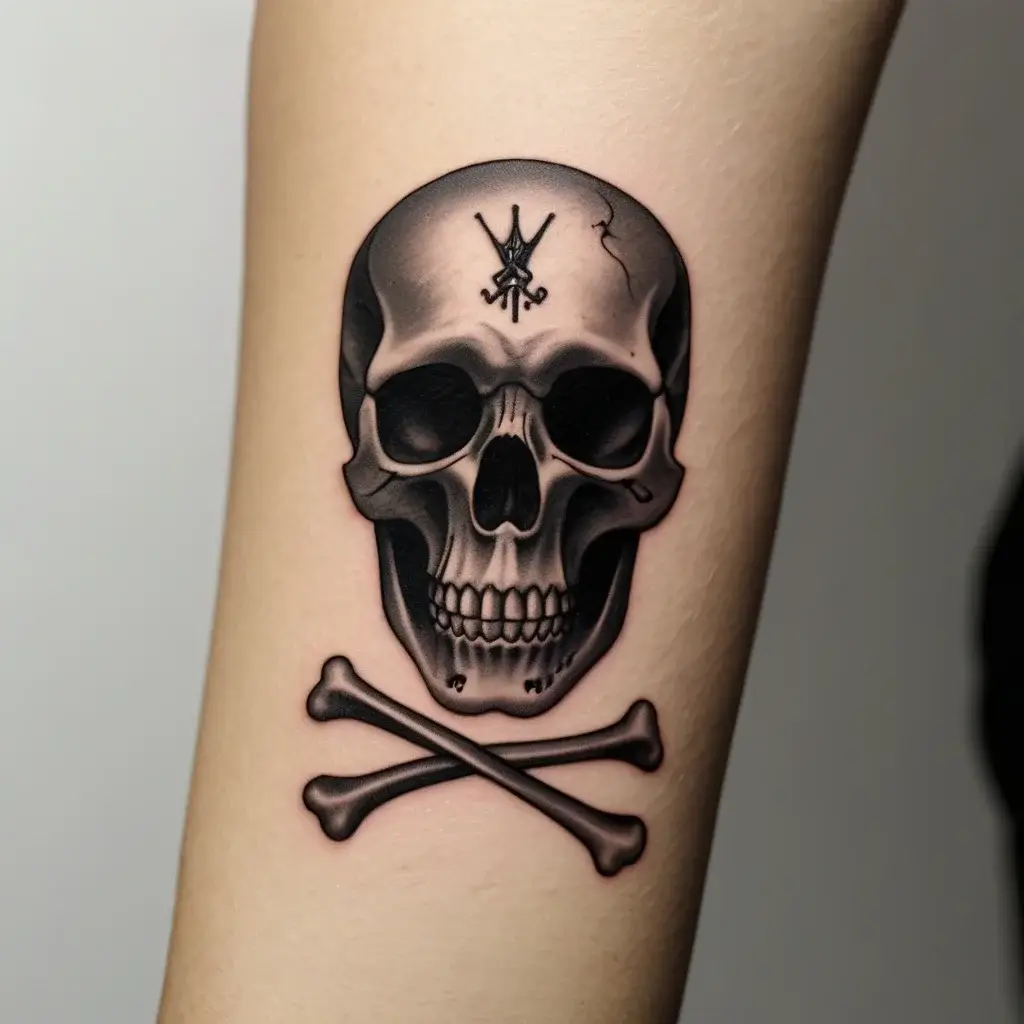

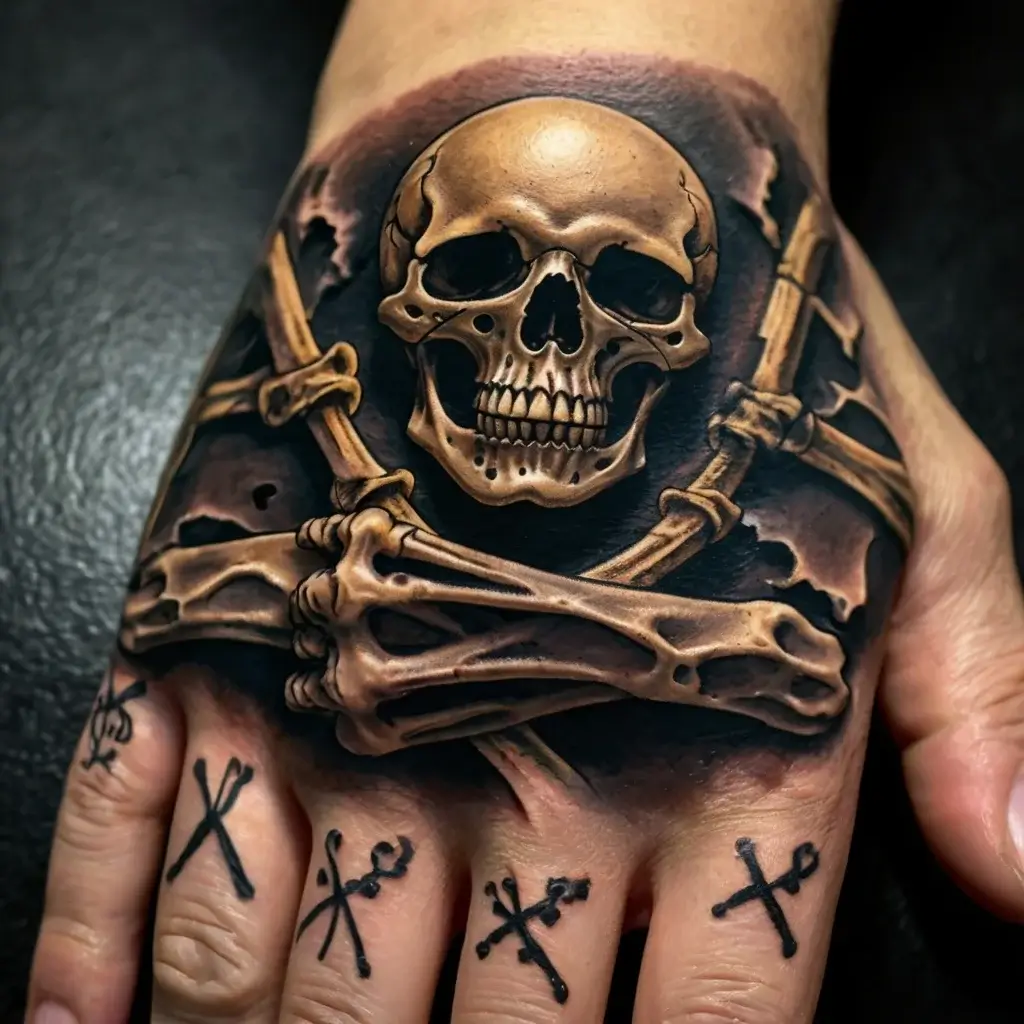
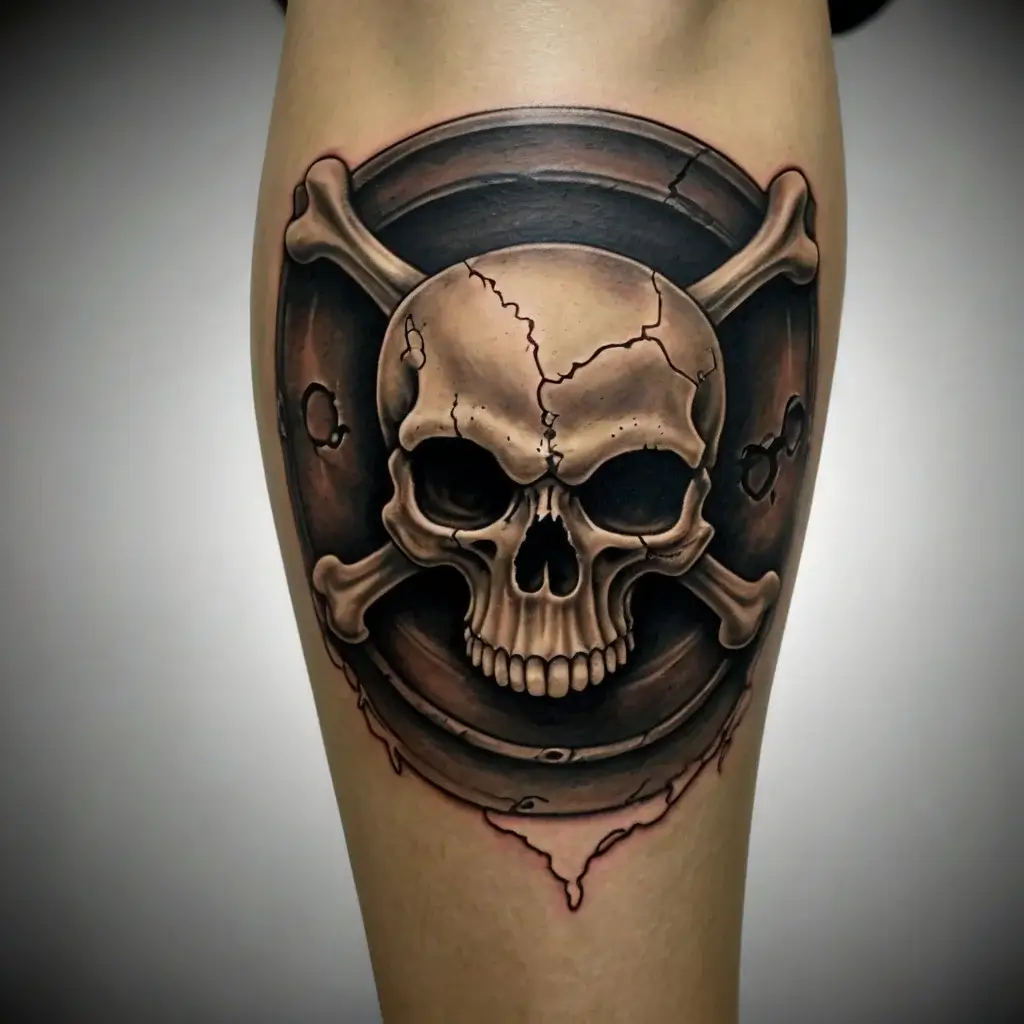
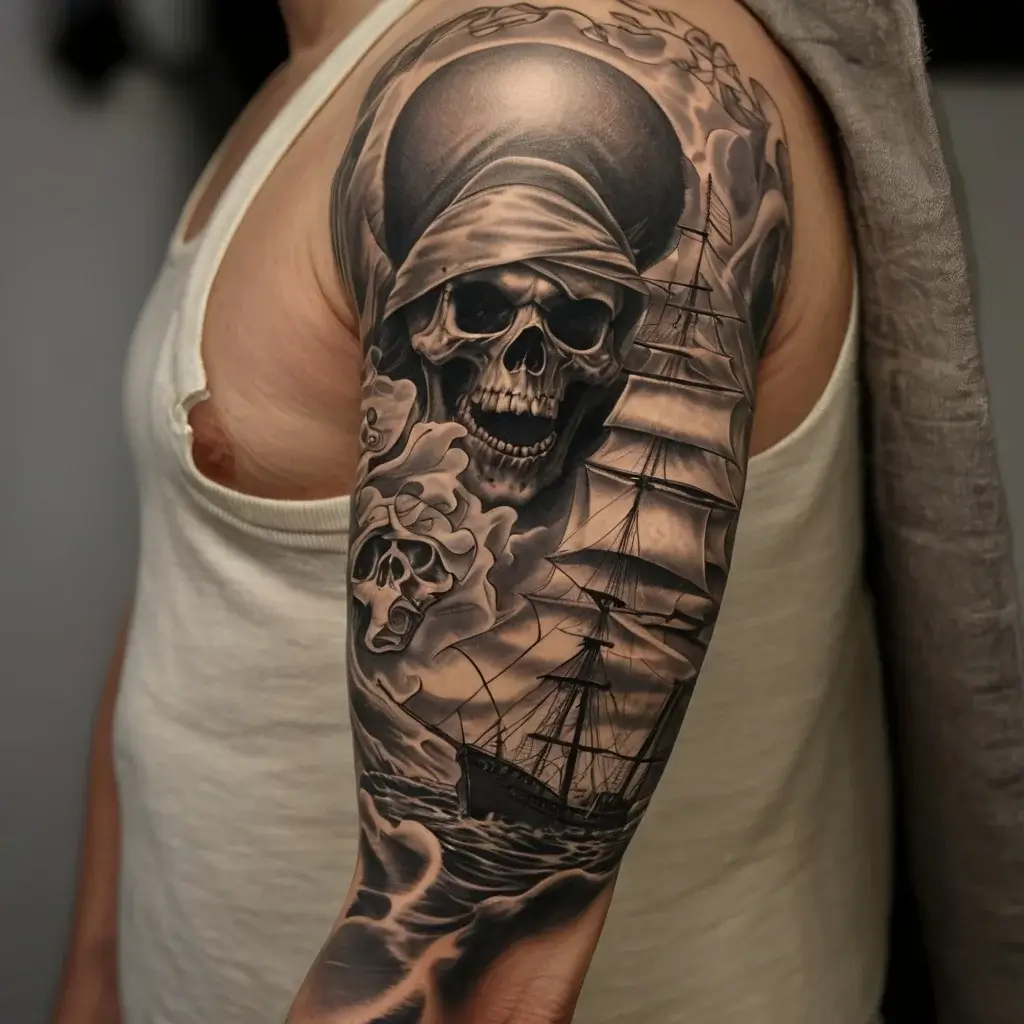
Common Misconceptions About Jolly Roger Tattoos
The Jolly Roger tattoo might bring pirates to mind, but there’s a lot more to it than just skull and crossbones. Let’s set the record straight on some of the most common misunderstandings about this symbol.
Is the Jolly Roger Only for Pirates?
It’s true, that the Jolly Roger is famous for being a pirate flag, but these days it’s not just for those who dream of sailing the high seas. Many people who love freedom and adventure choose this tattoo. It’s for anyone who feels a bit rebellious or wants to show their free spirit.
Does It Represent Violence or Crime?
Some might think that a skull and crossbones tattoo means someone likes violence or is up to no good. But that’s not usually what it’s about. Instead, people choose this tattoo to show they are strong and free. It’s more about living by your own rules and not being afraid to stand out.
Distinguishing Historical Meaning from Modern Interpretations
Back in the day, the Jolly Roger was a scary sight, warning others that pirates were around. Today, it’s a popular tattoo that means much more than just piracy. It’s about being yourself and not letting others tell you what to do. It reminds people to be bold and to live life their own way.
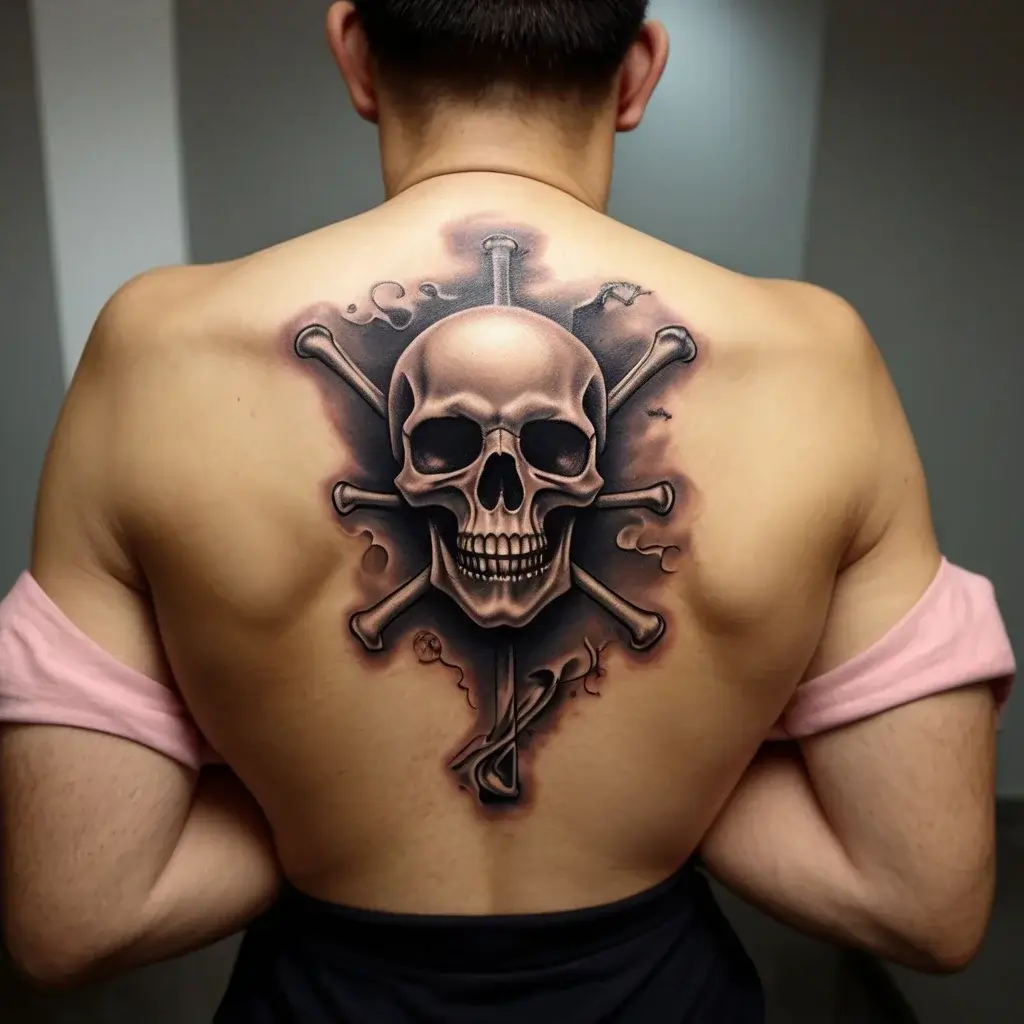

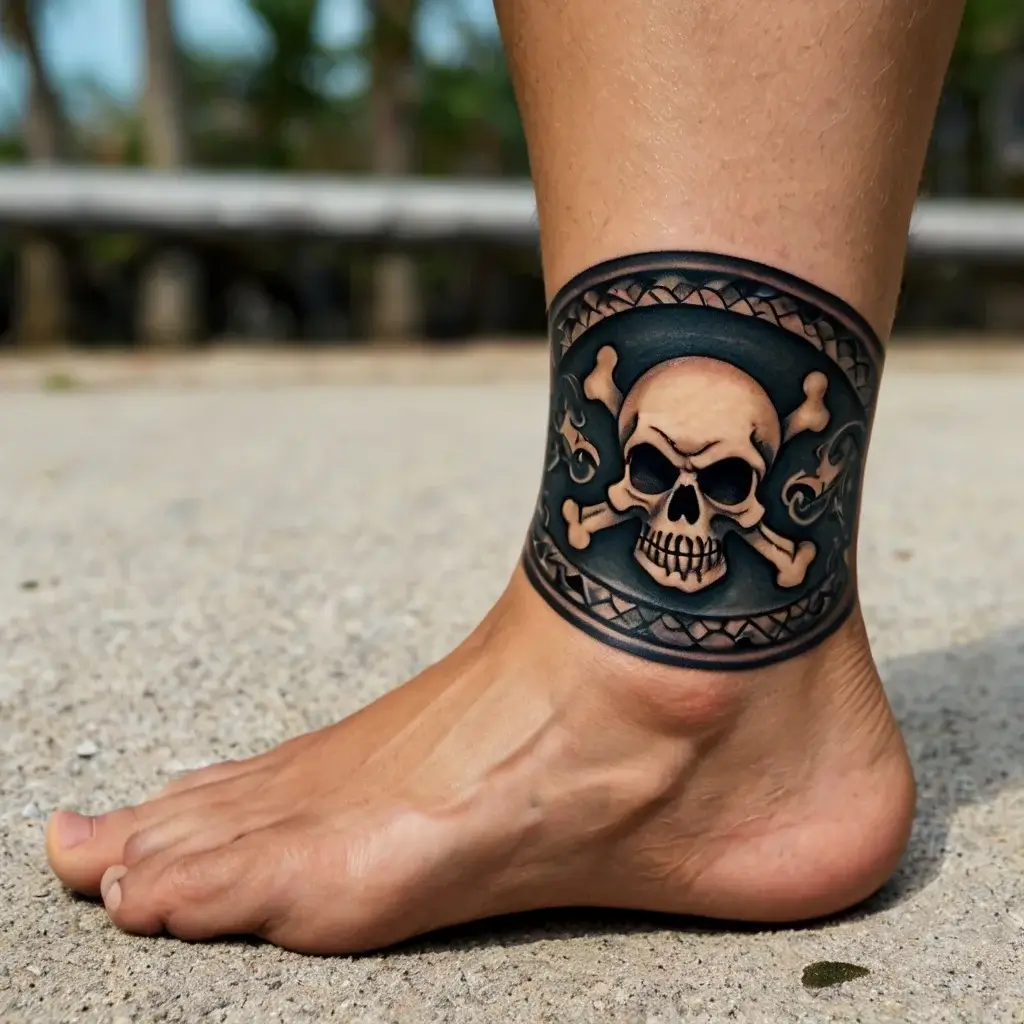
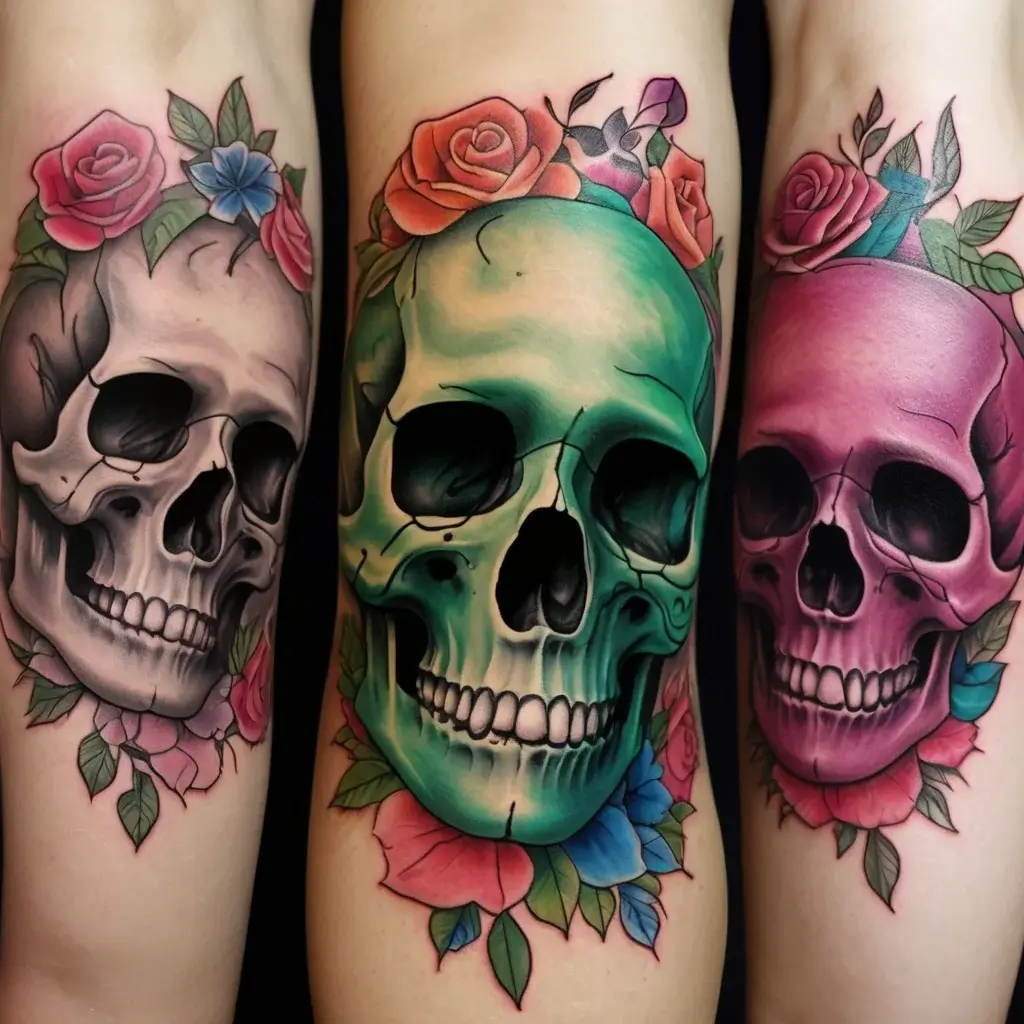
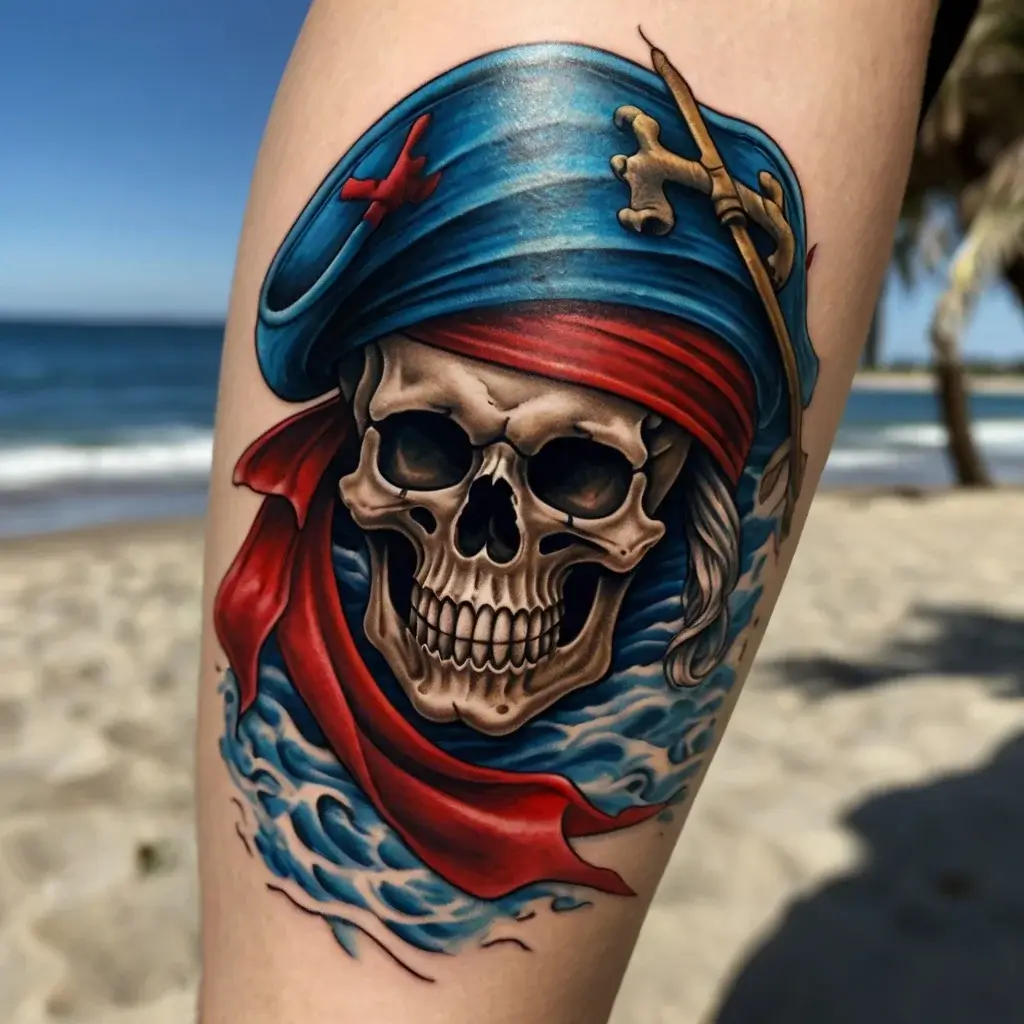
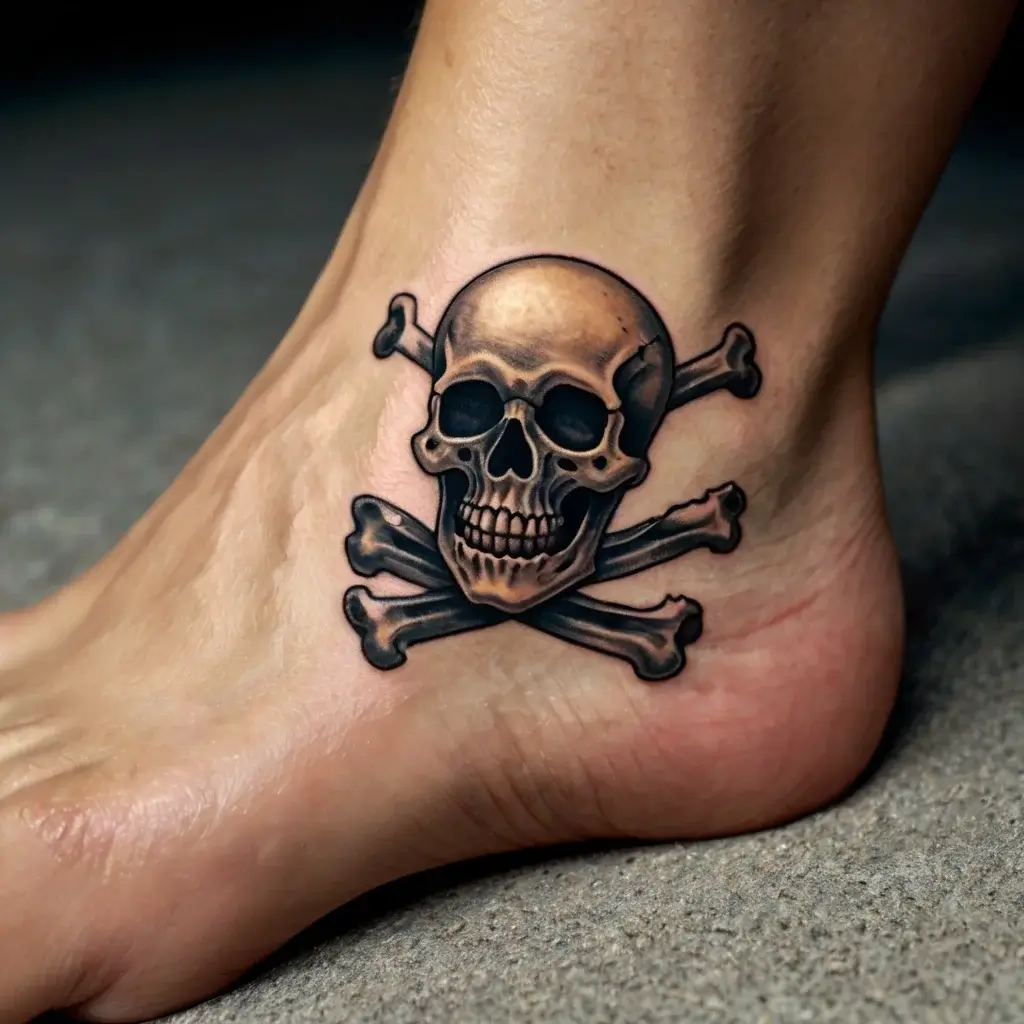
Jolly Roger Tattoos and Gender
Anyone can rock a Jolly Roger tattoo—men, women, and everyone in between. It’s become a symbol for anyone who values strength and freedom, no matter their gender. It stands for breaking free from typical labels and showing the world who you really are.
So, a Jolly Roger tattoo? It’s not just a cool design from pirate stories. It’s a powerful symbol for anyone who wants to show that they live life on their own terms.
Jolly Roger Tattoos and Their Placement
Where you put your tattoo also says a lot. On your forearm, it might shout out your brave side to the world. On your back or chest, it’s more like a secret talisman, guarding your heart or having your back, literally. The right spot makes the tattoo even more special.
Conclusion
Jolly Roger tattoos go beyond pirate flags and stories. They stand for freedom, rebellion, and living life on your own terms. Whether it’s a symbol of defiance, adventure, or loyalty, this tattoo captures the spirit of those who don’t follow the crowd.
Over time, the meaning of the Jolly Roger has shifted from fear to empowerment. It’s no longer just for pirates; it’s for anyone who values independence and strength. This tattoo works for both men and women, showing off a bold and fearless approach to life.
Getting a Jolly Roger tattoo isn’t just about a striking design. It’s about what it stands for—a life of courage, risk, and being true to yourself. For those who live with a fearless heart and value their freedom, the Jolly Roger is the perfect symbol.
